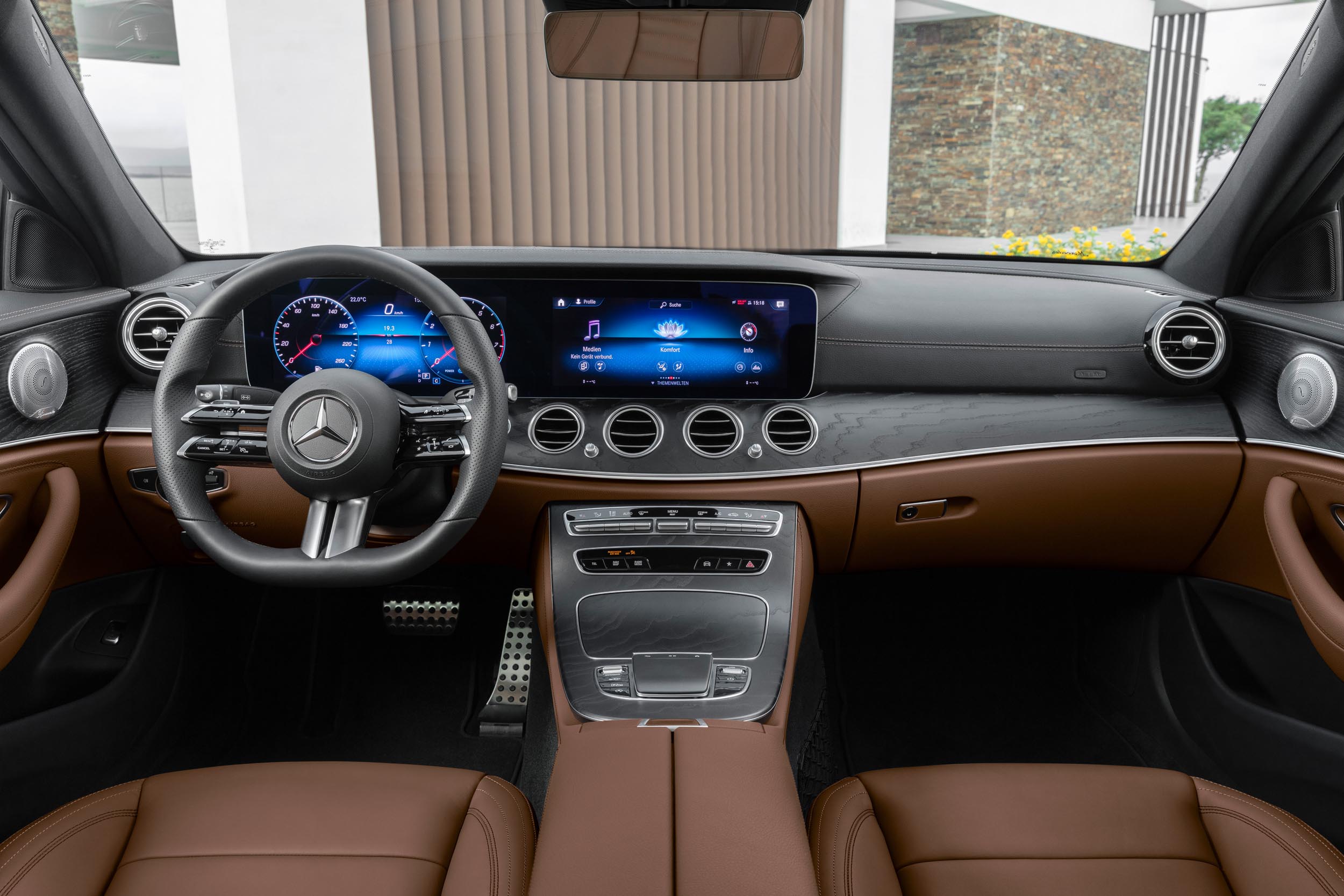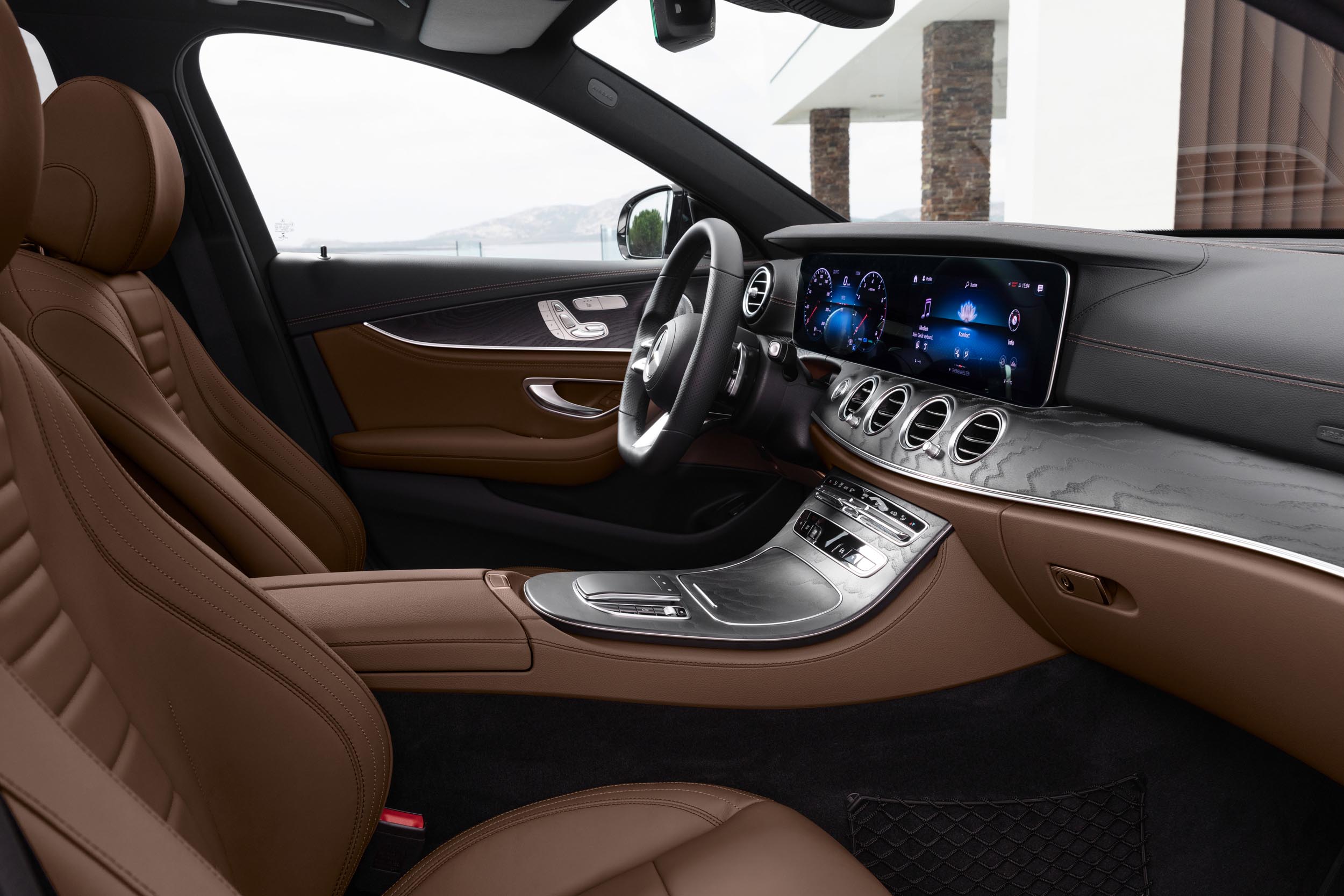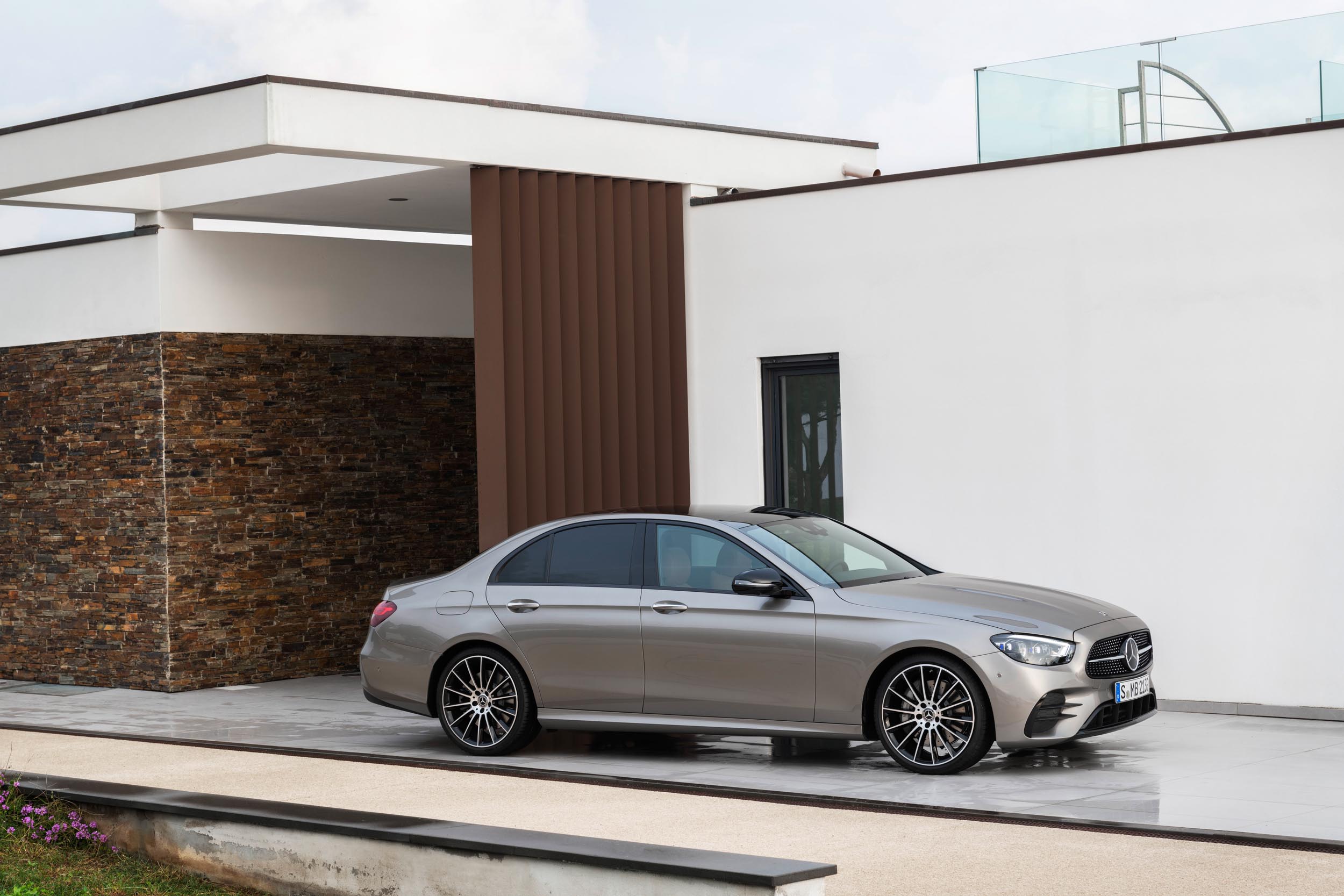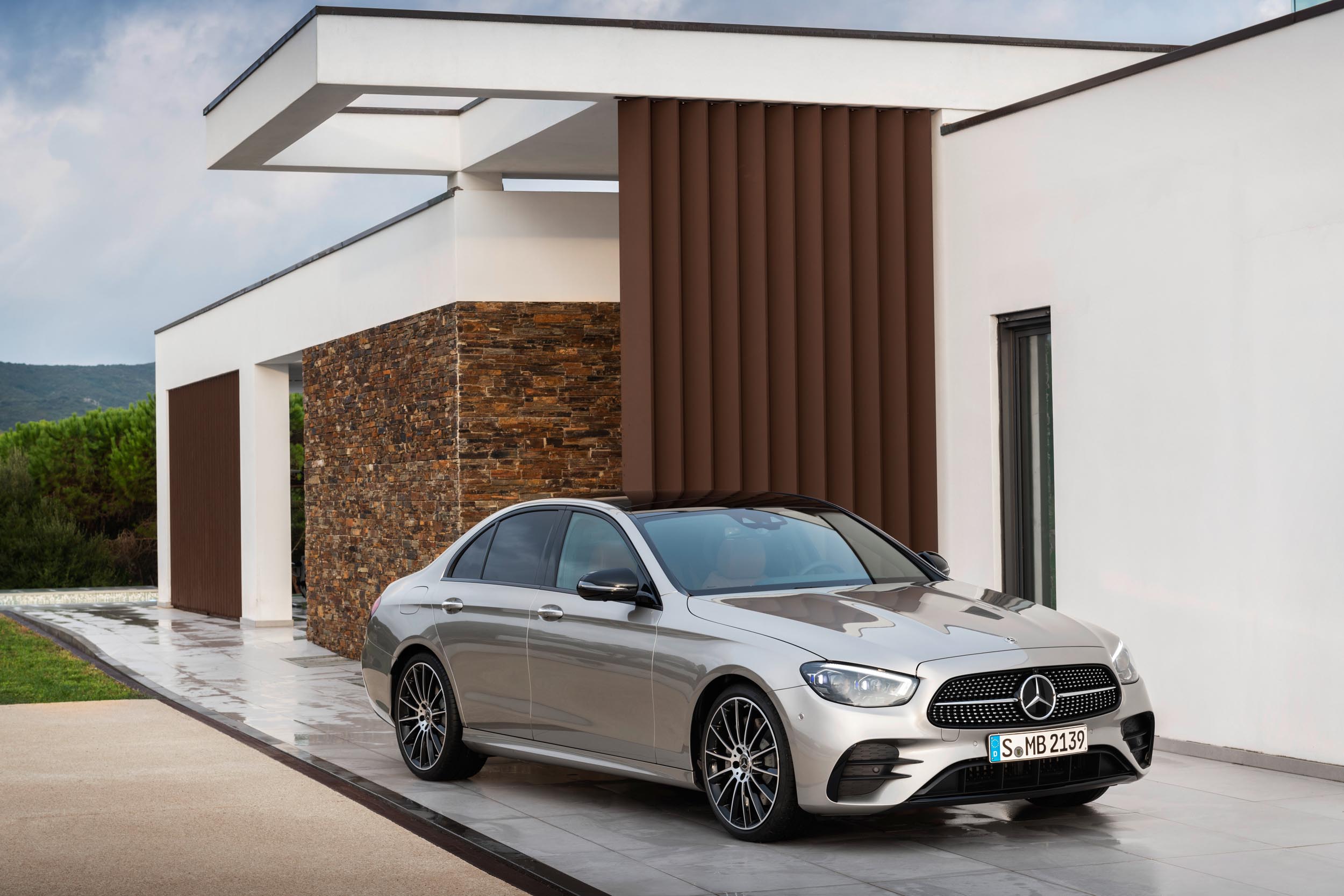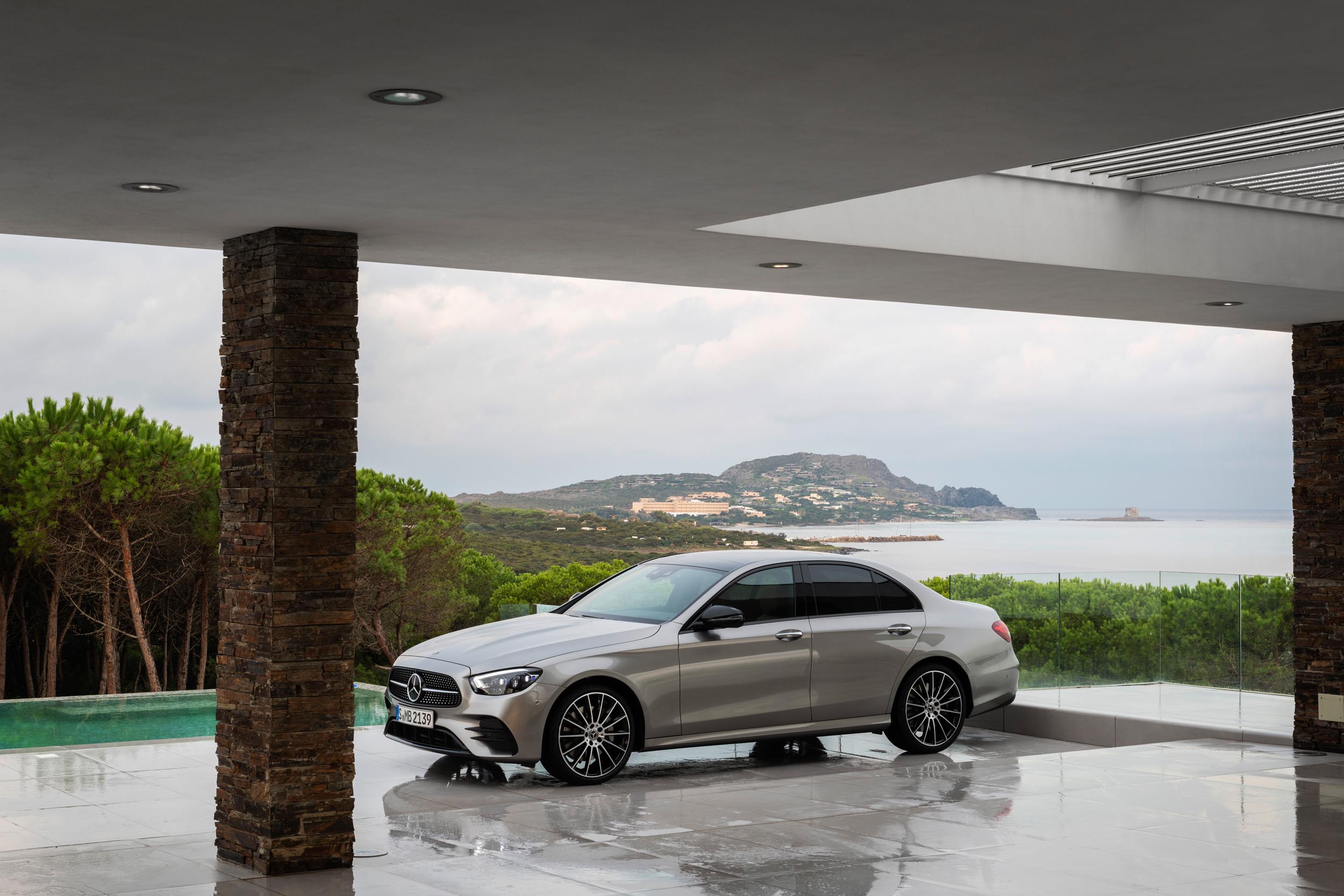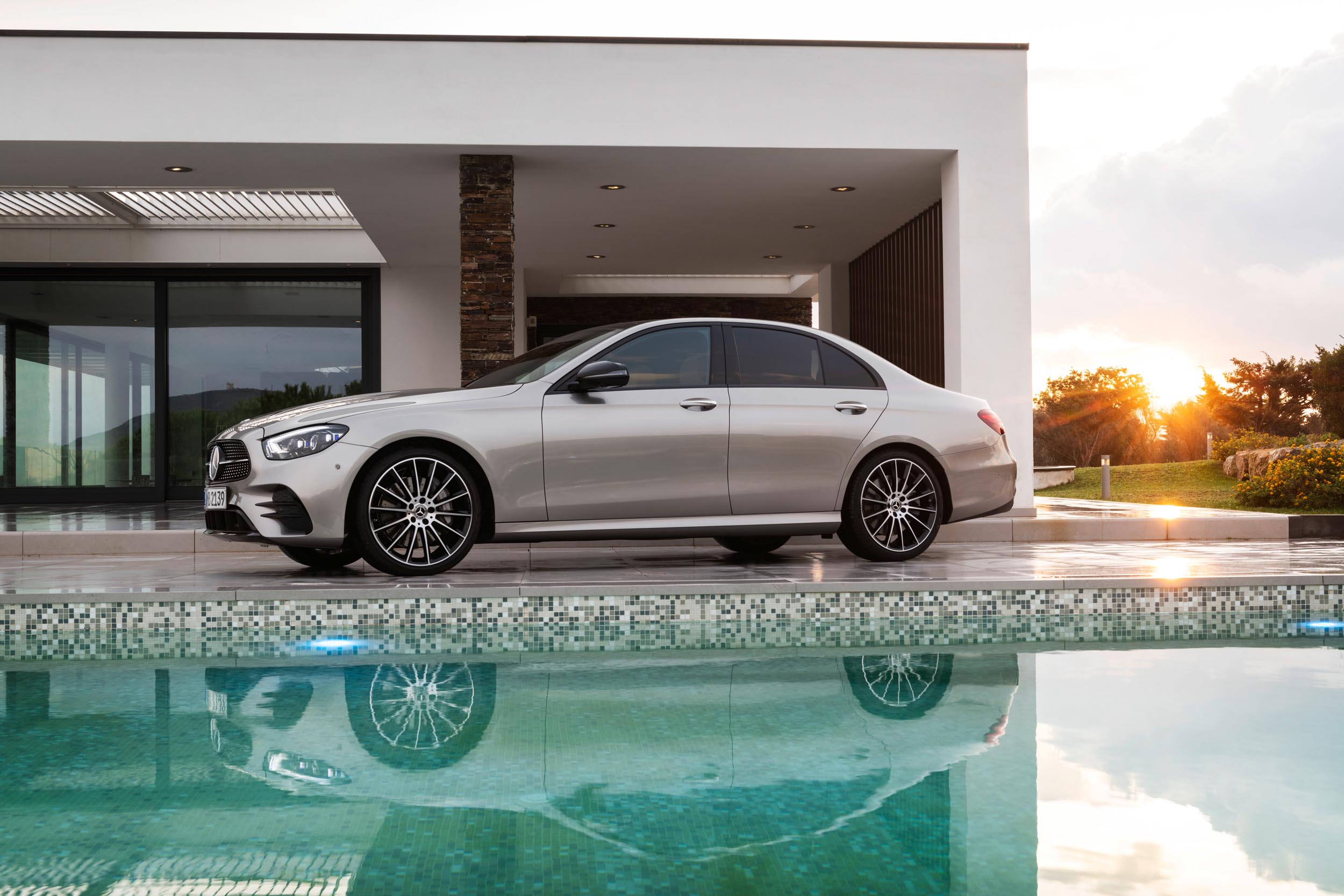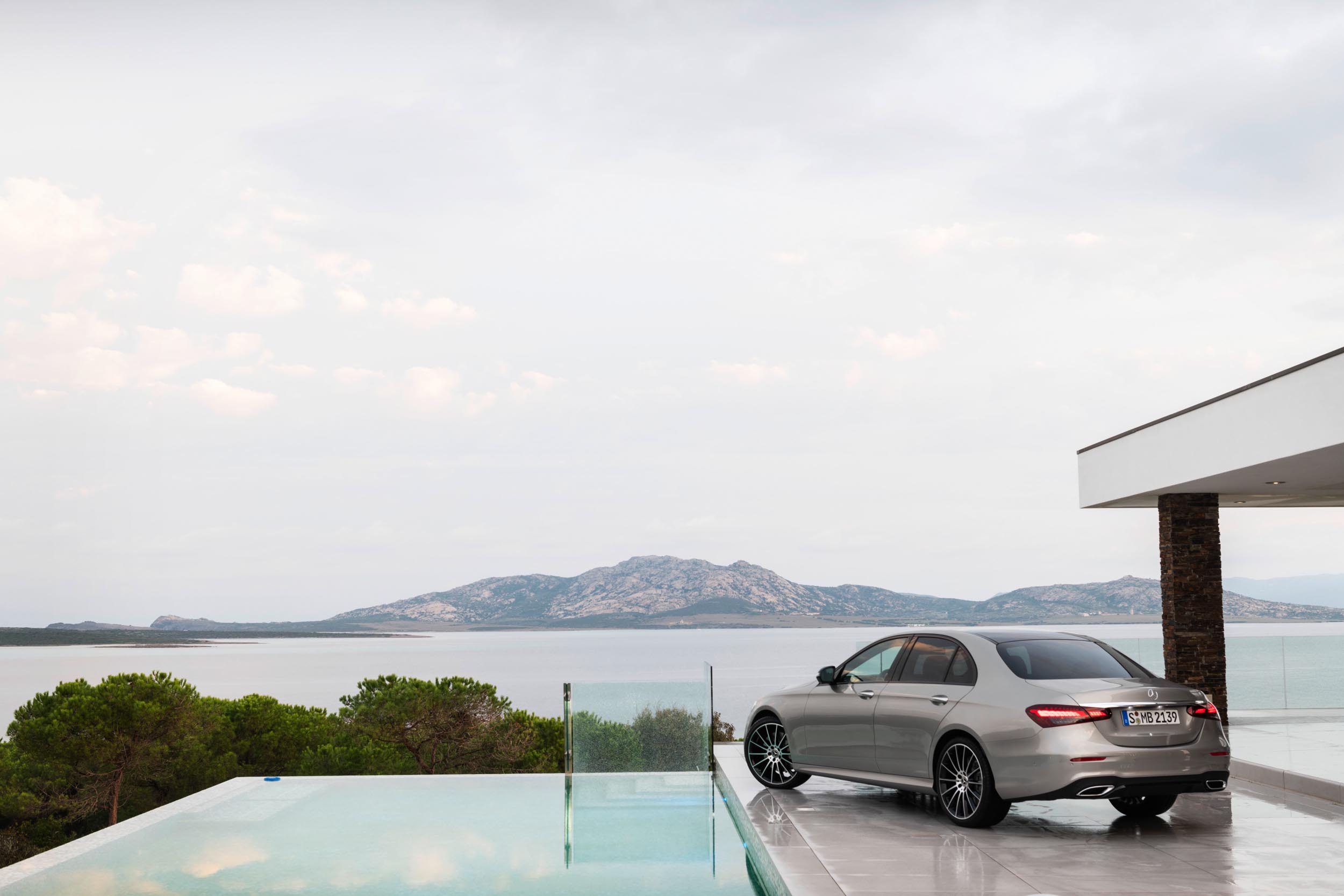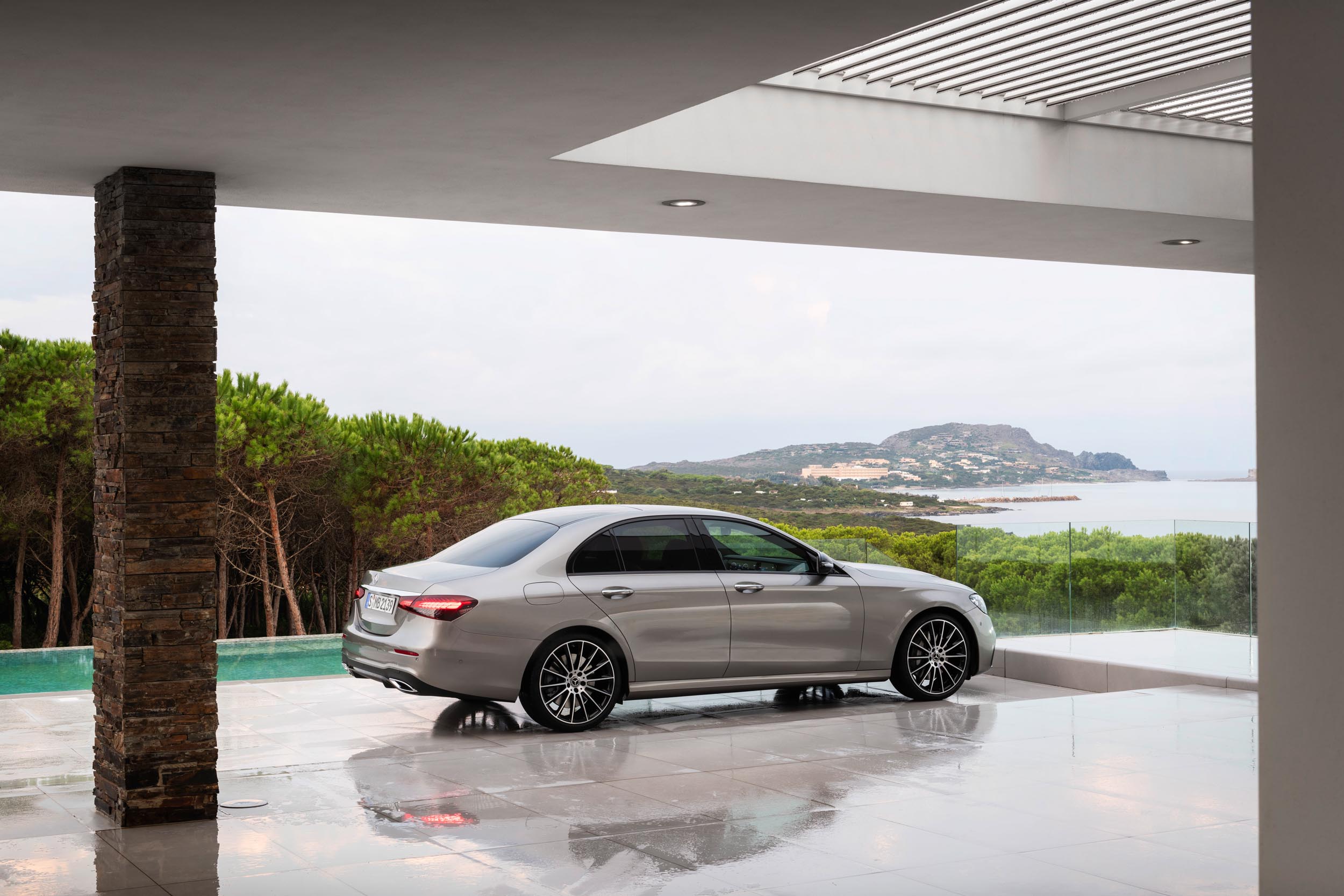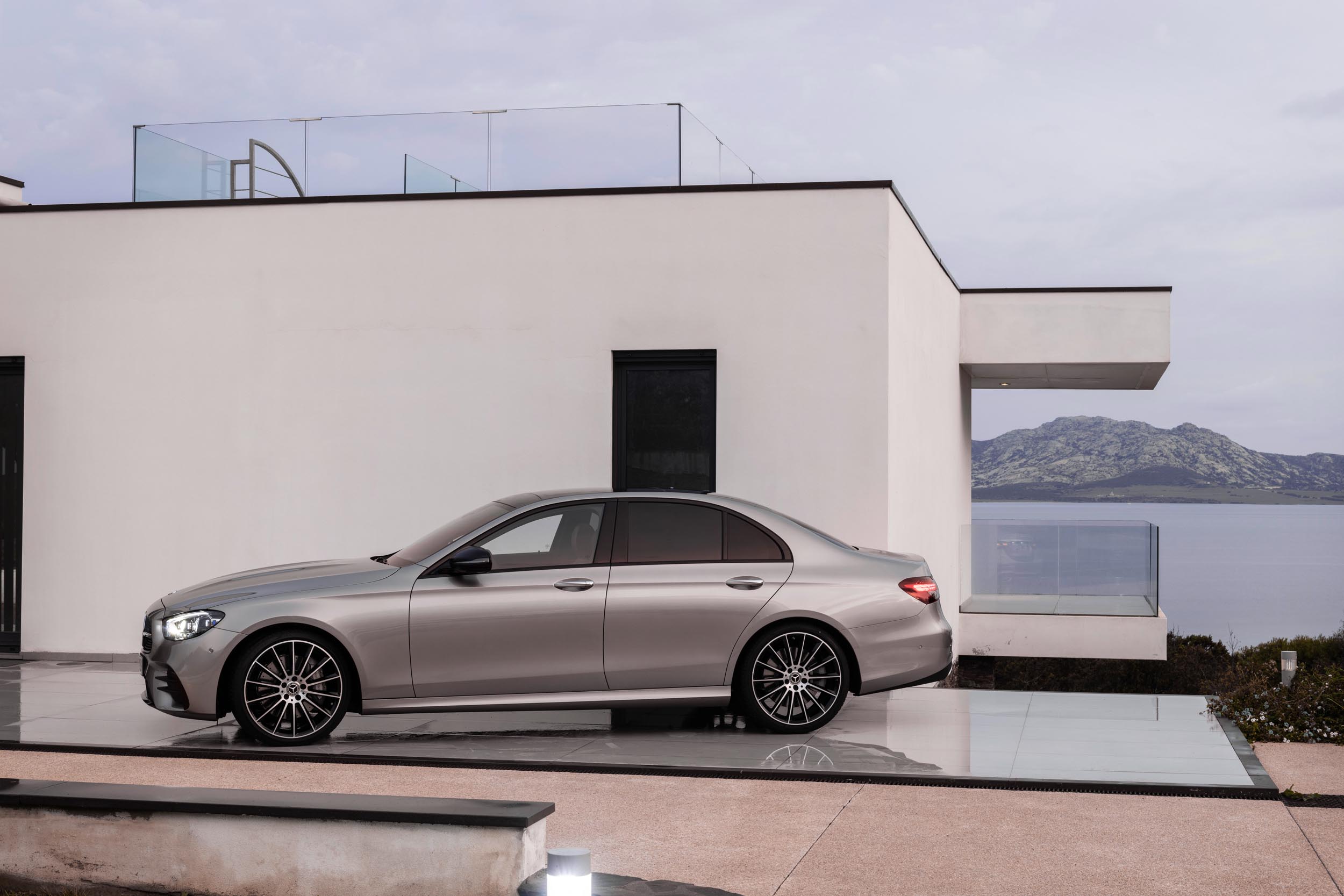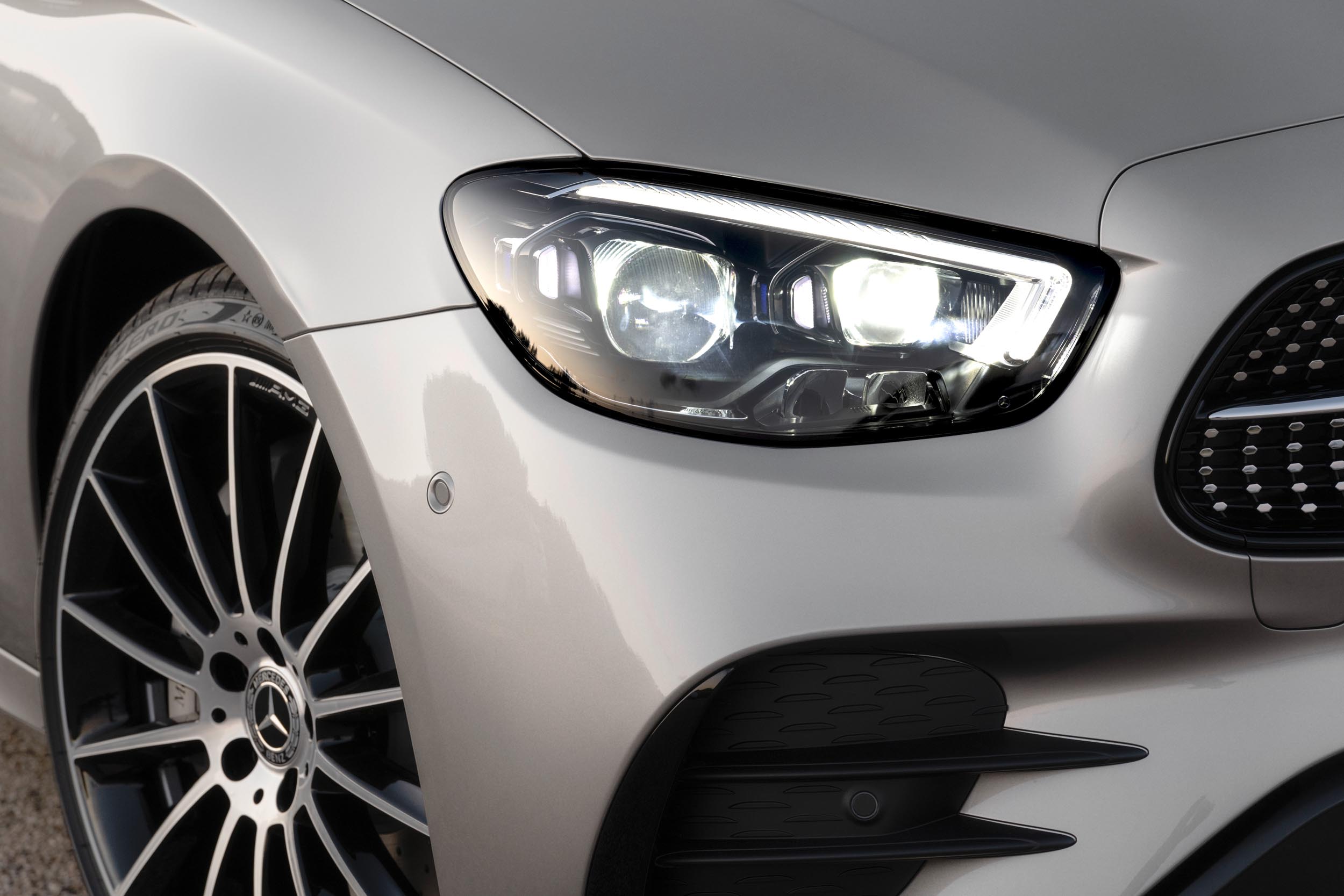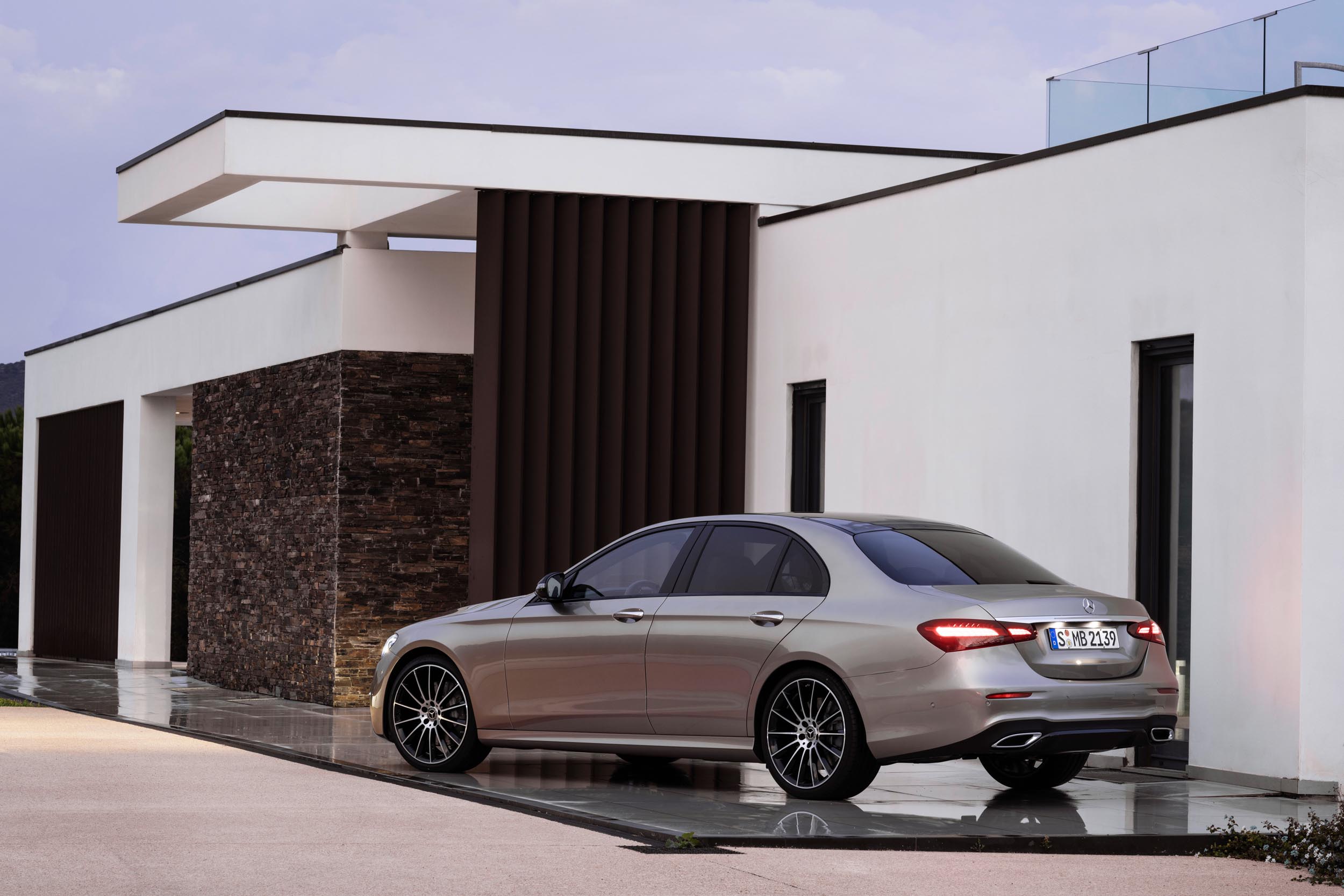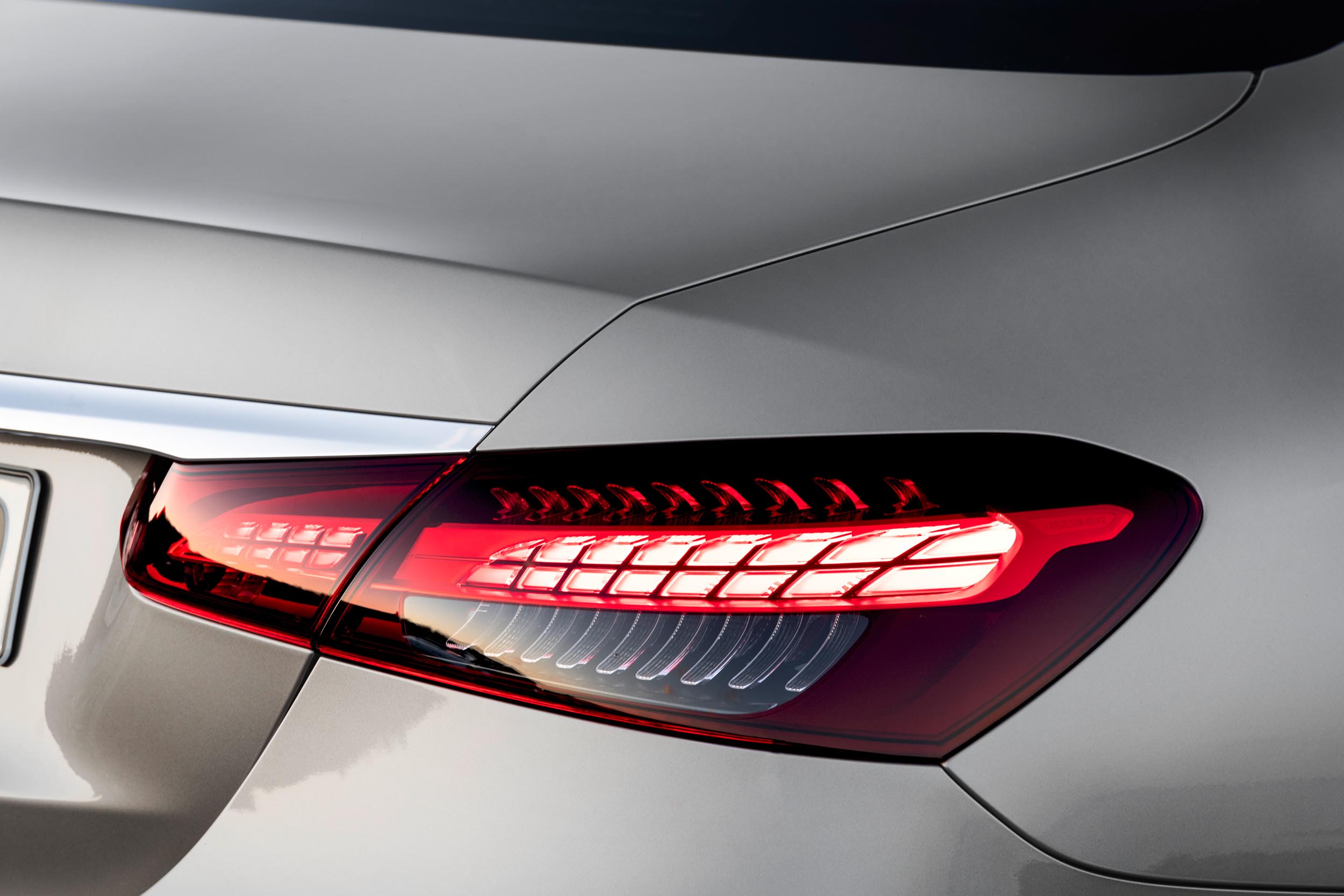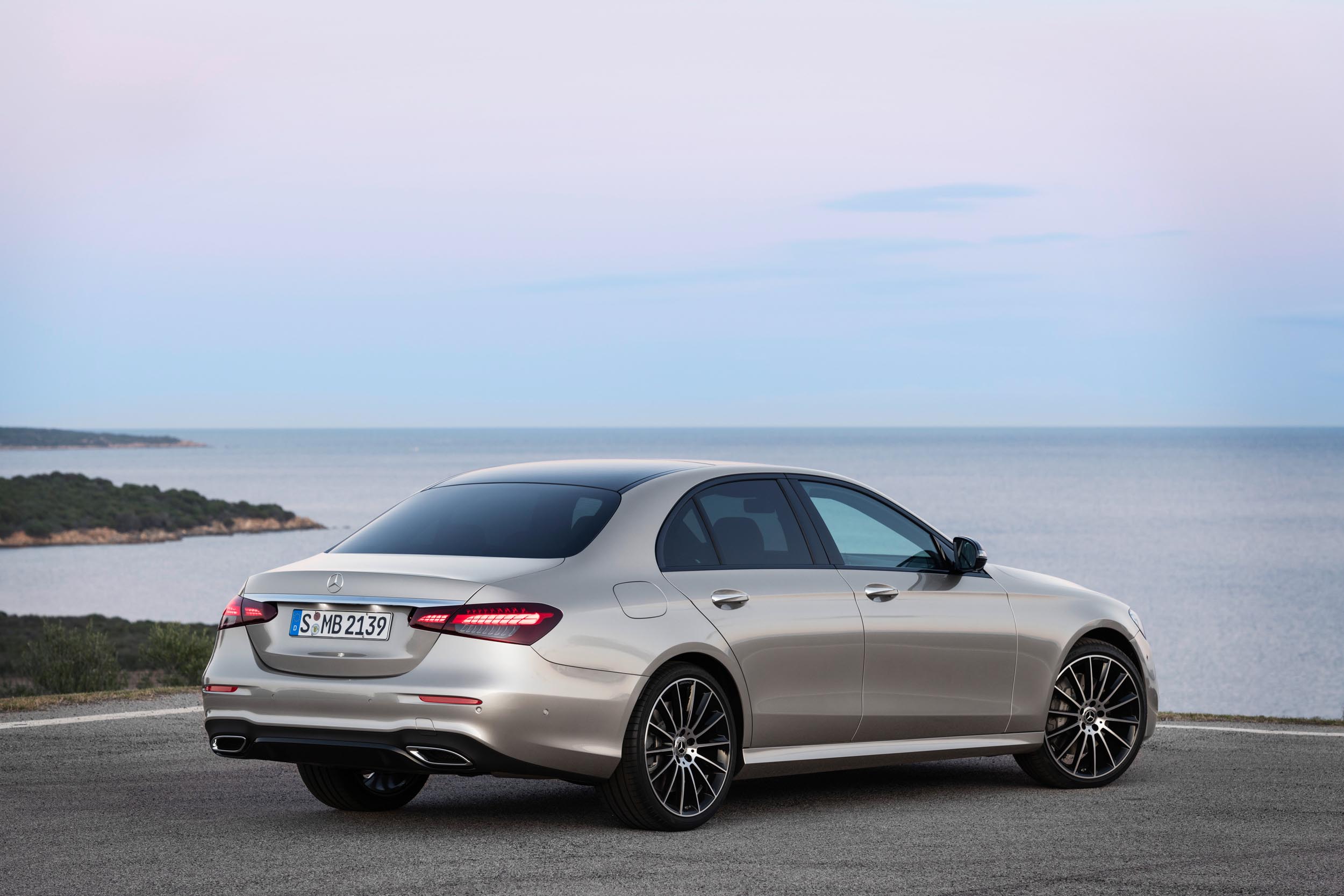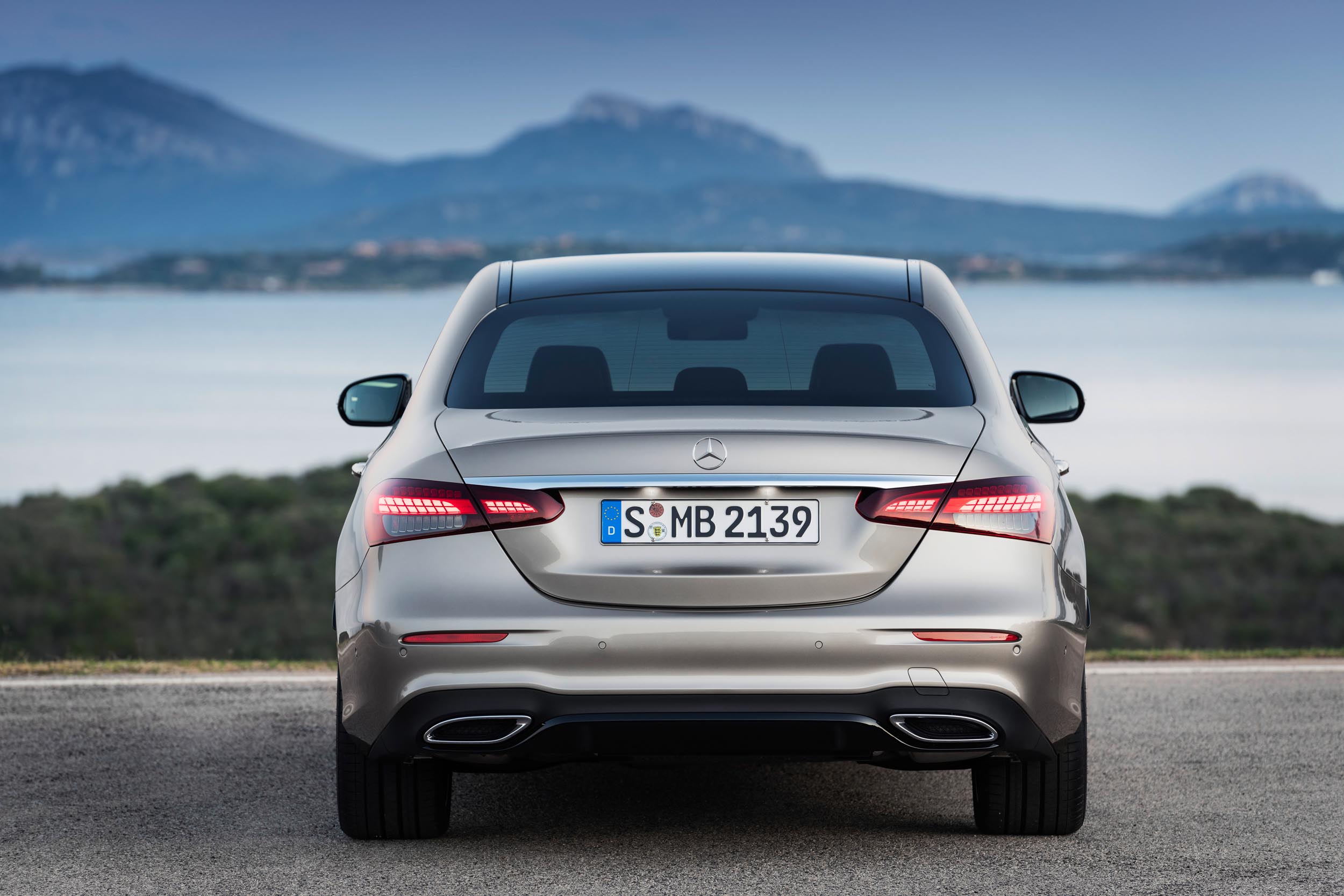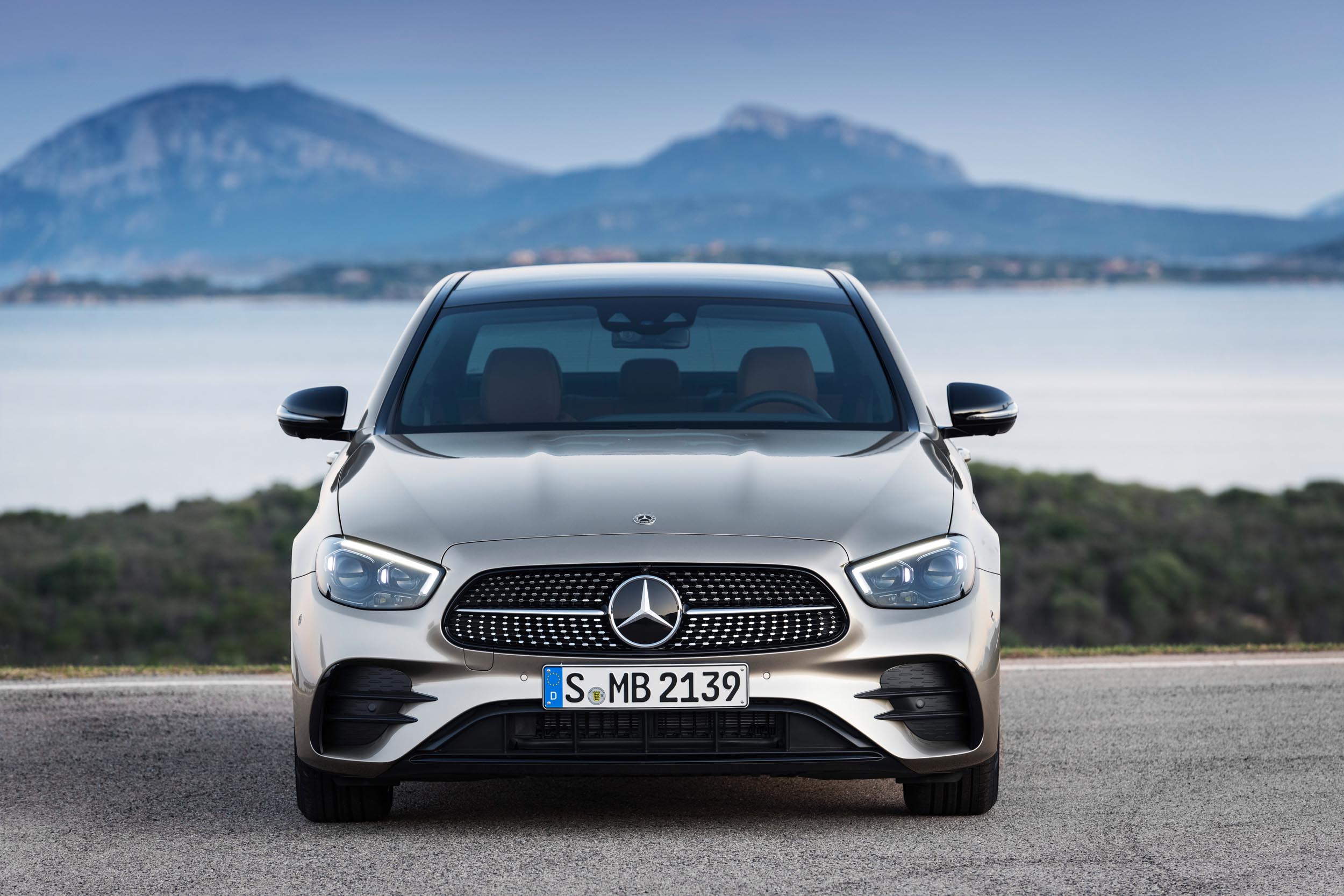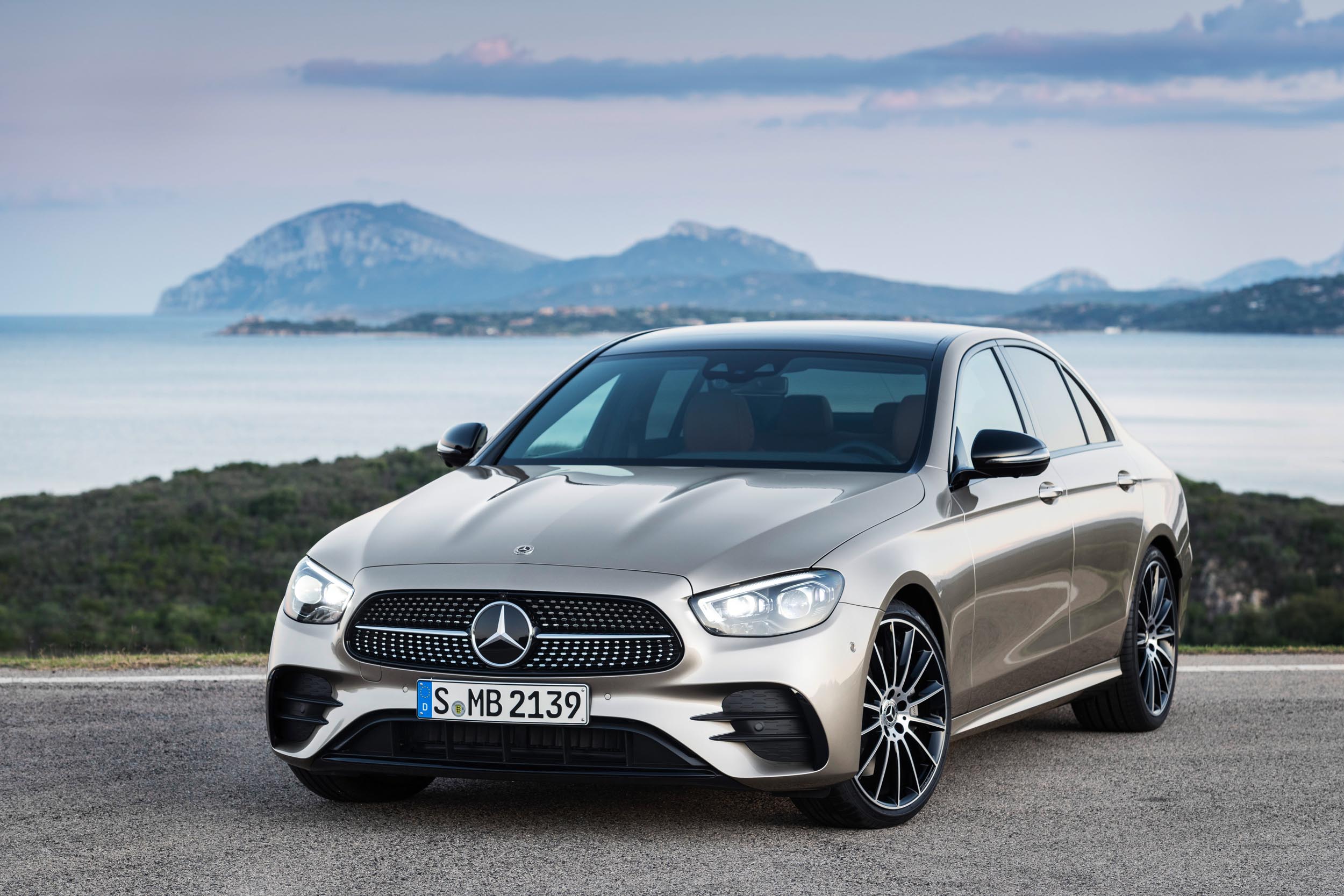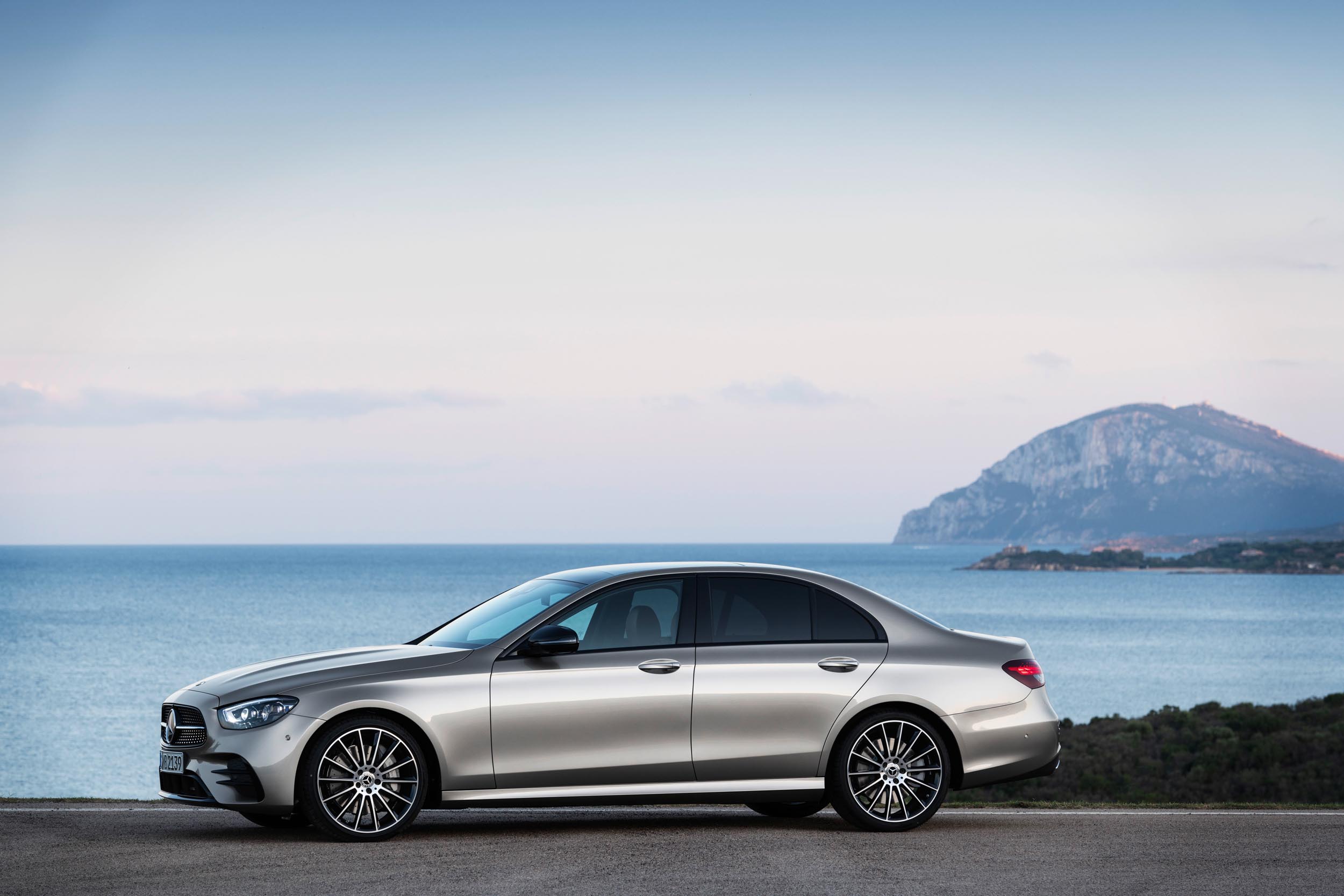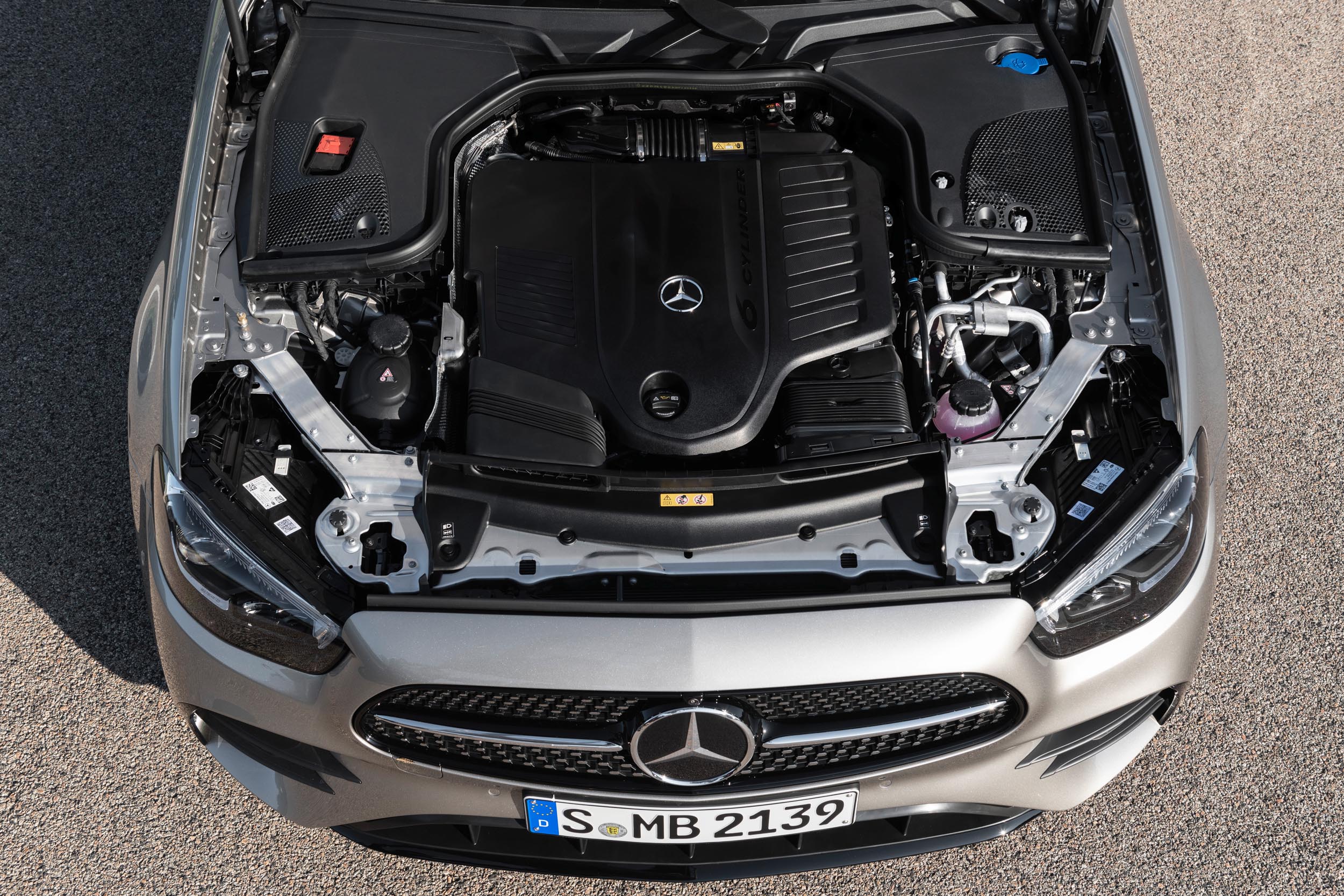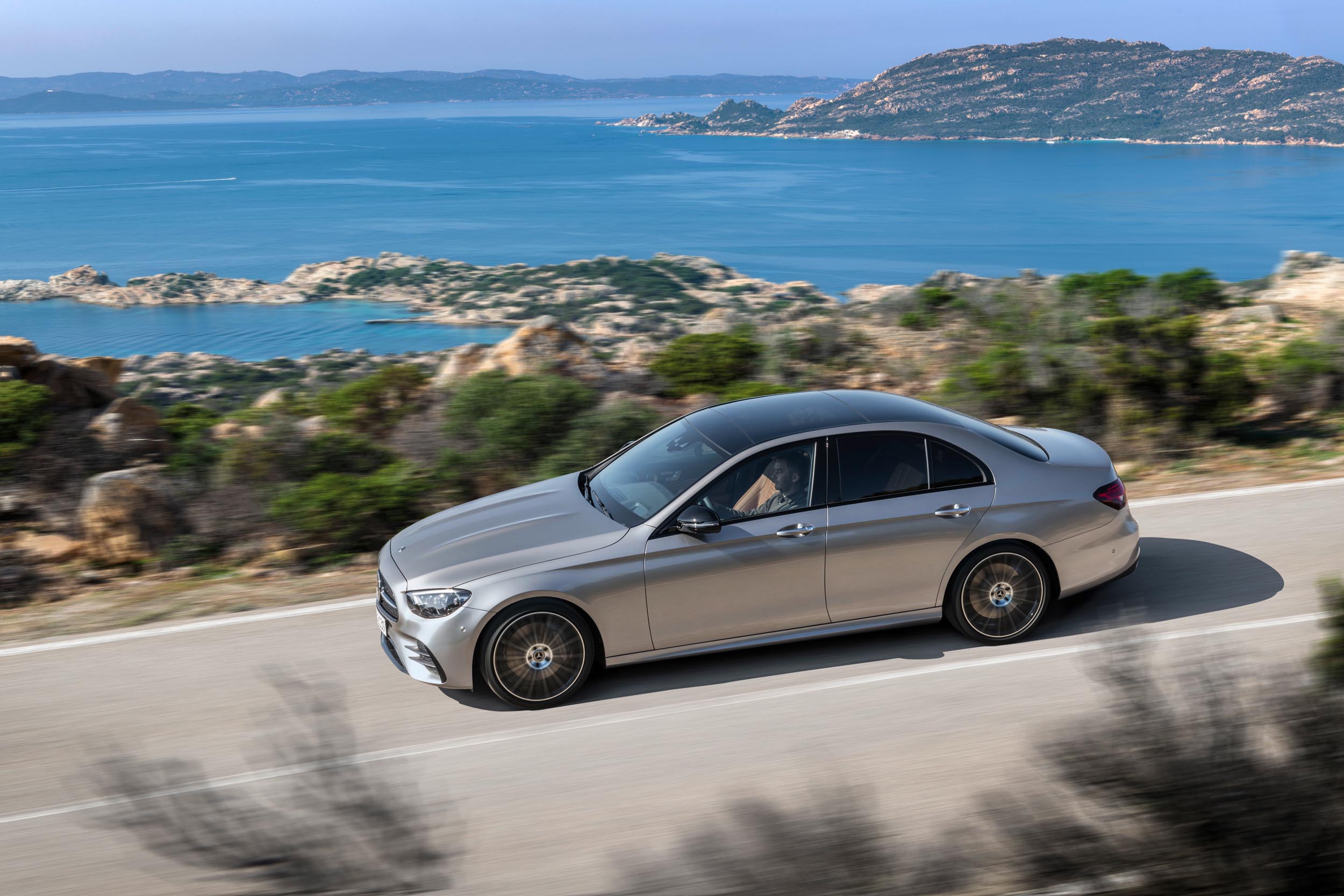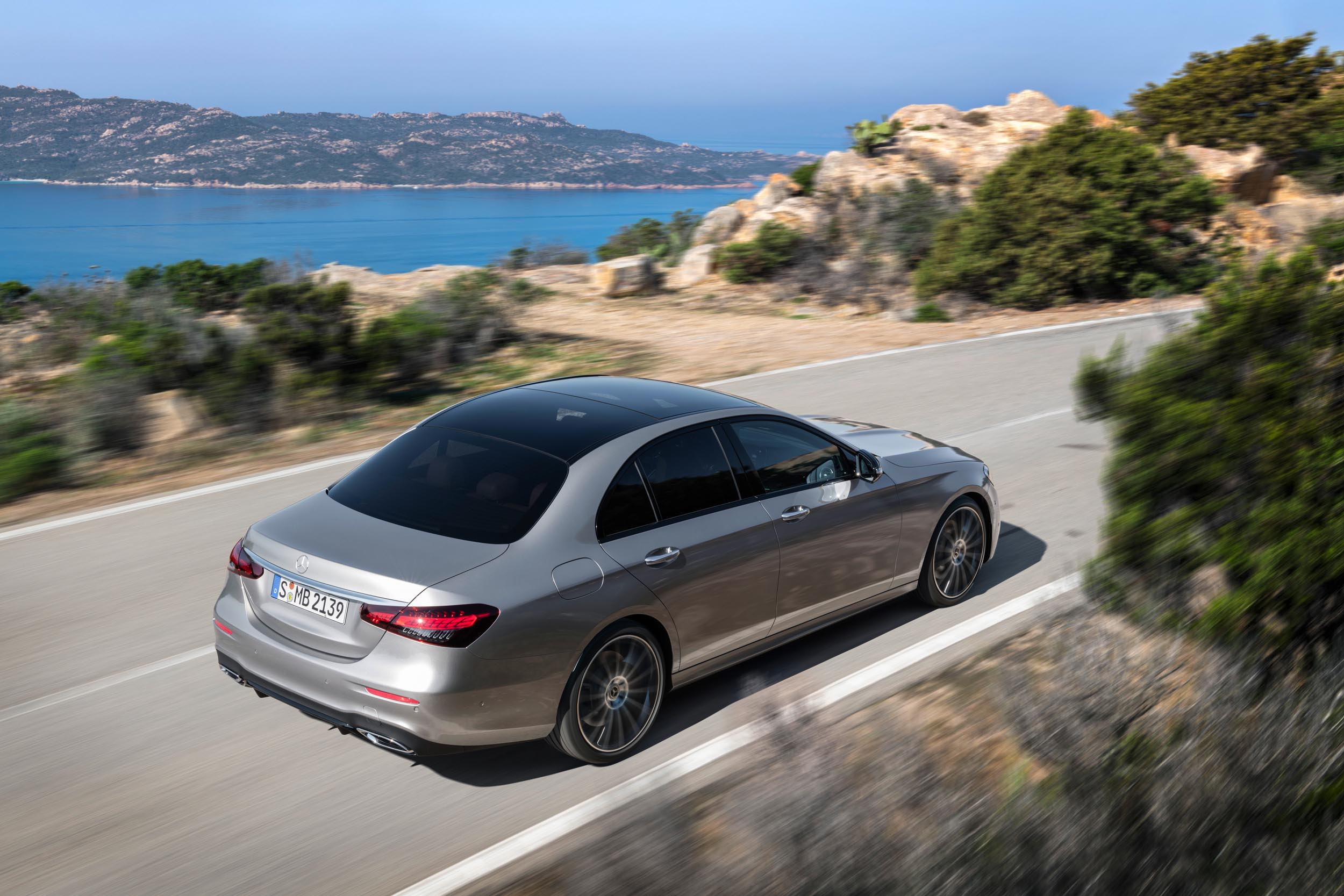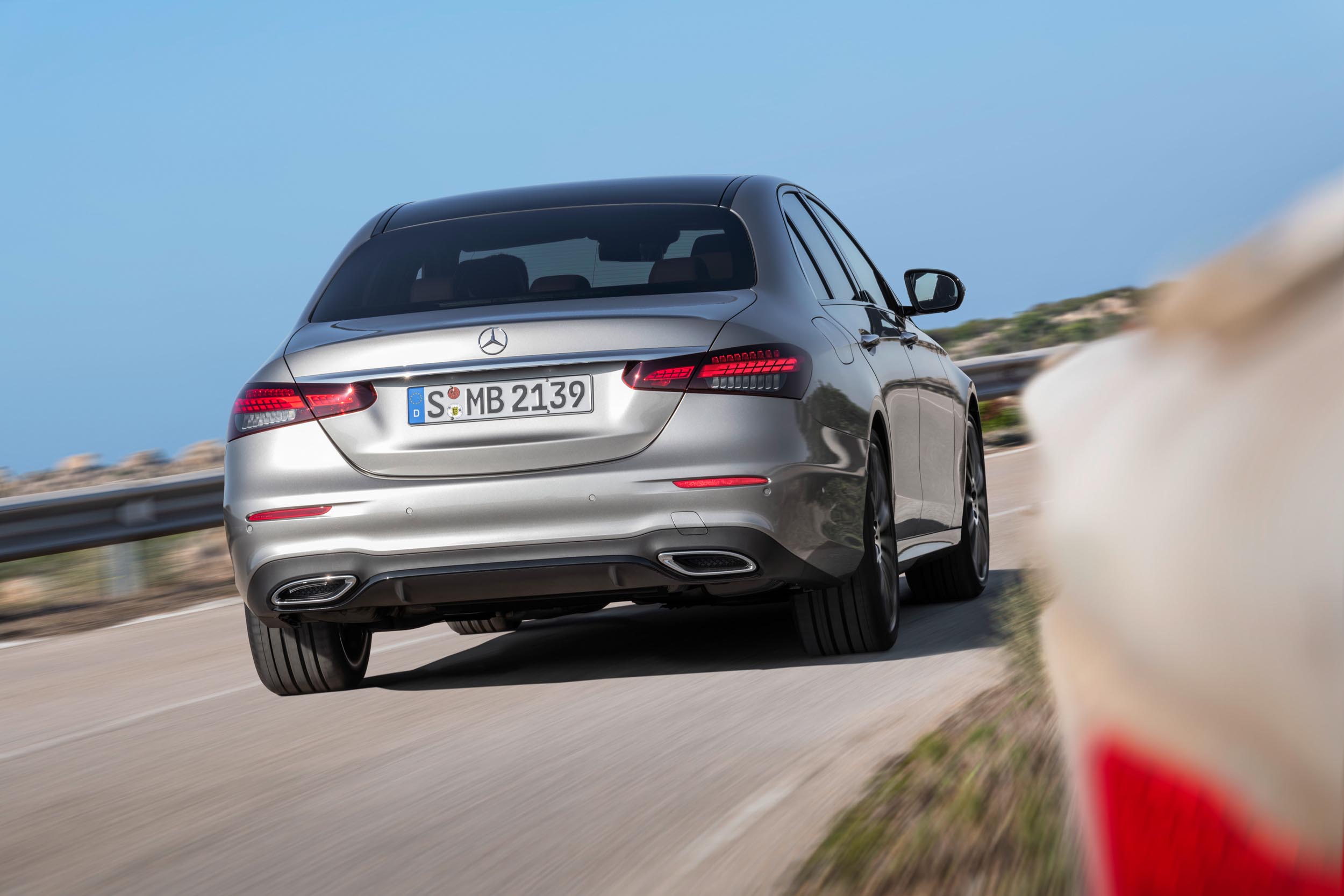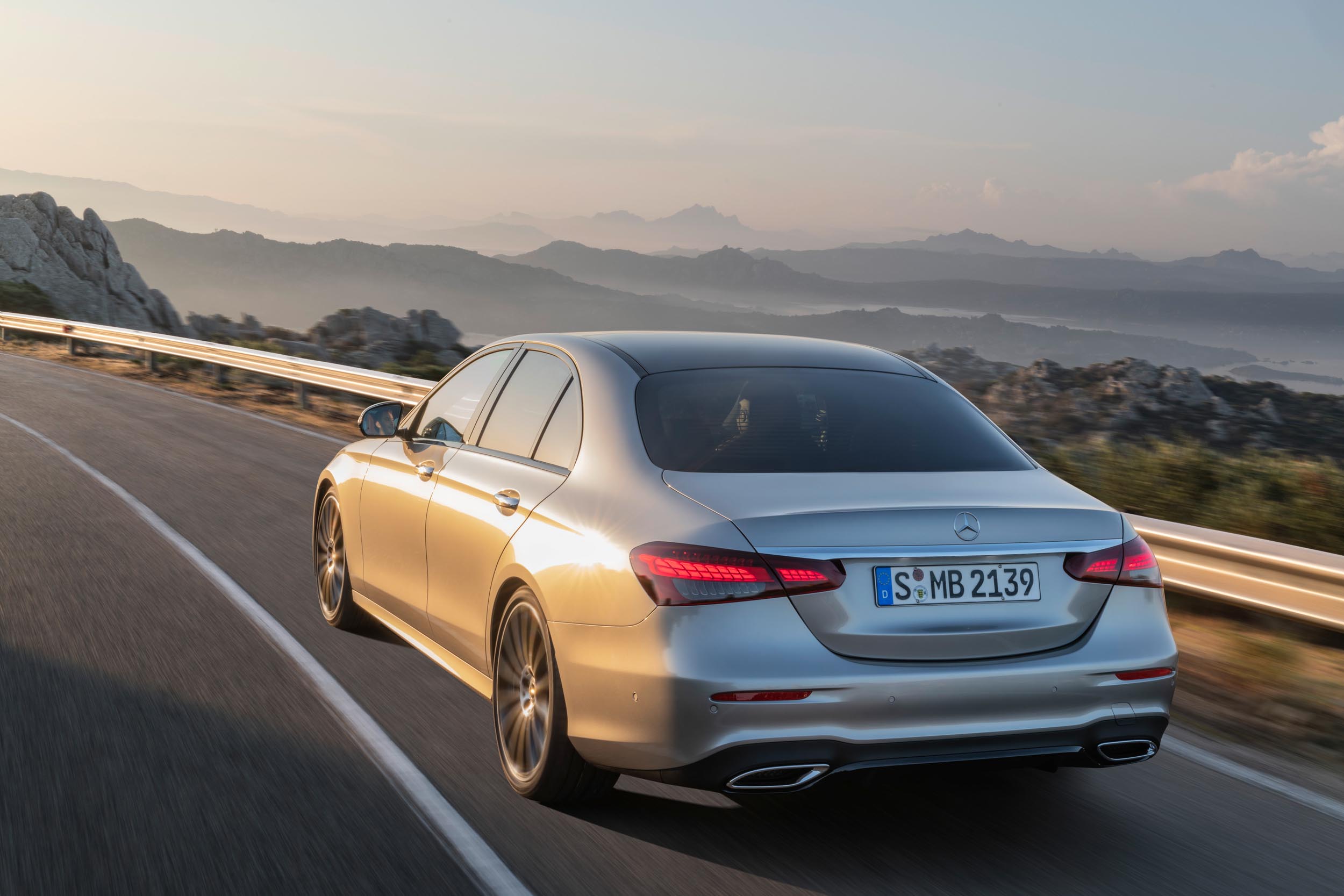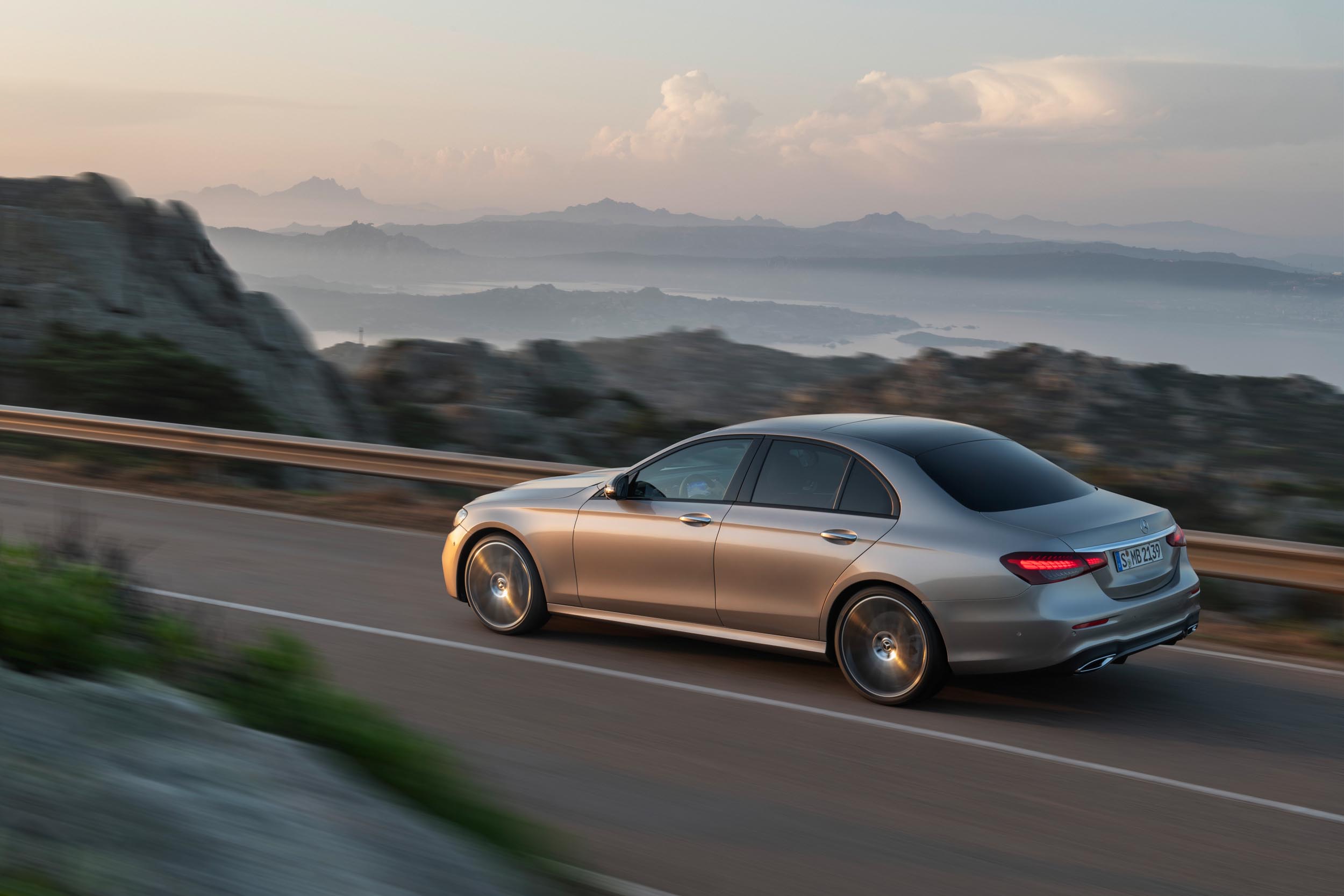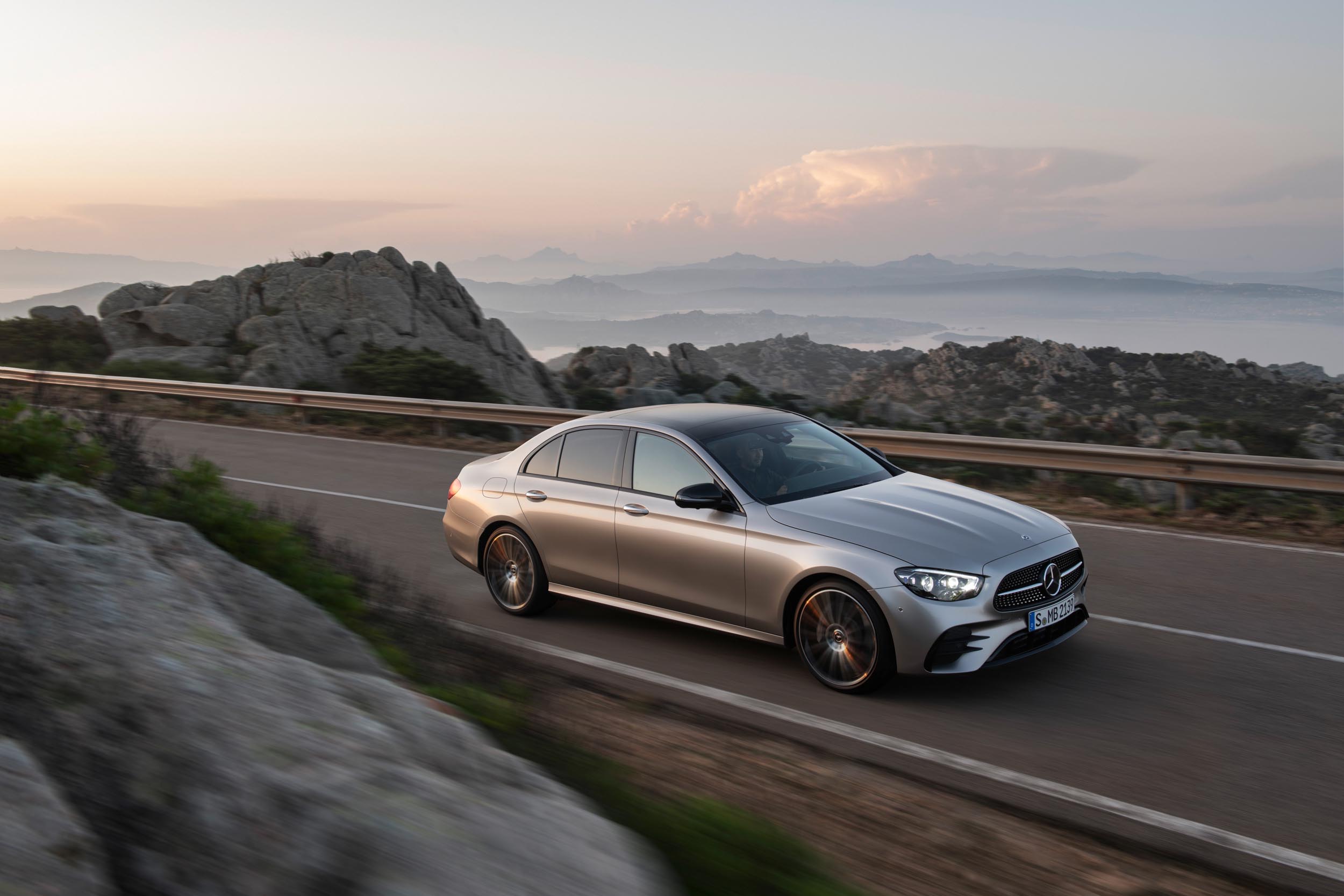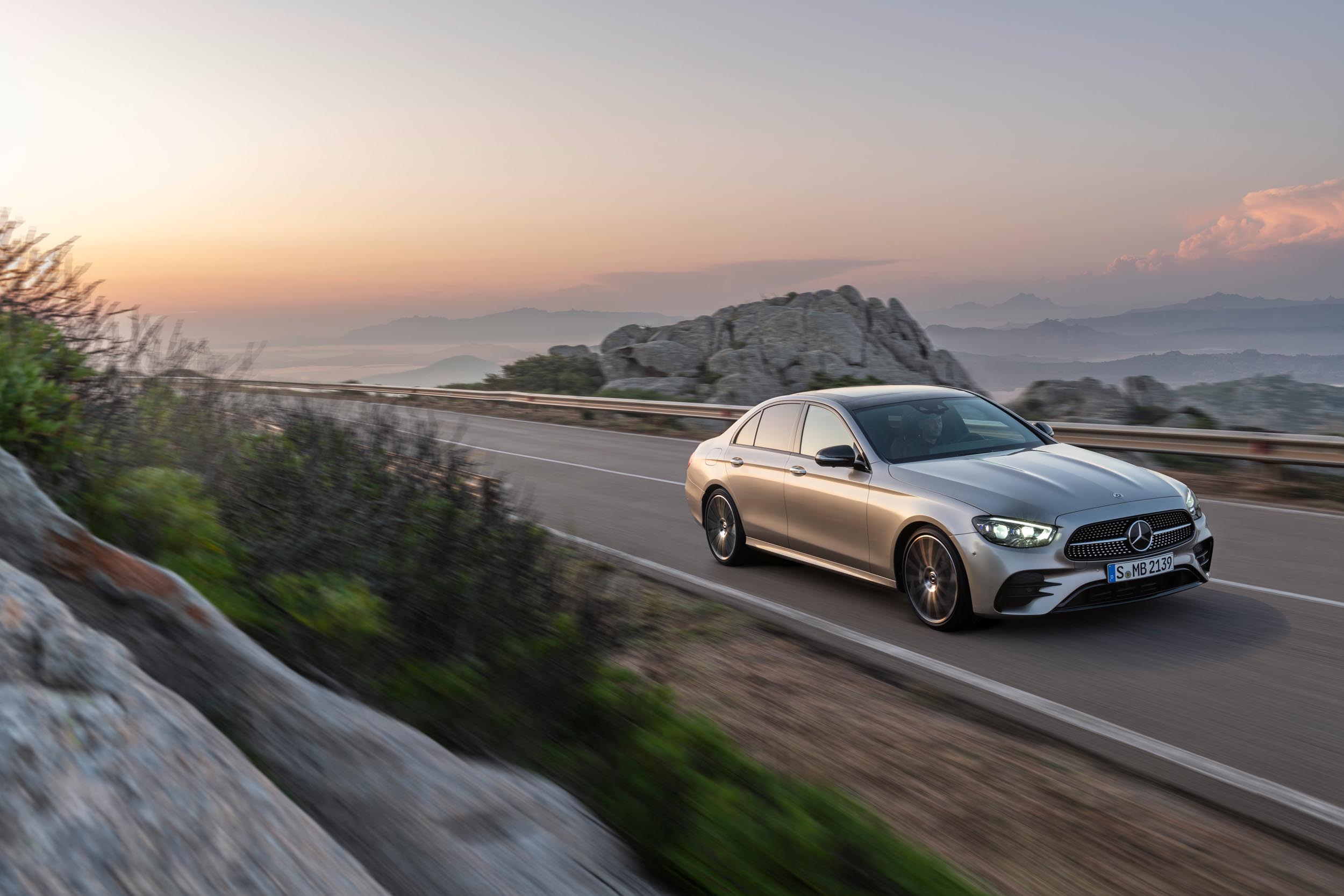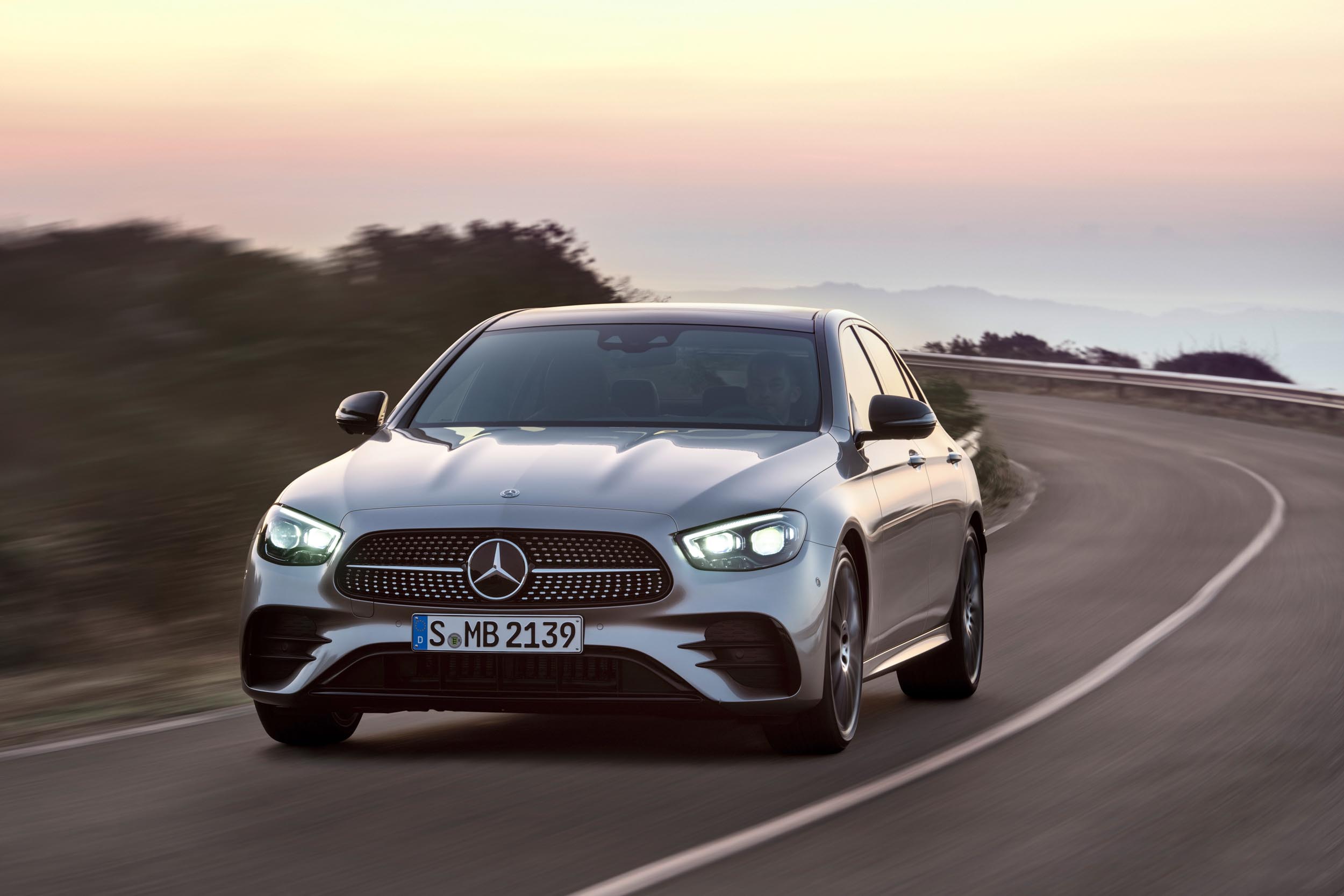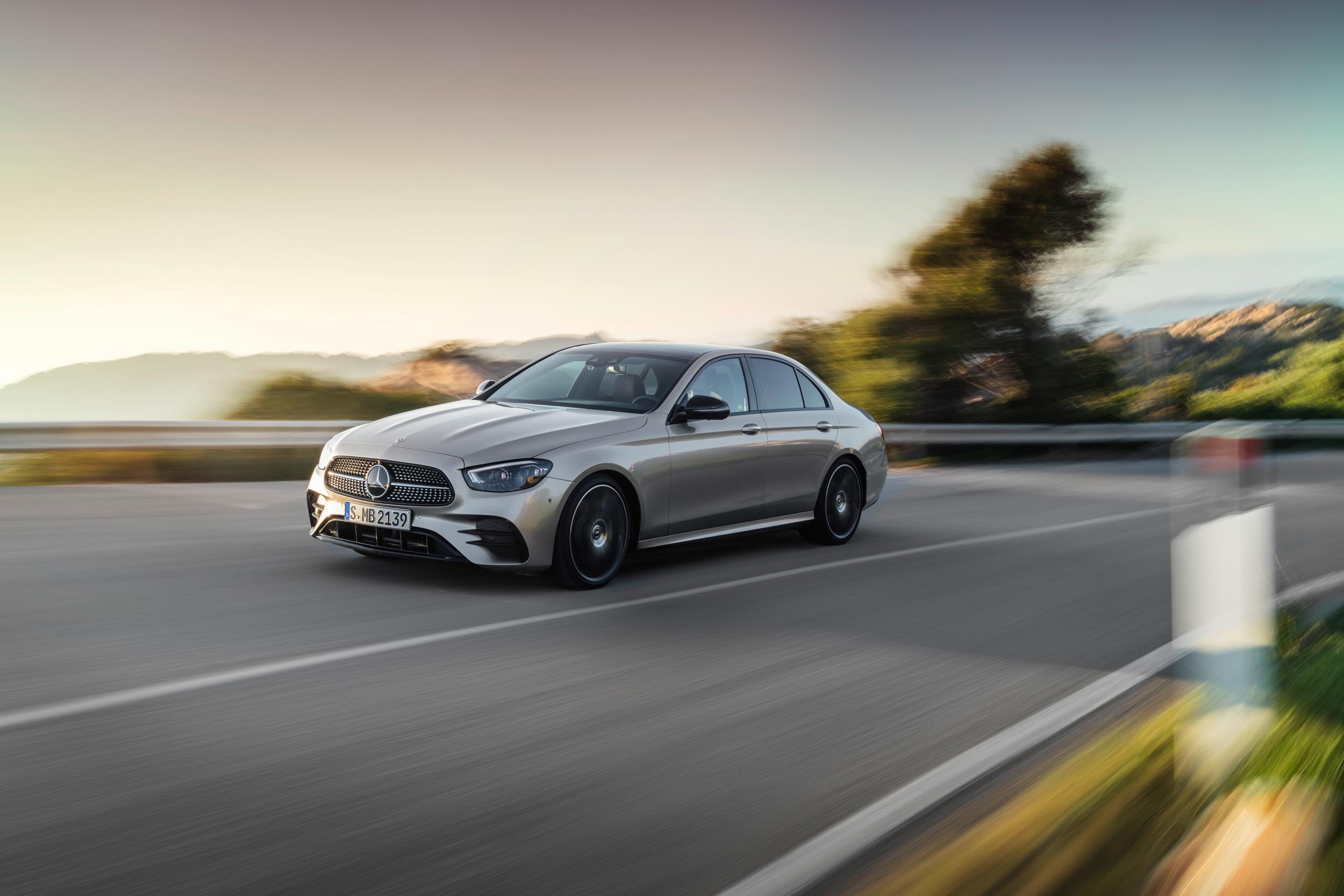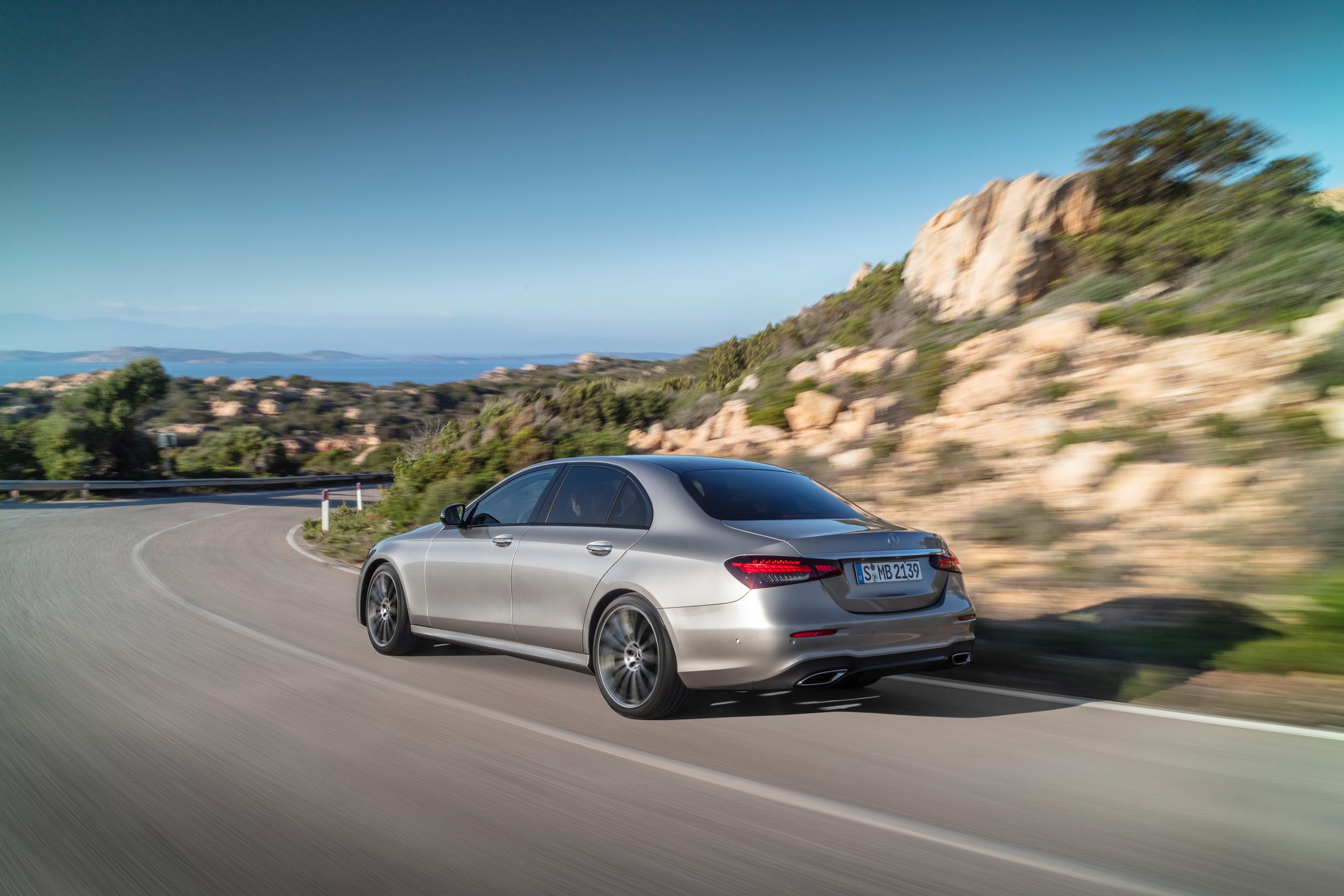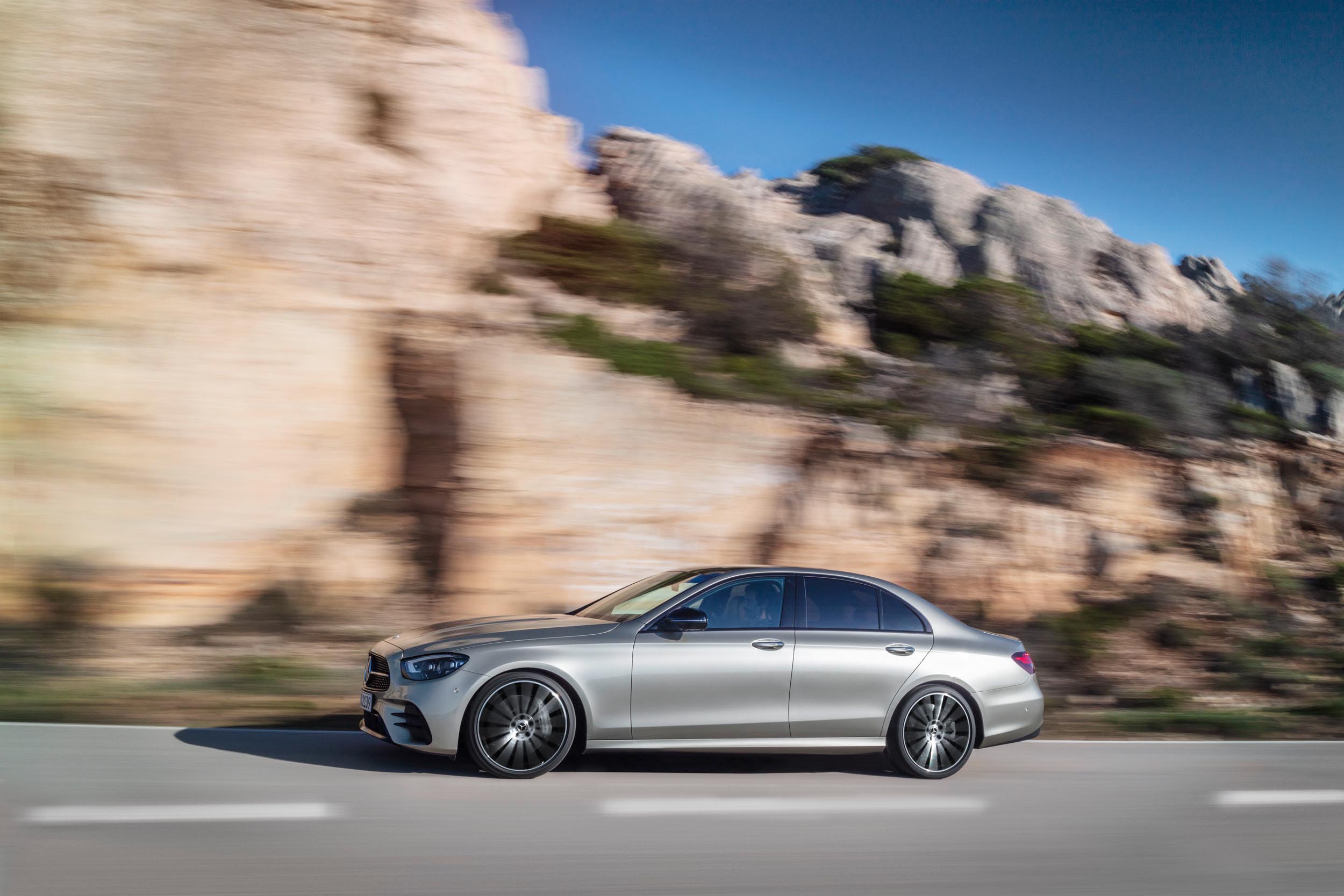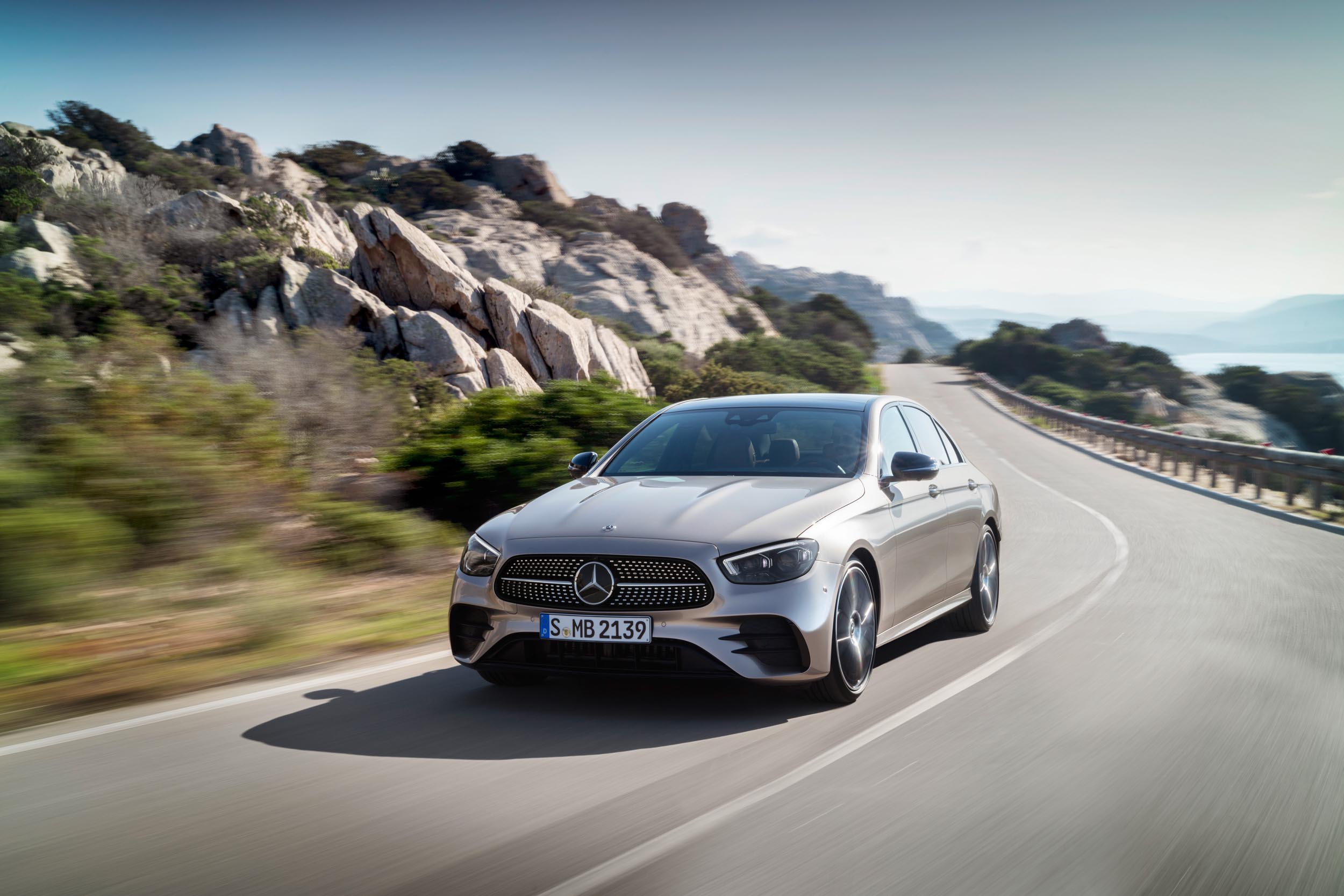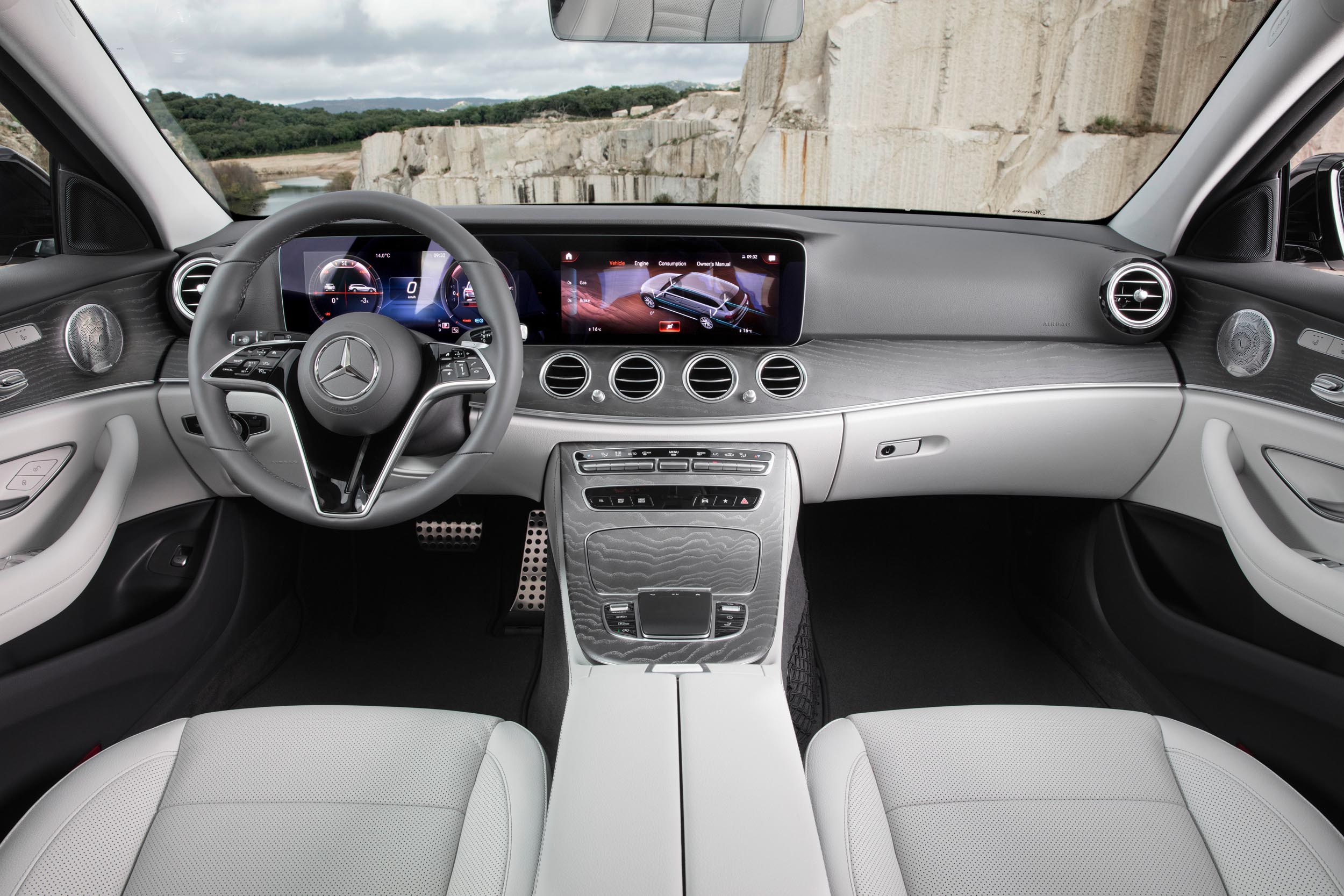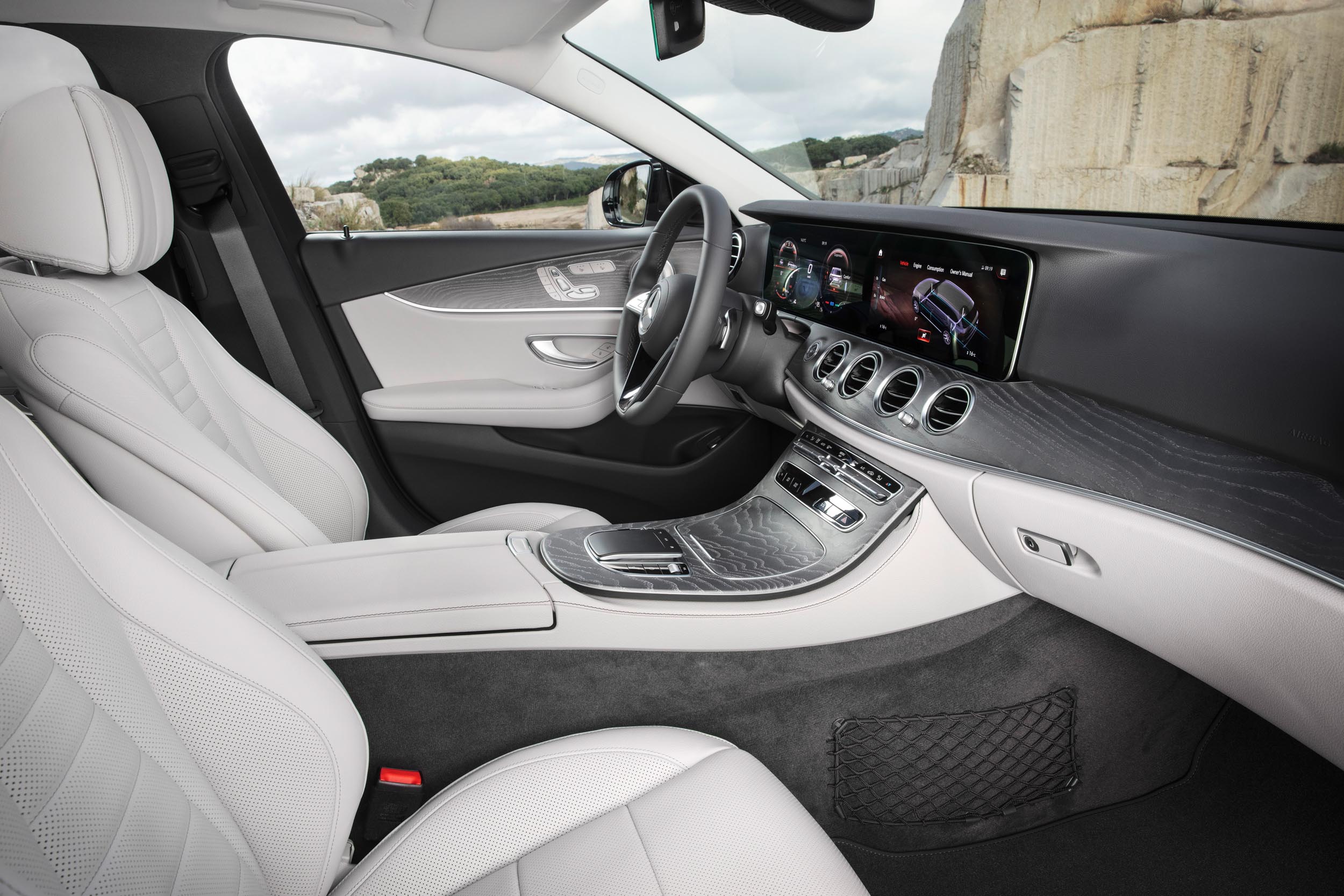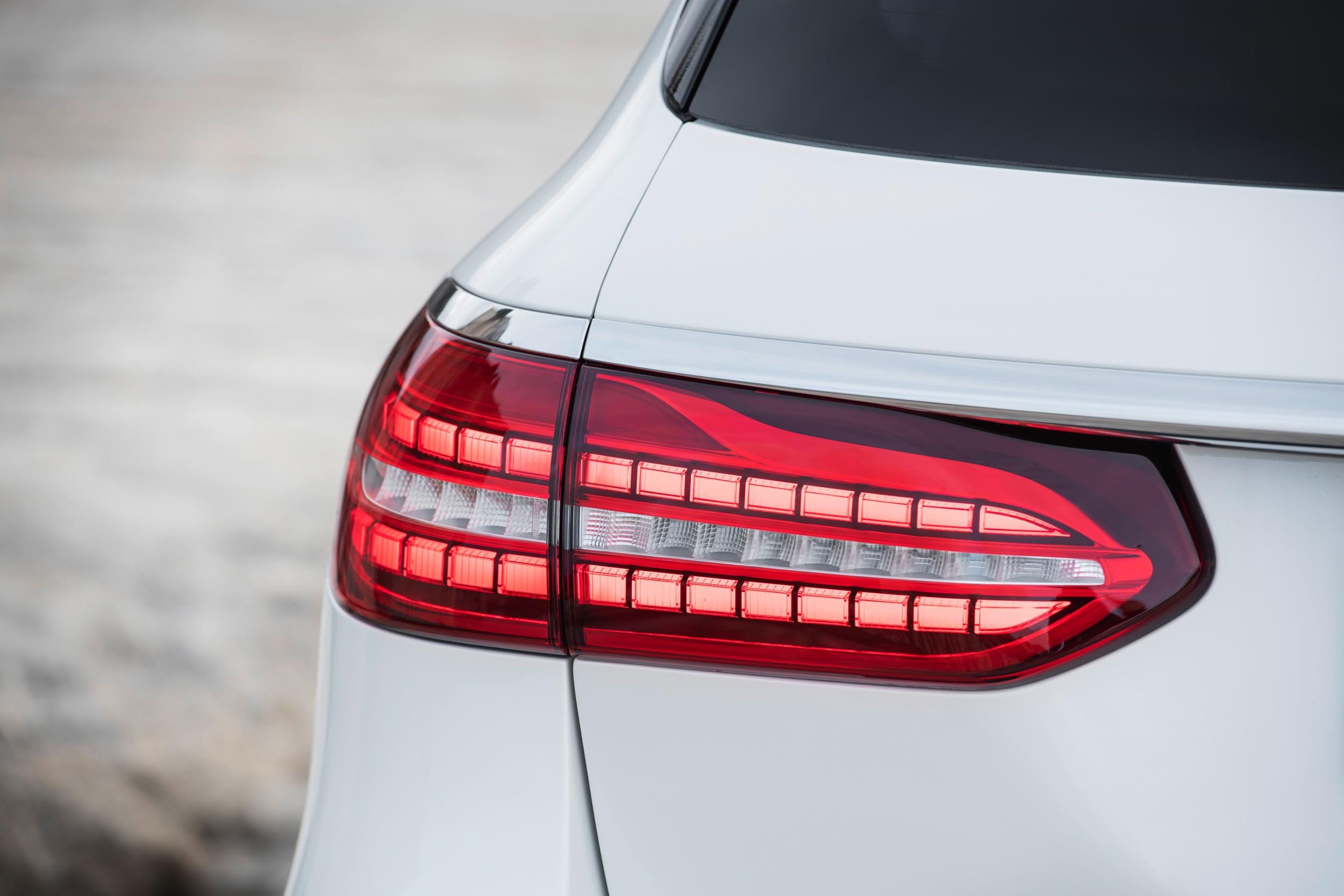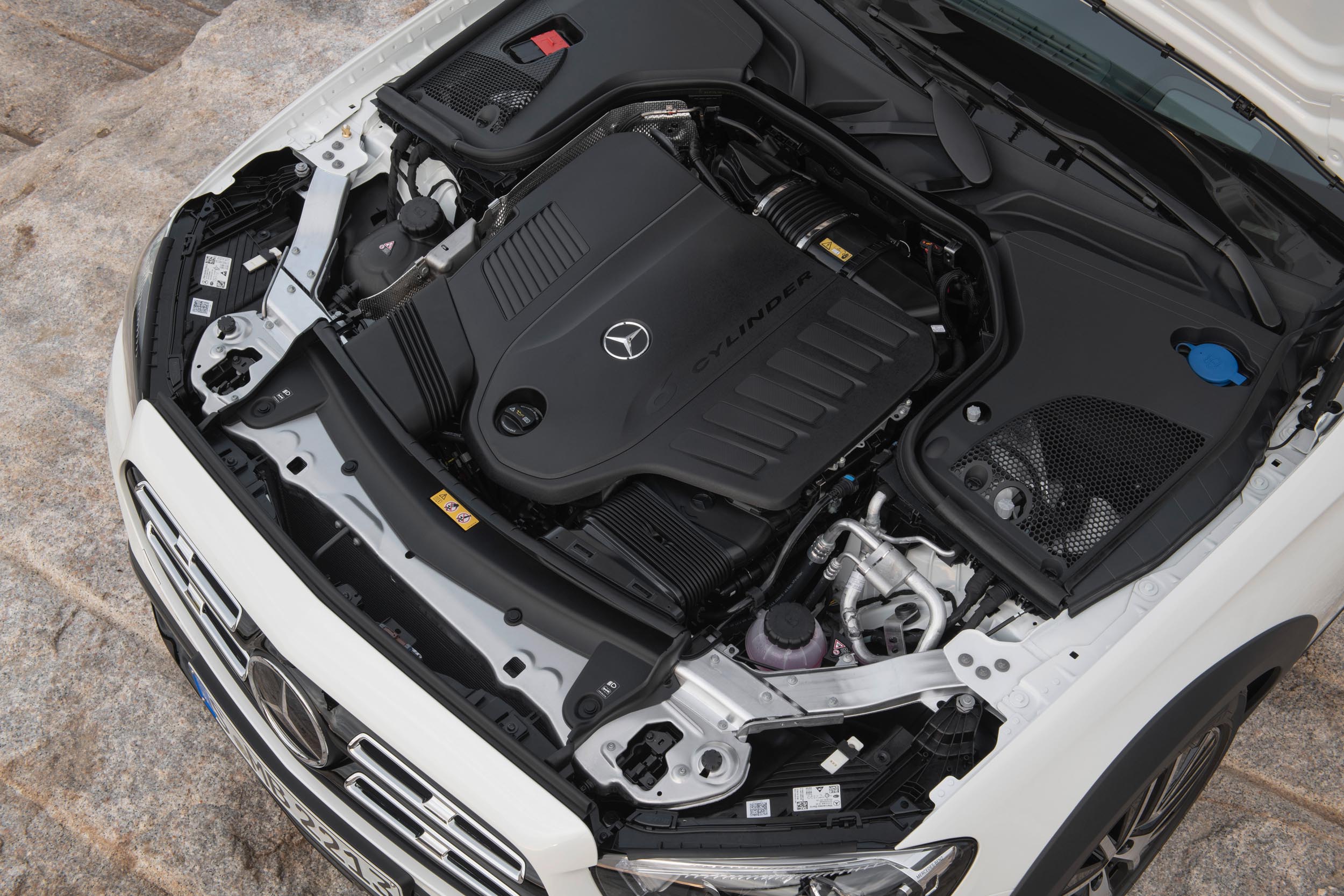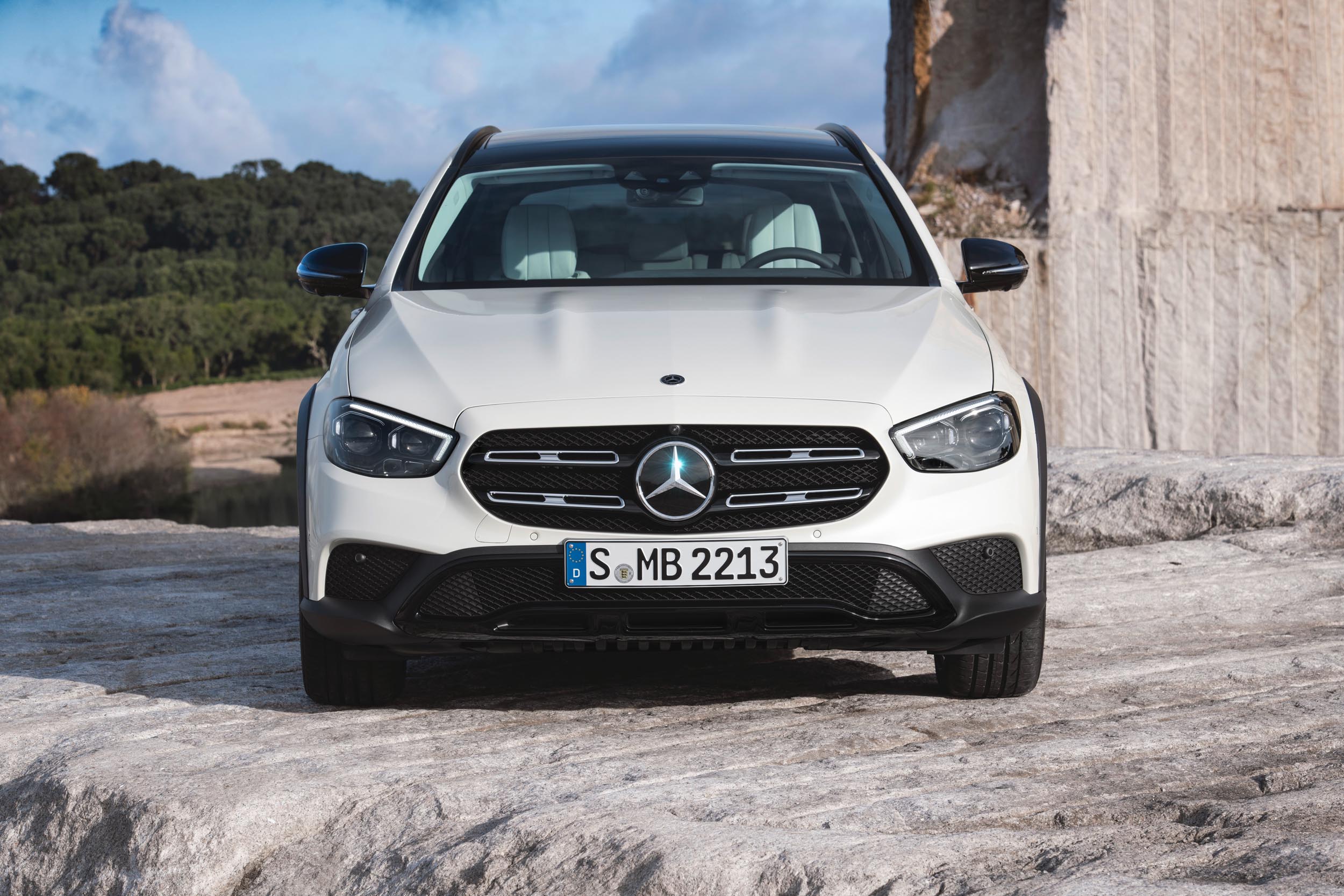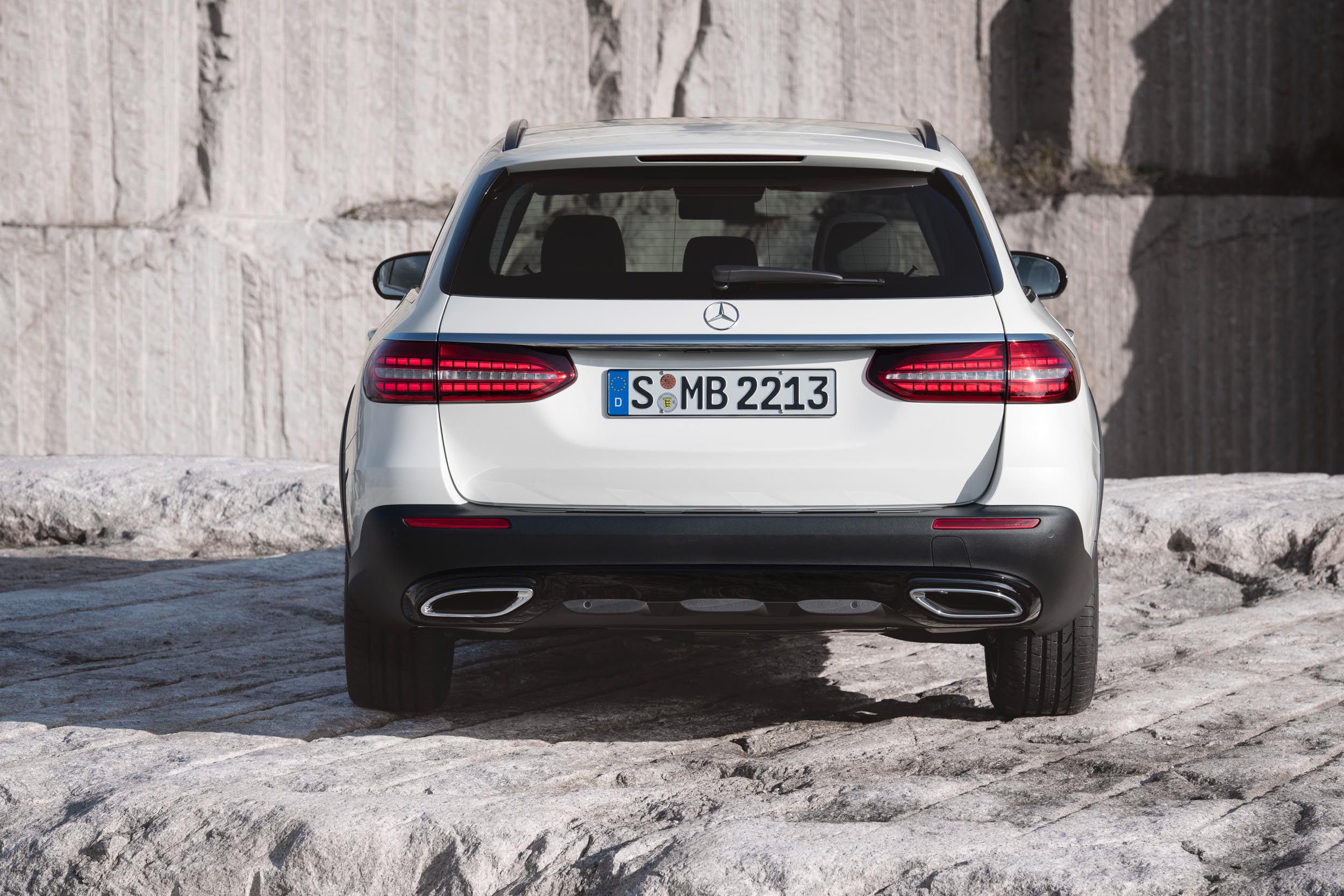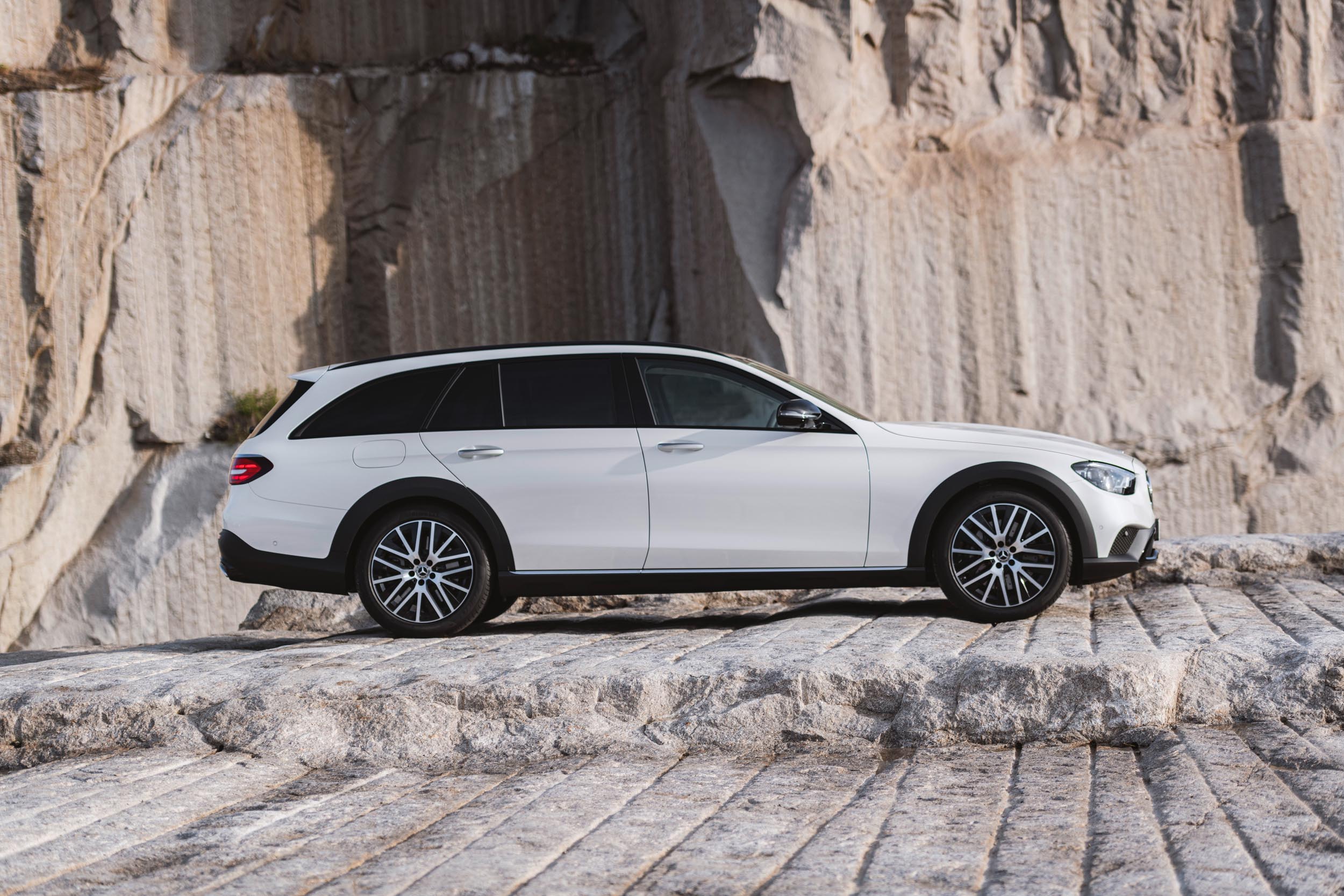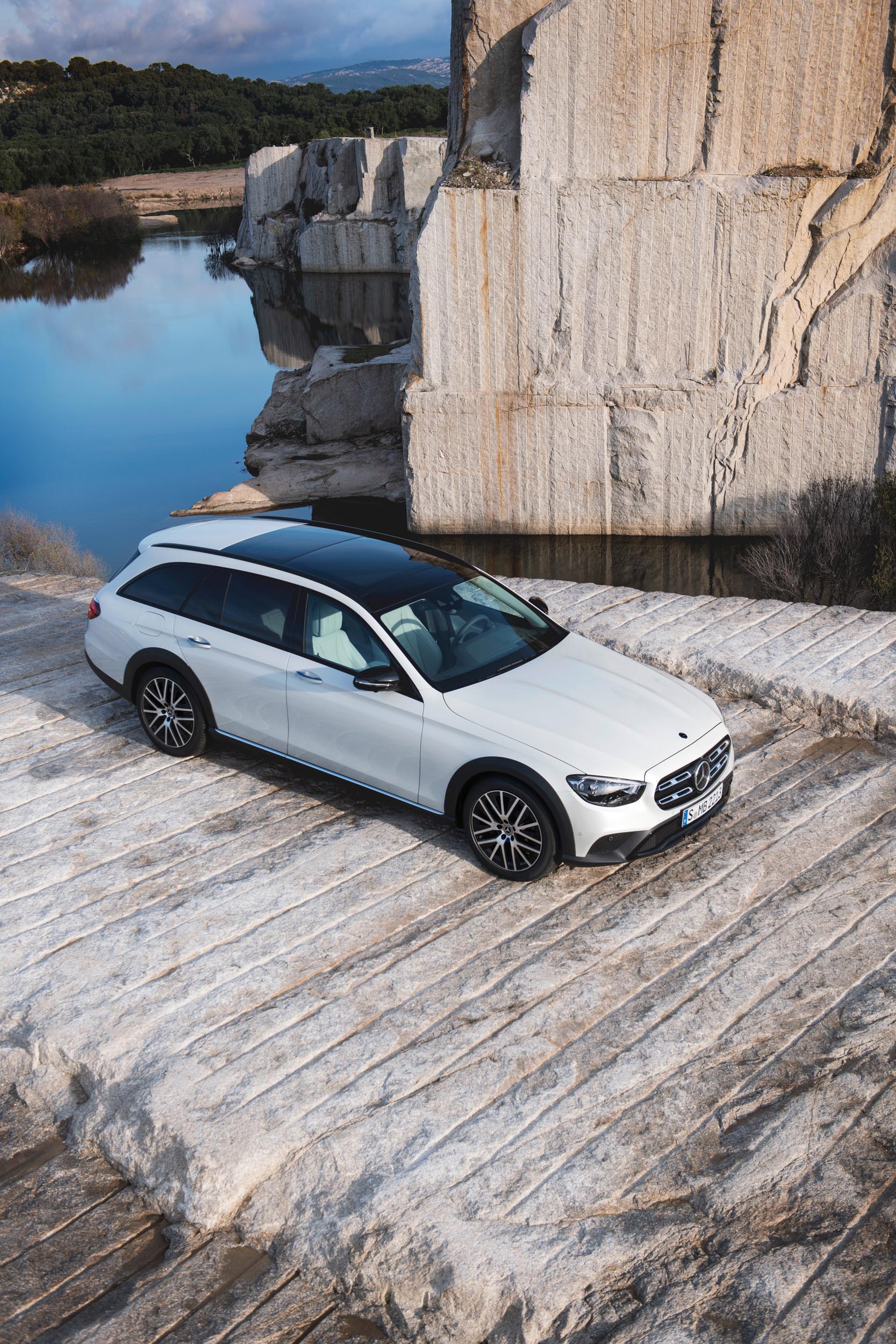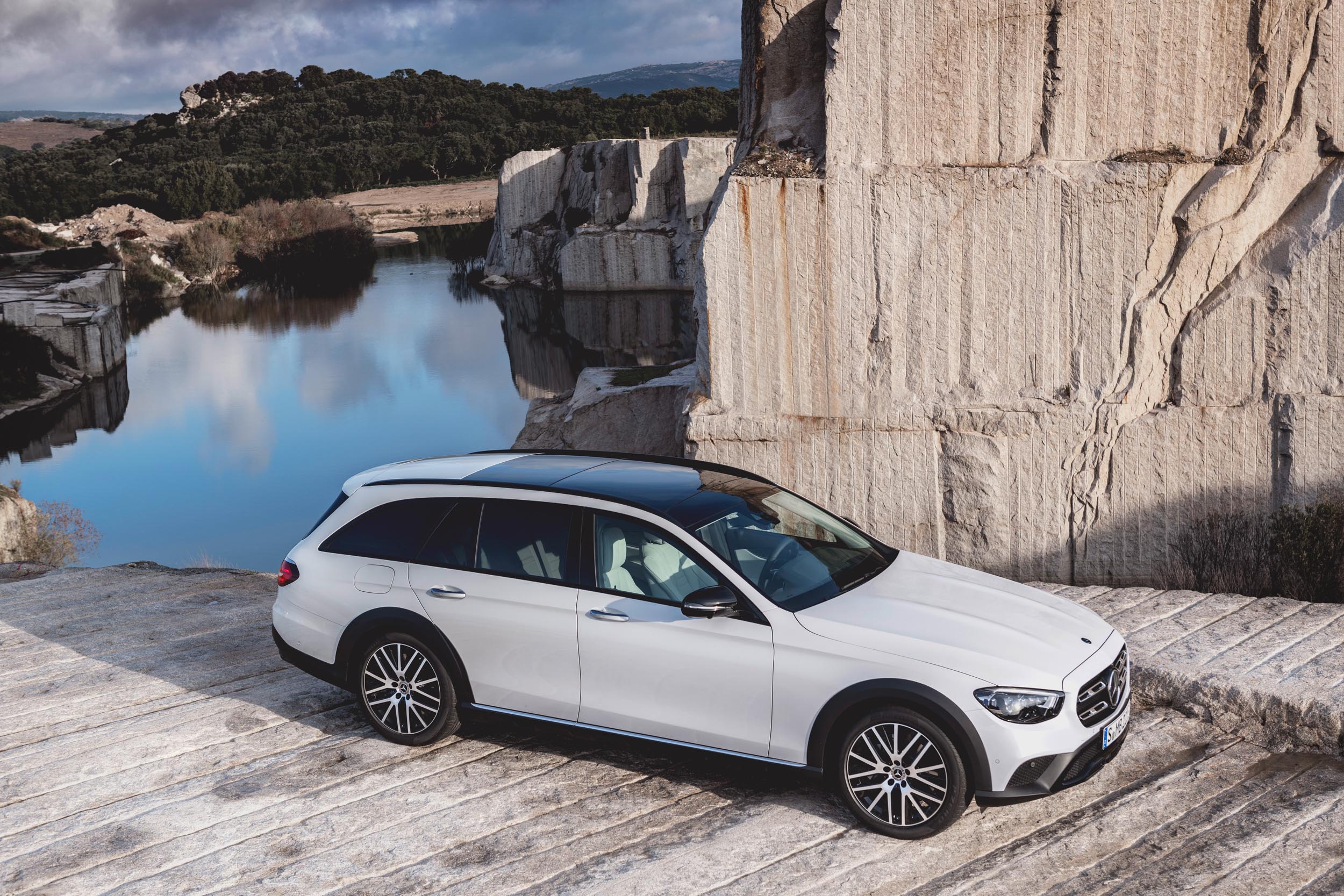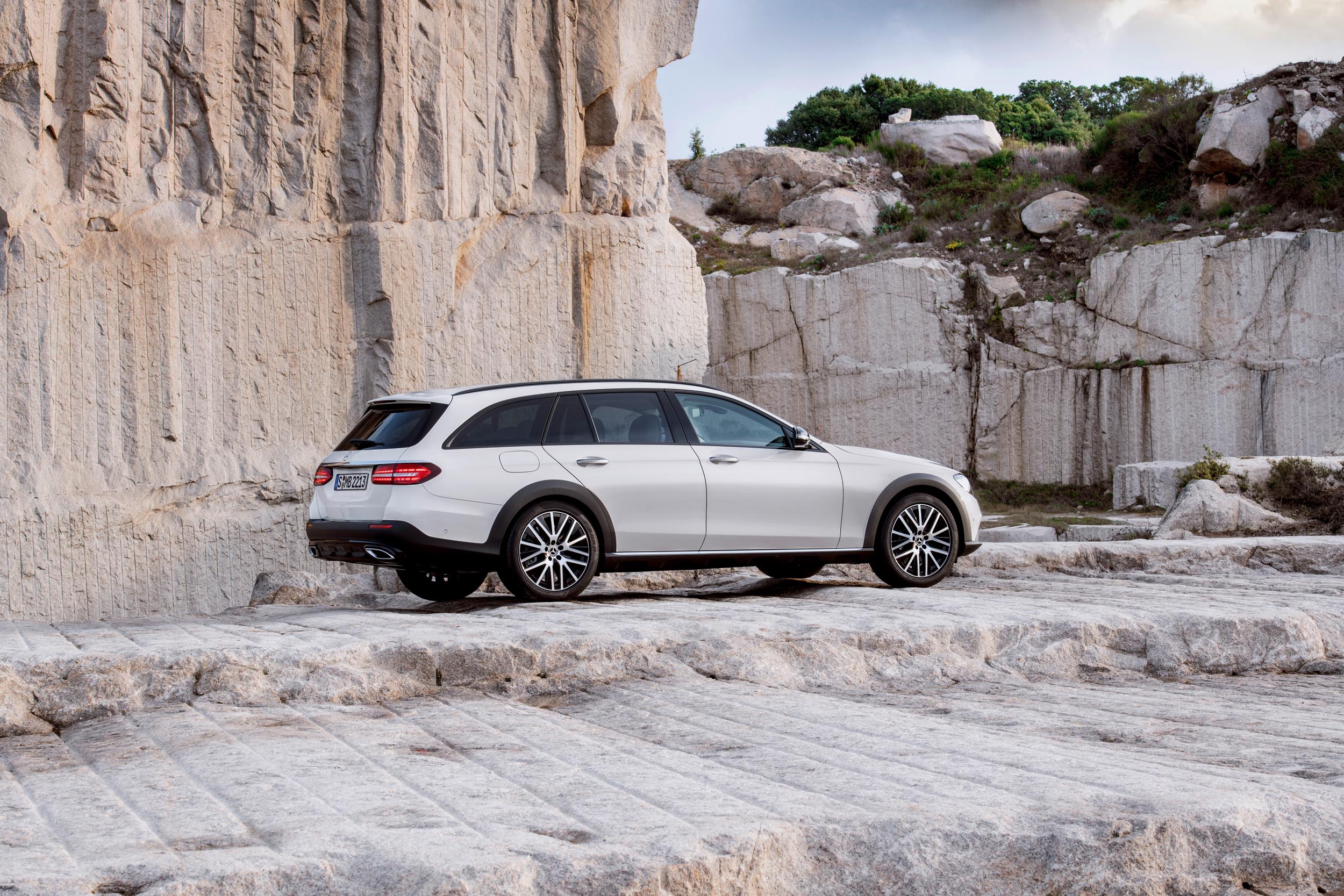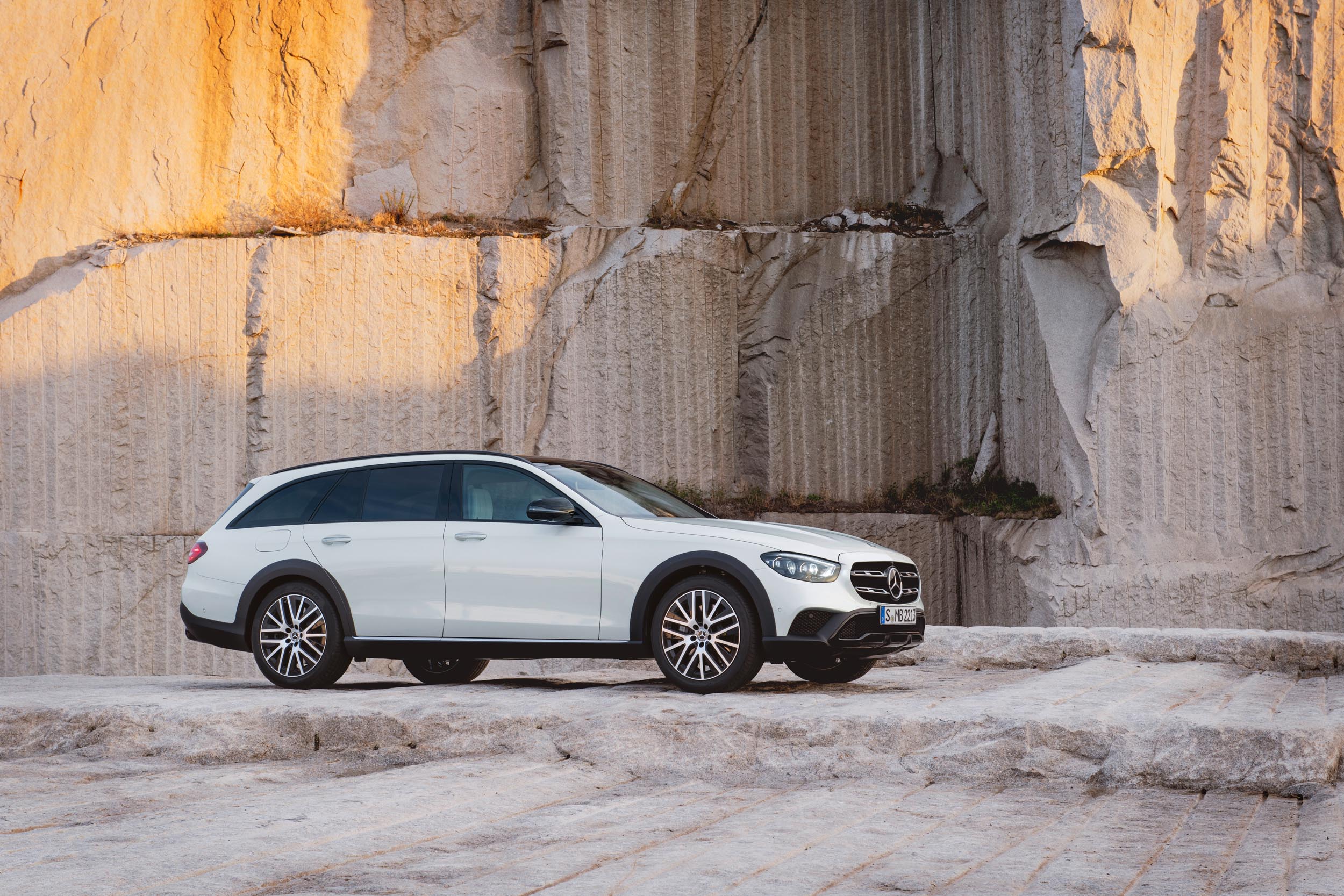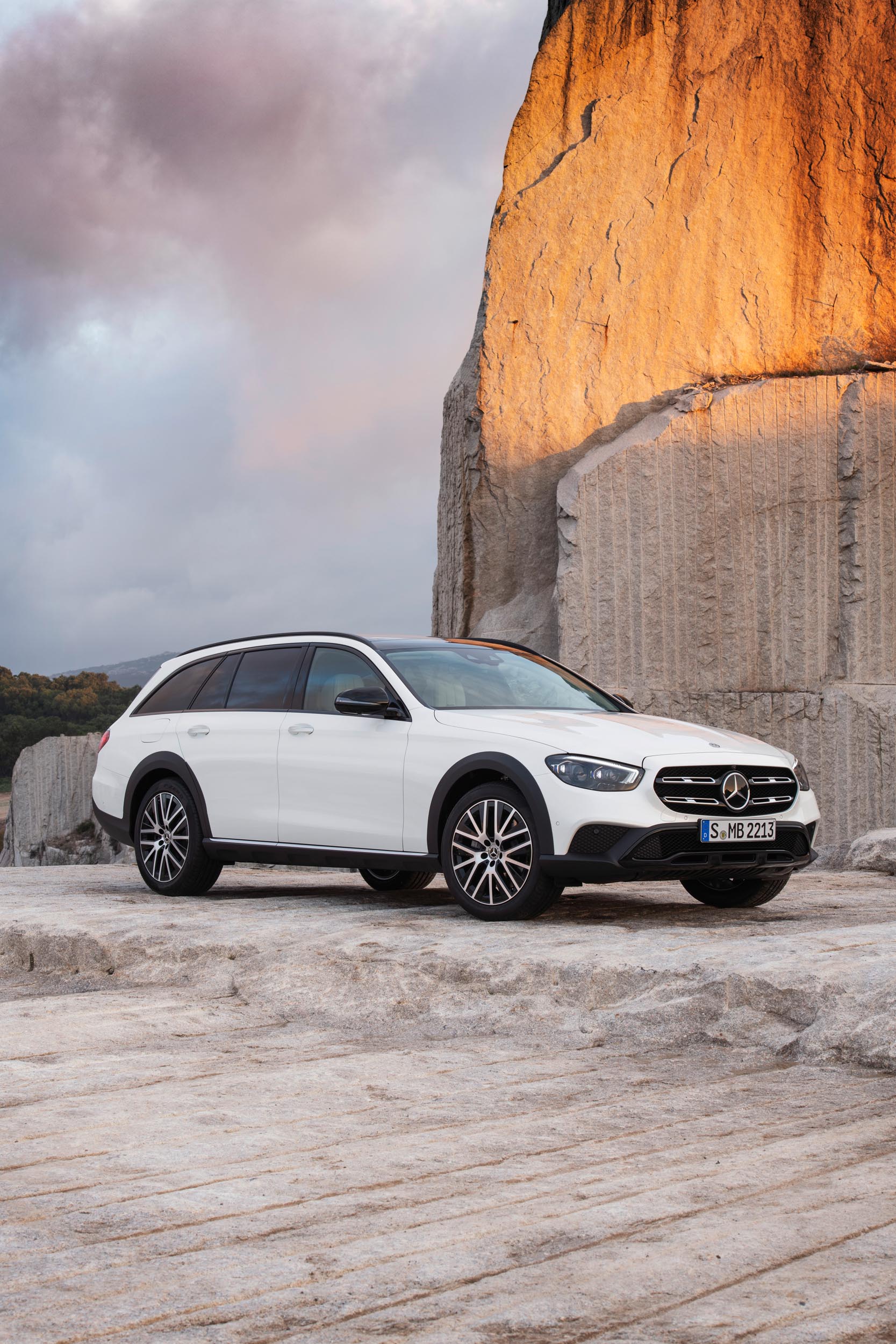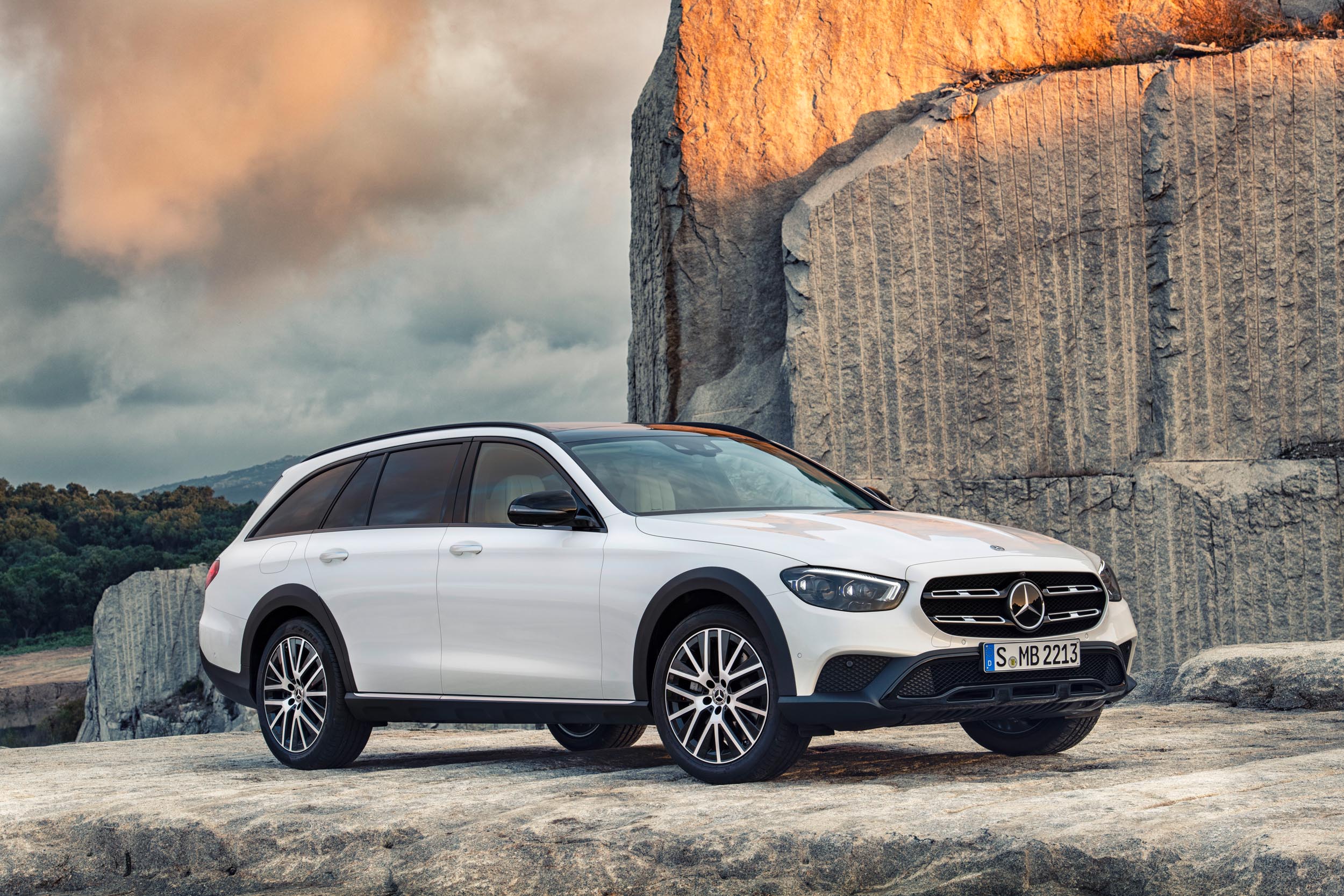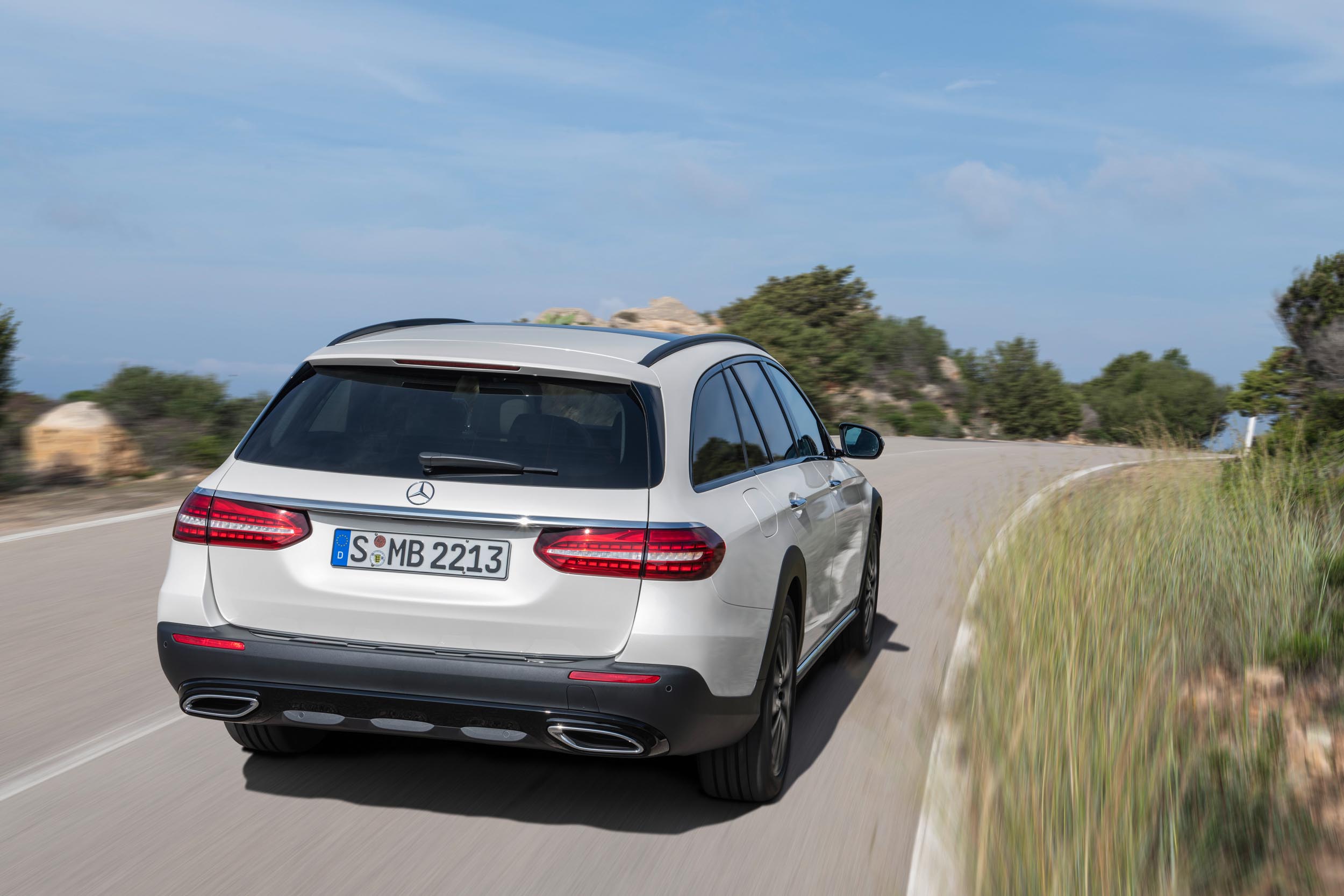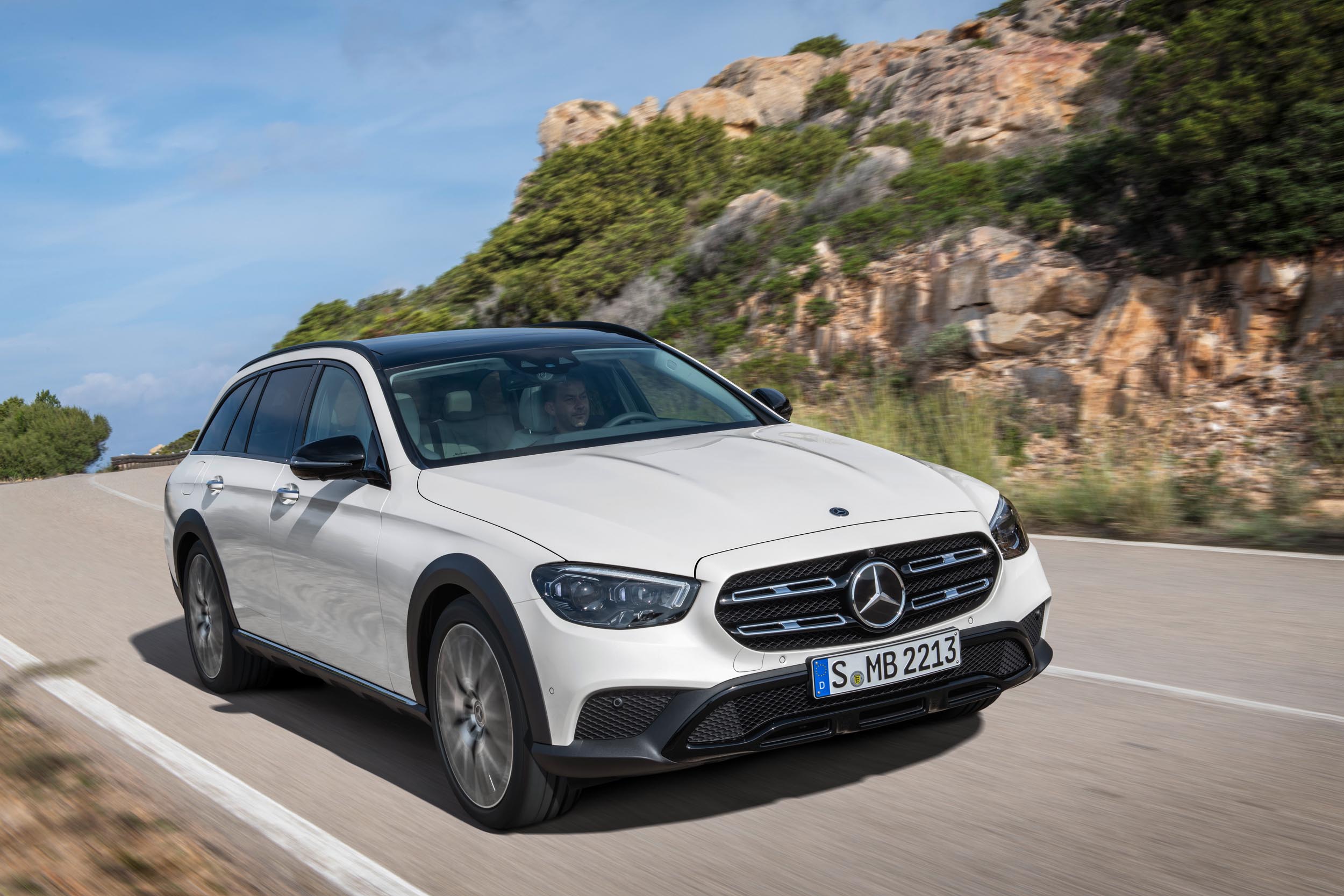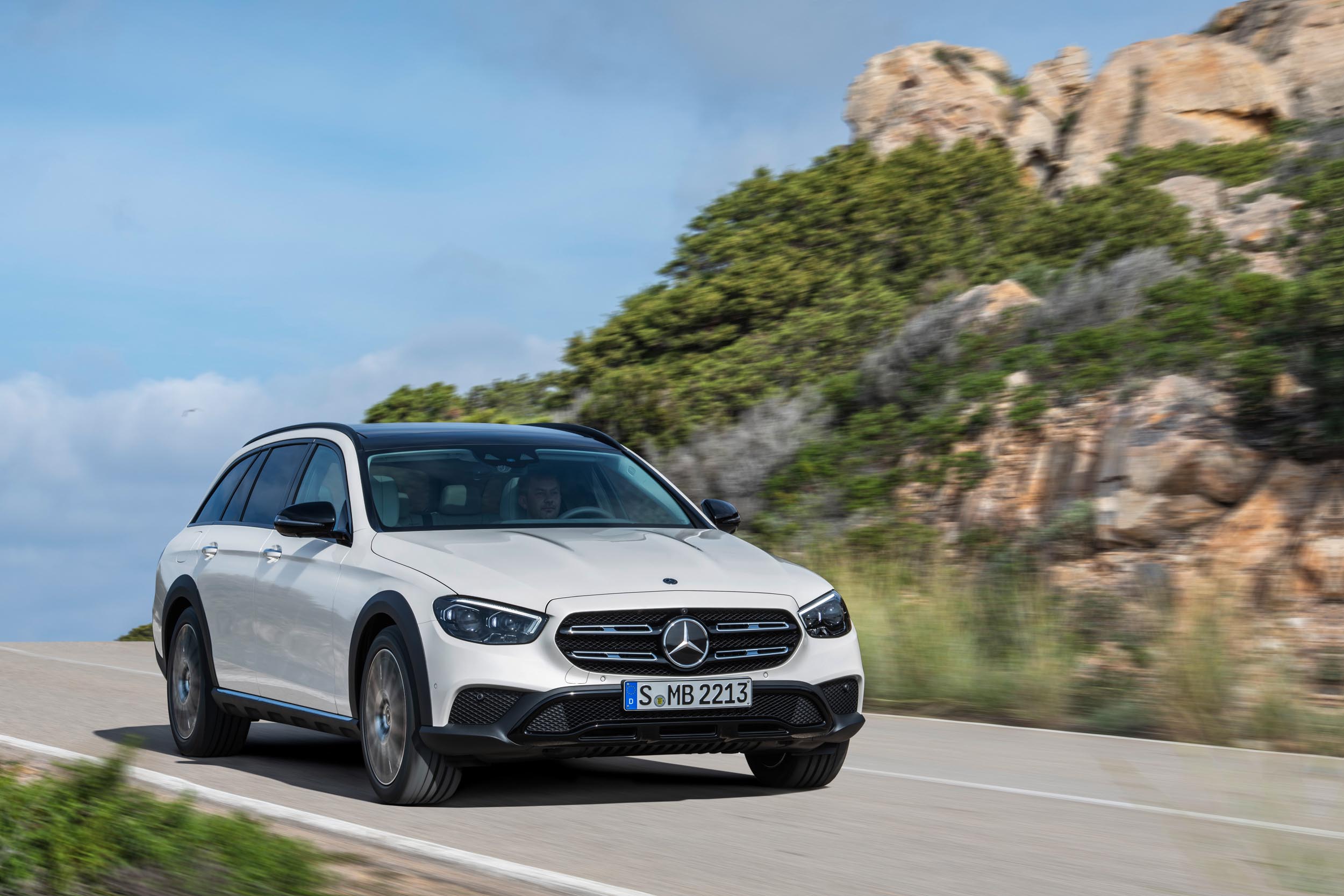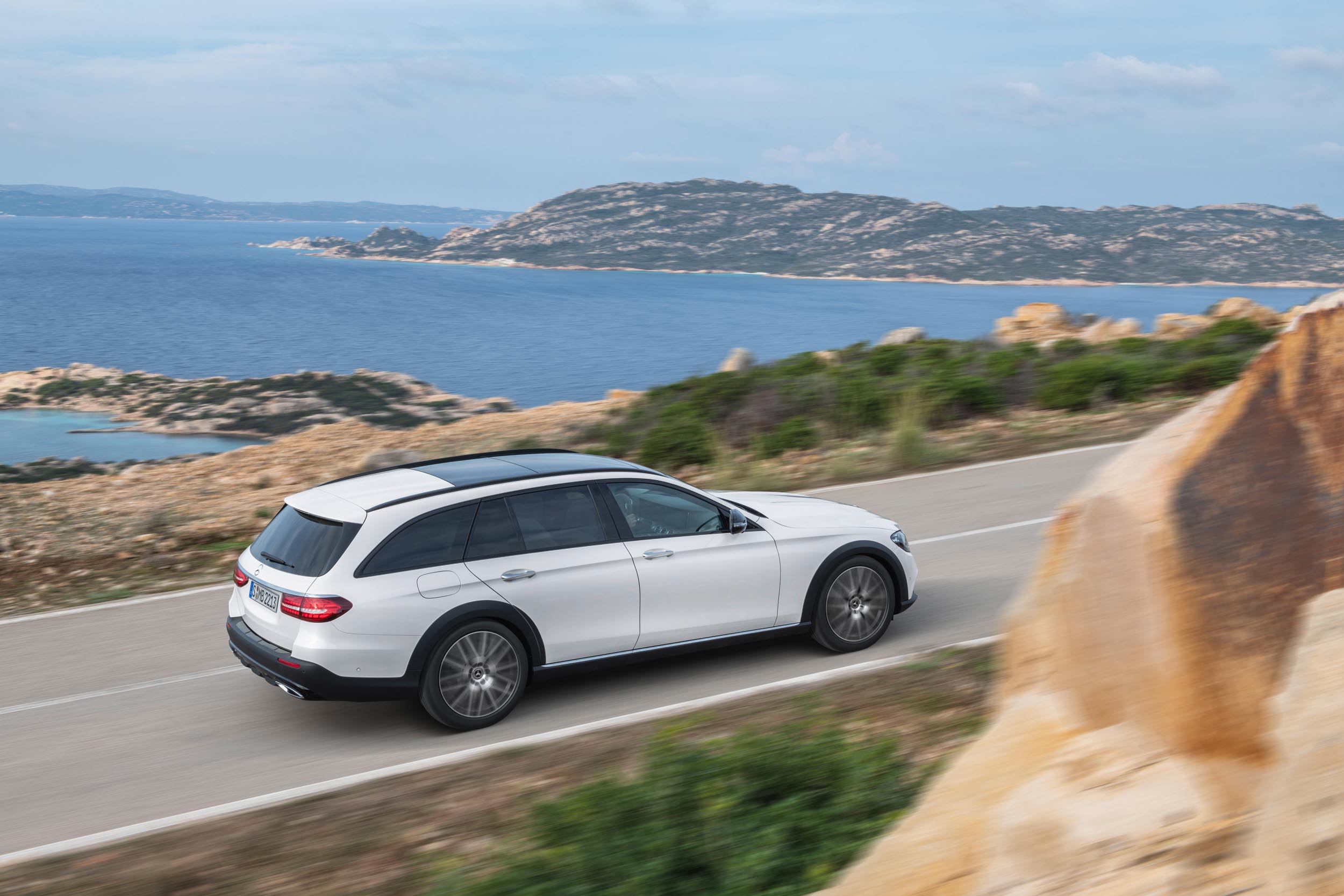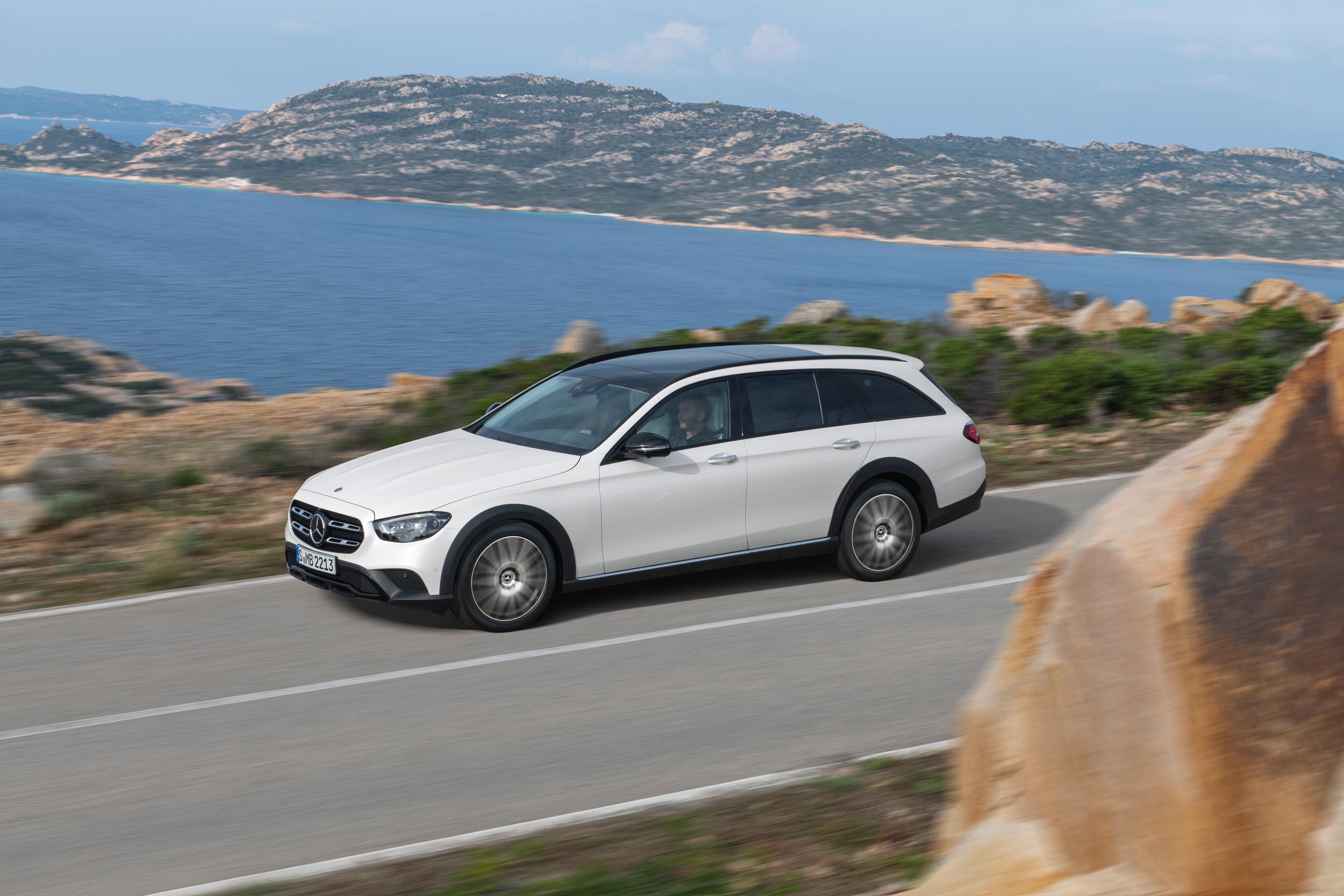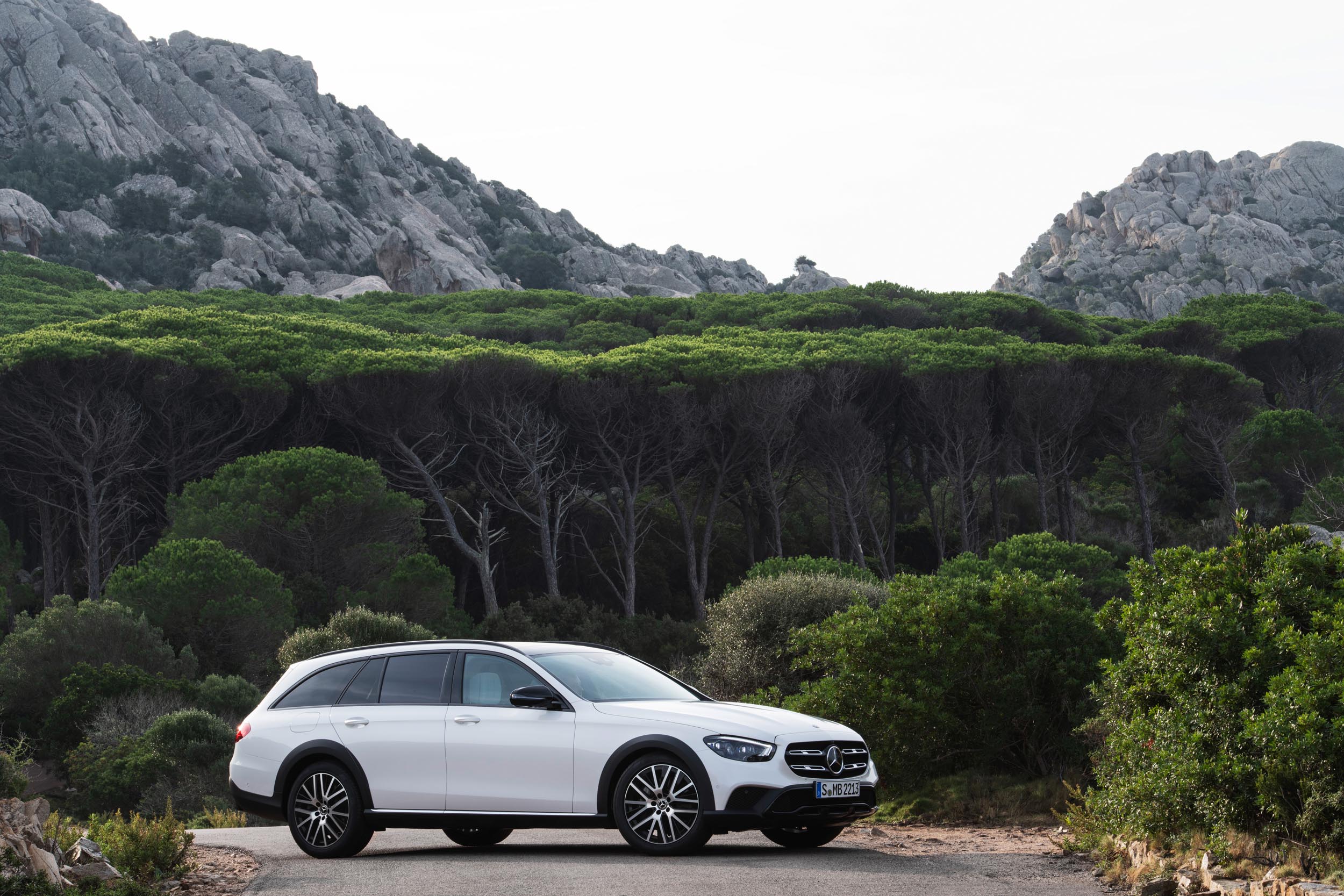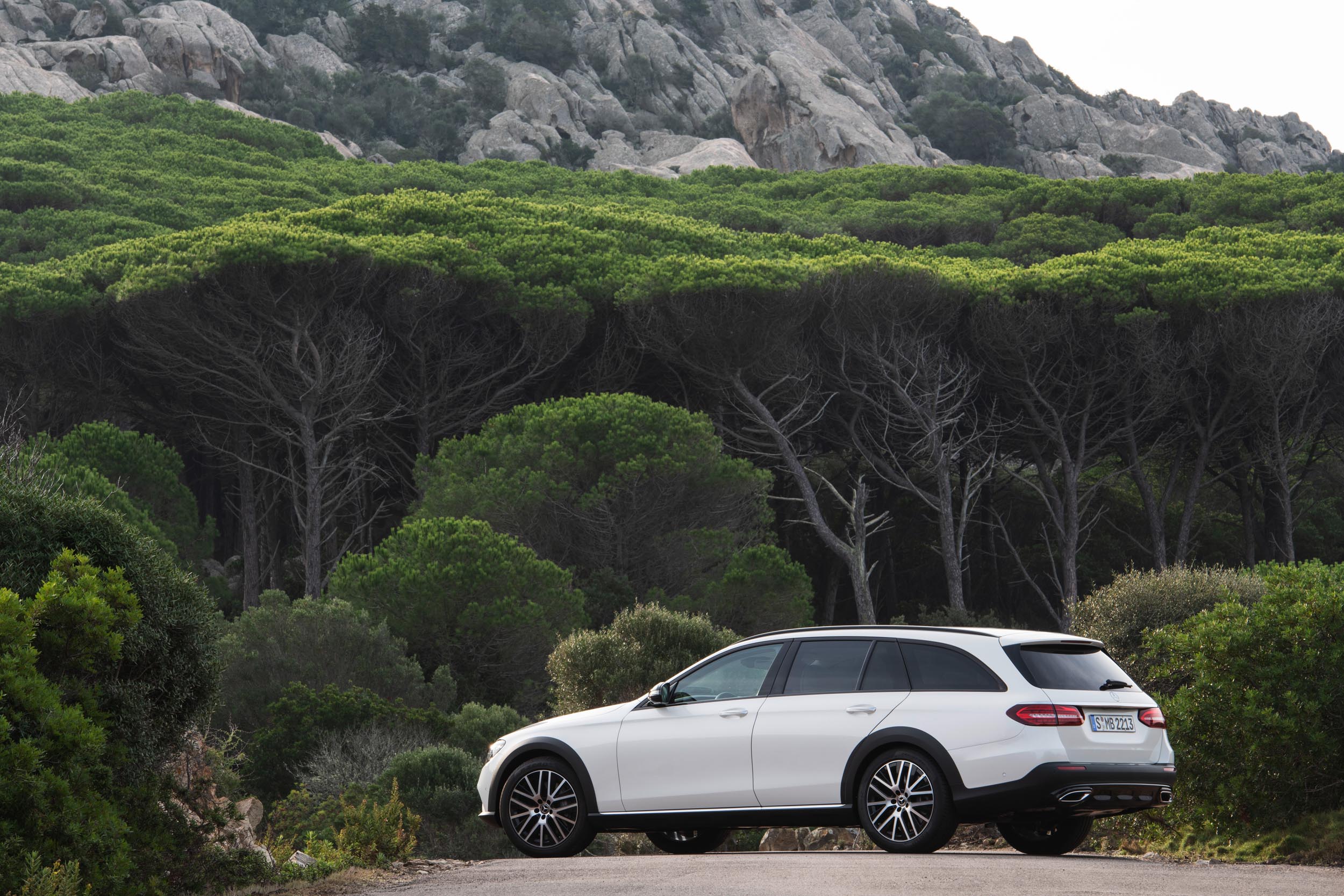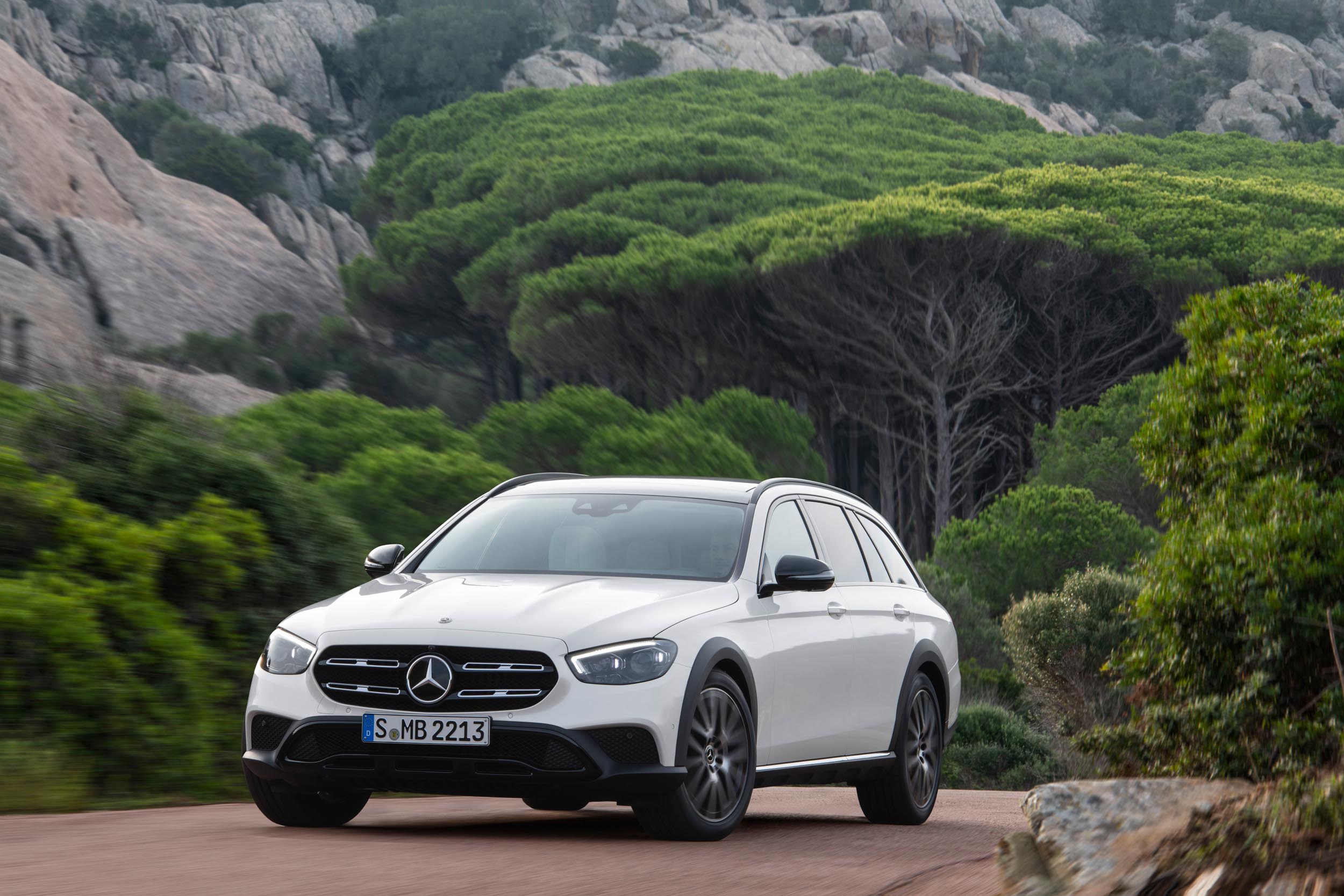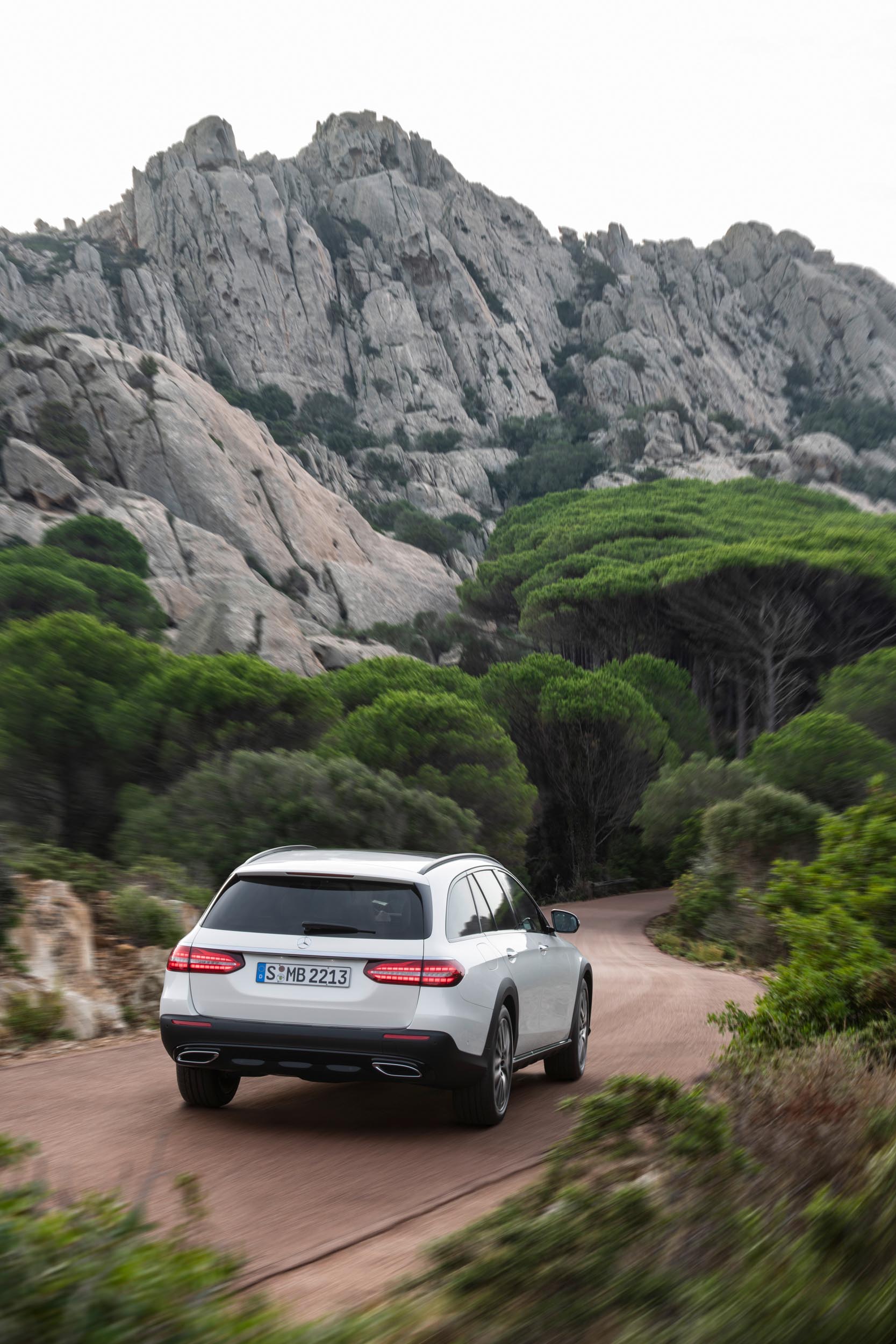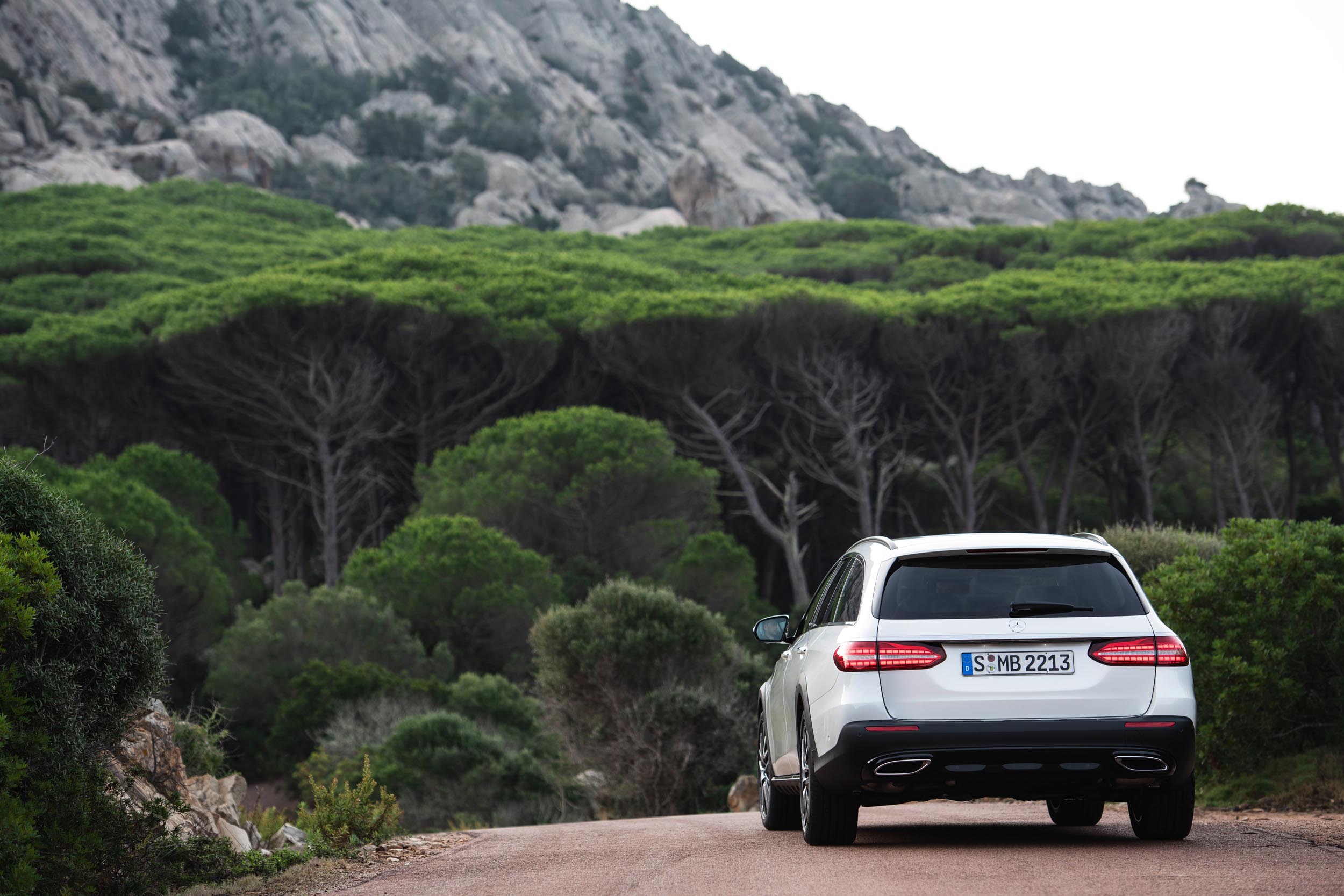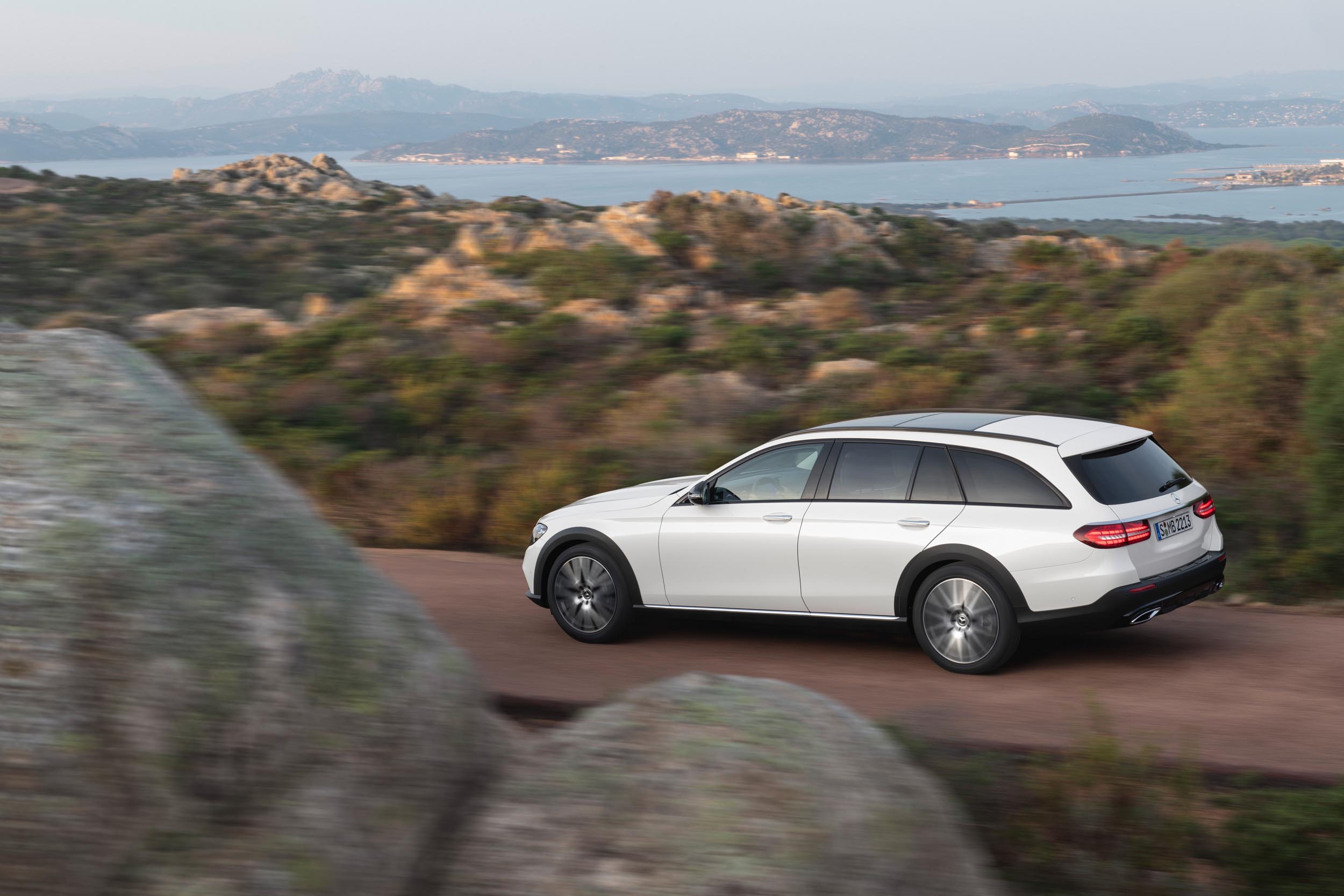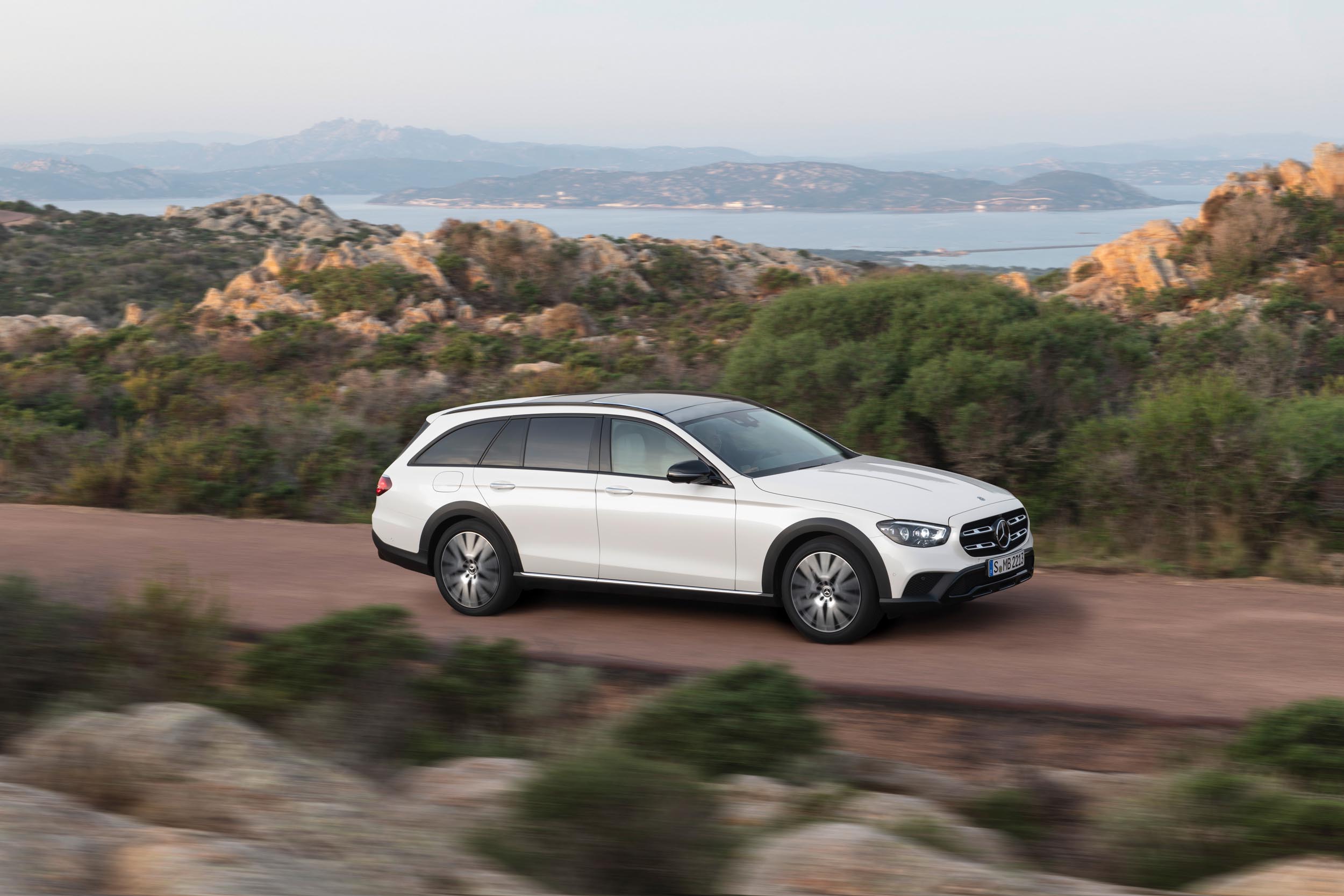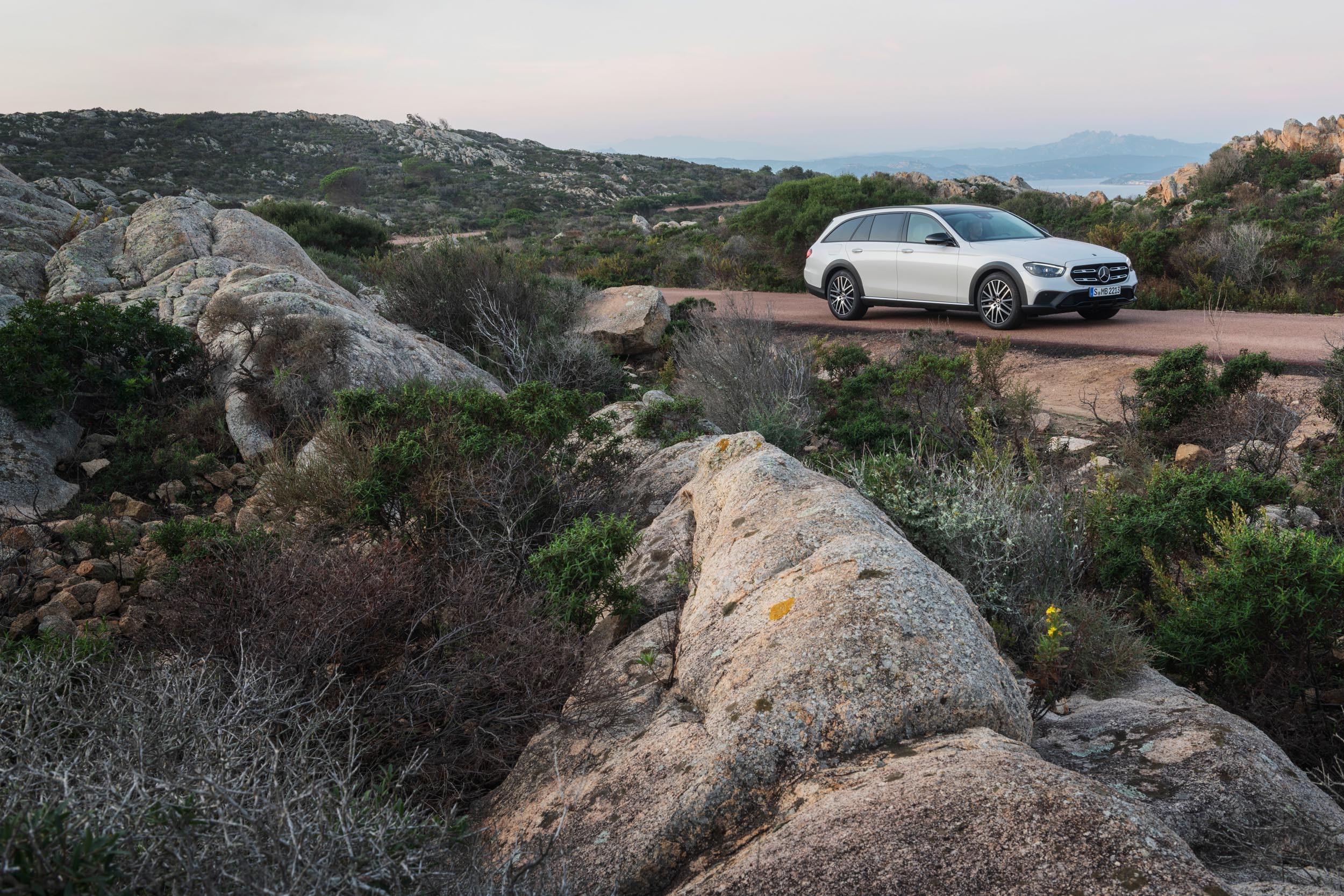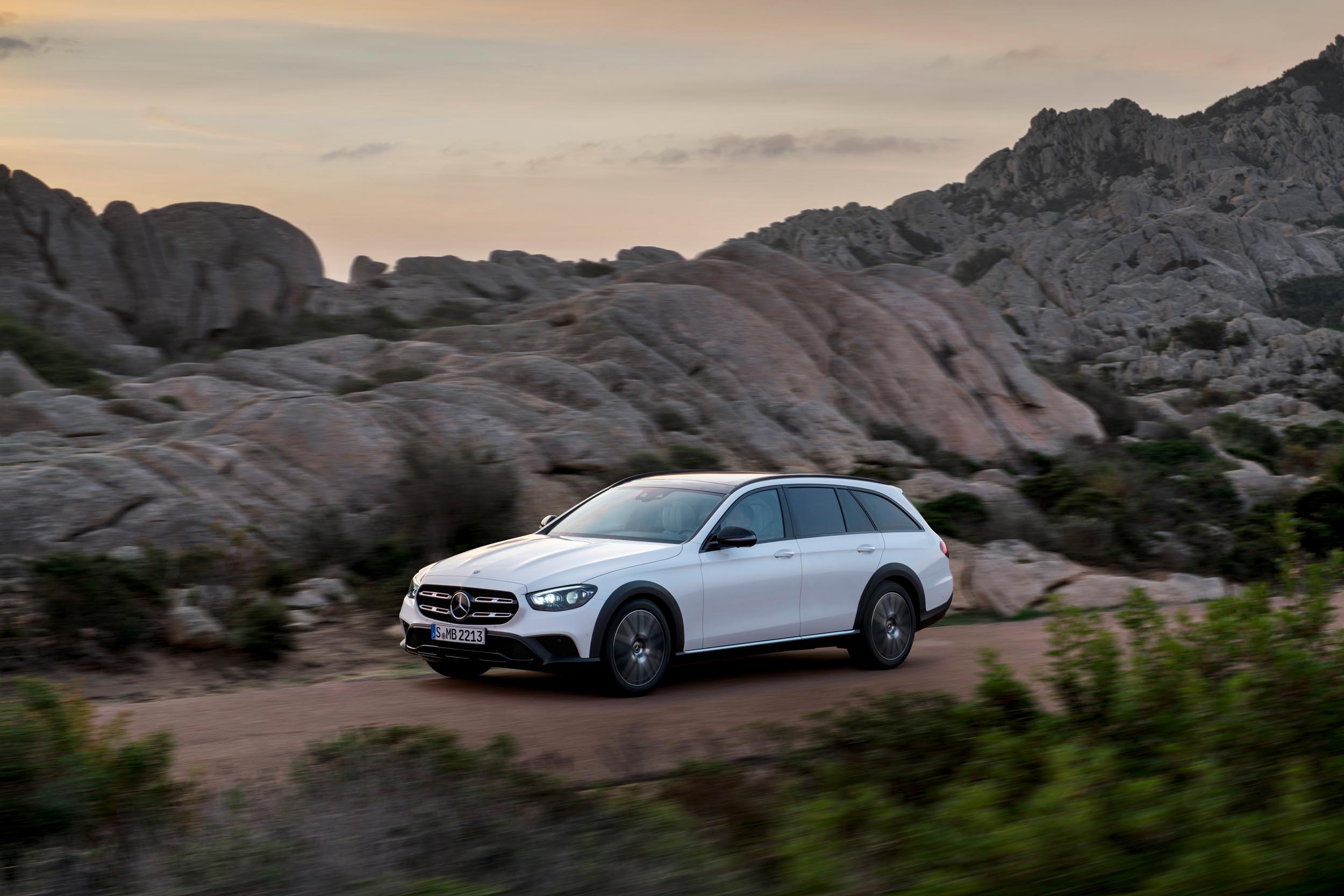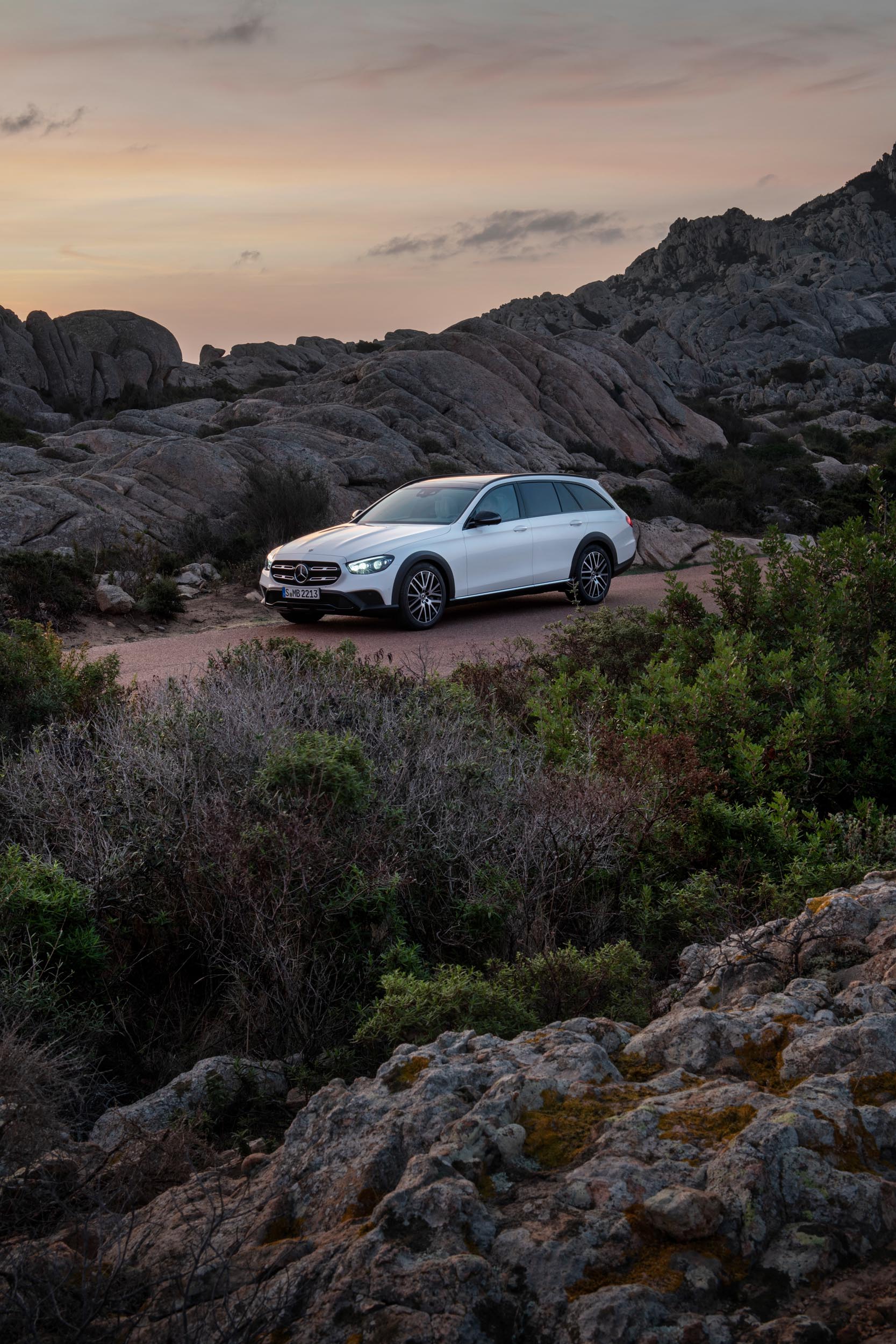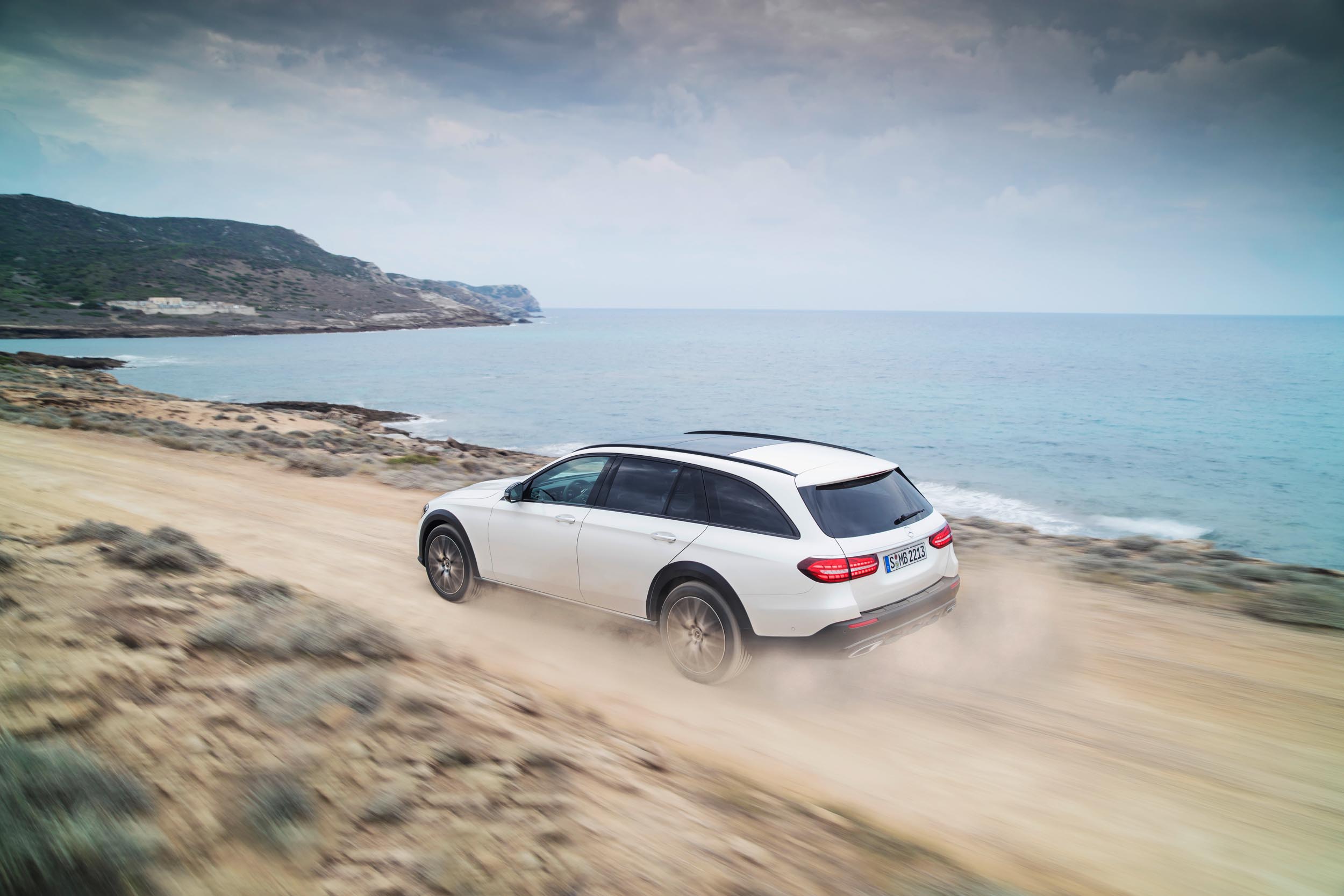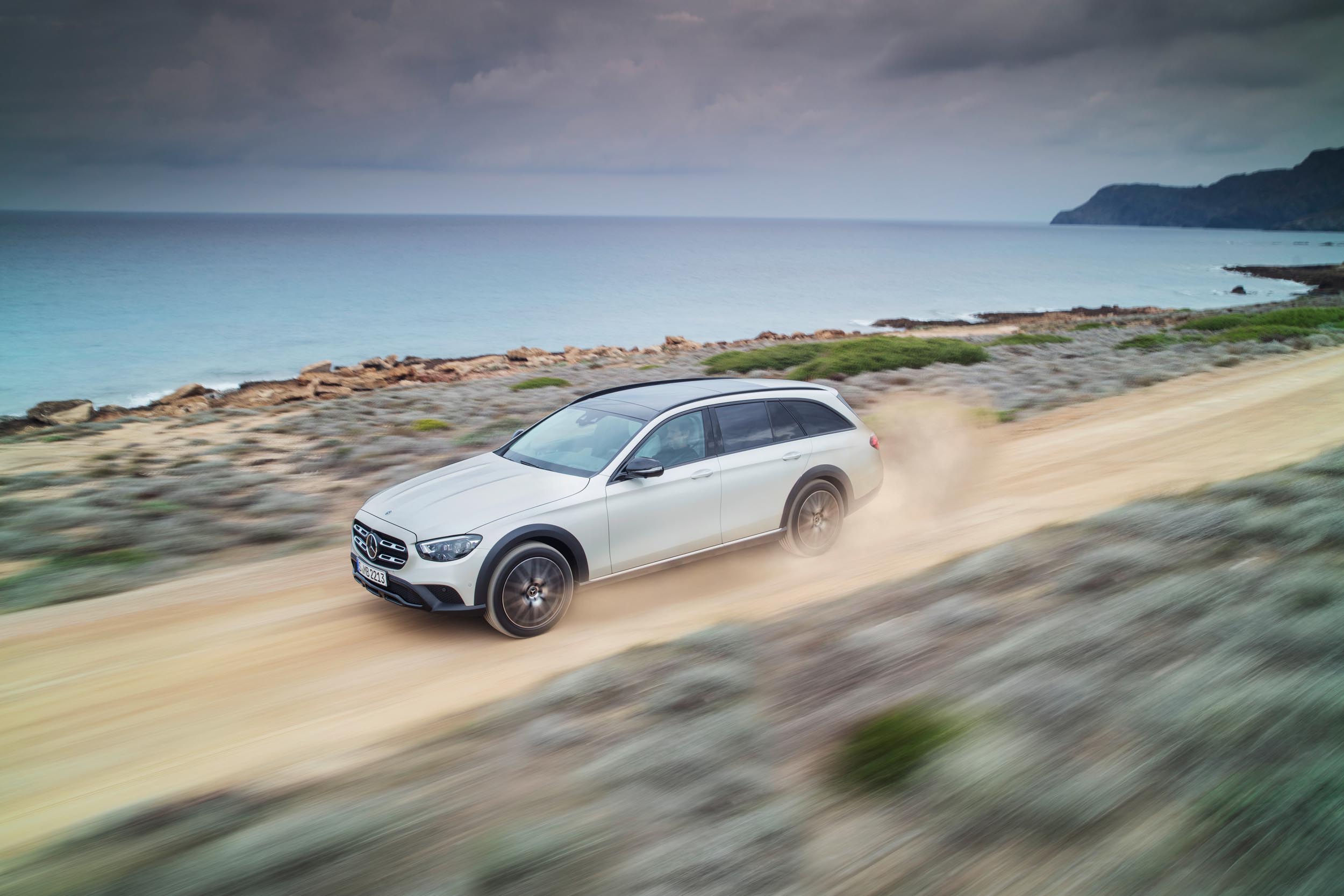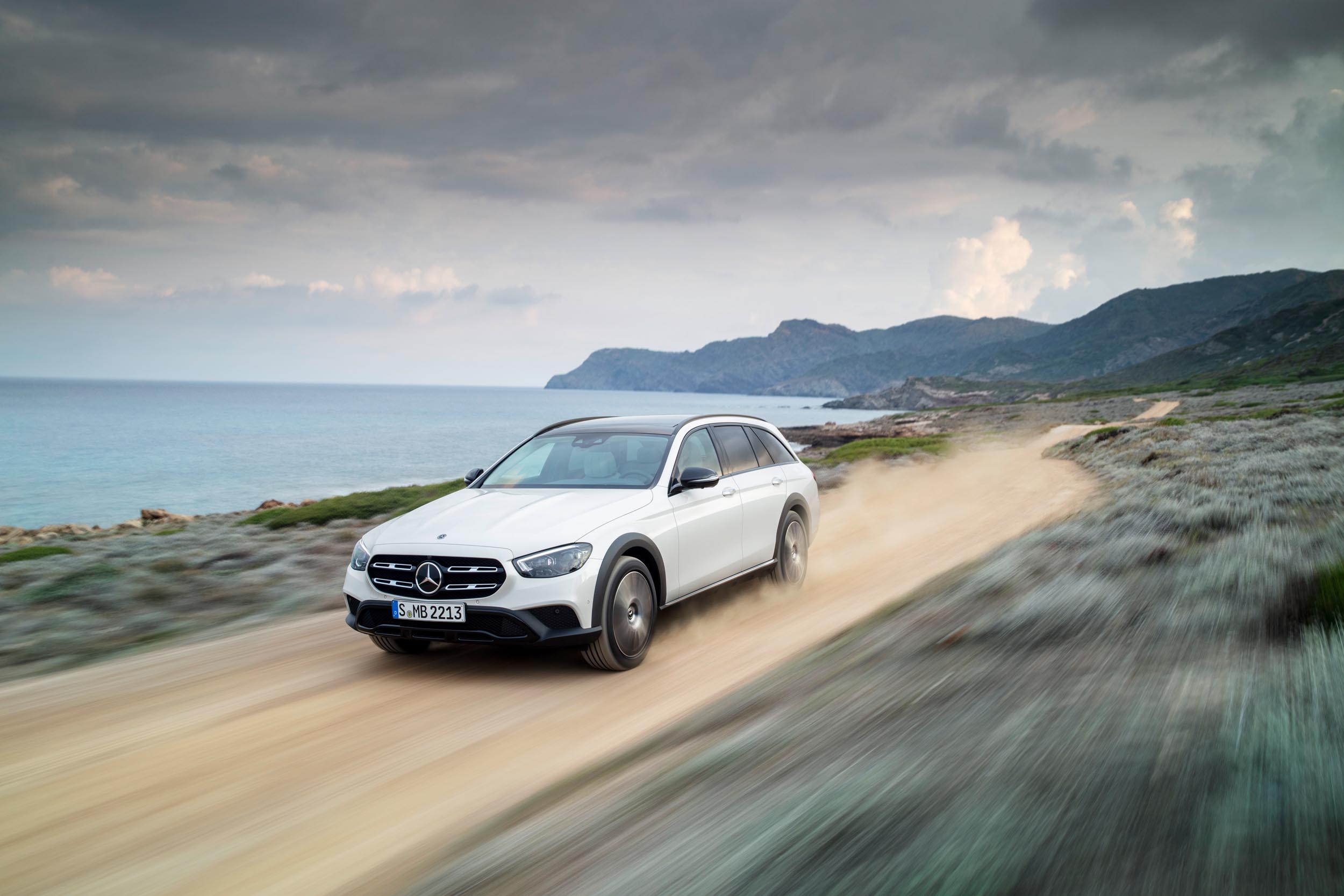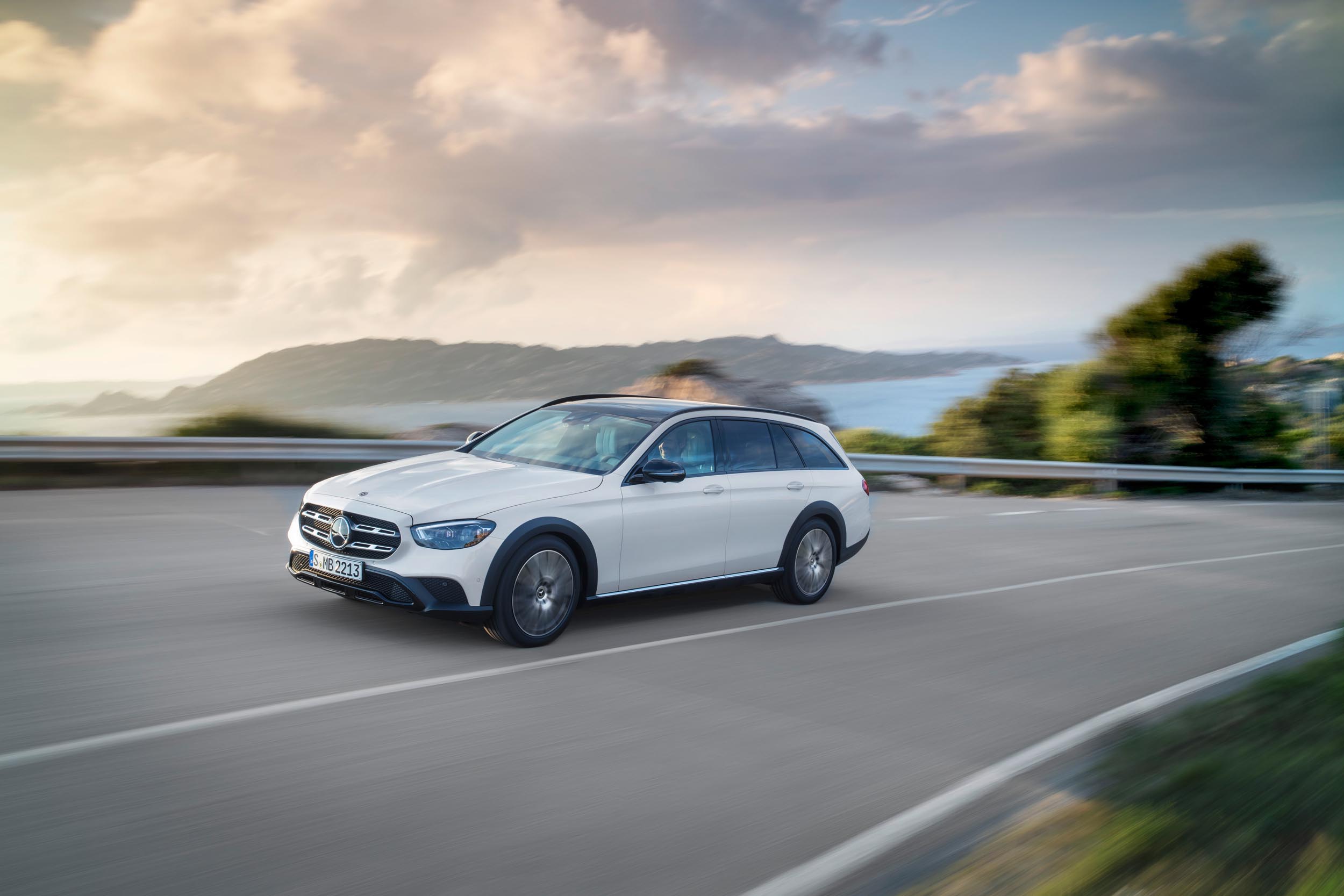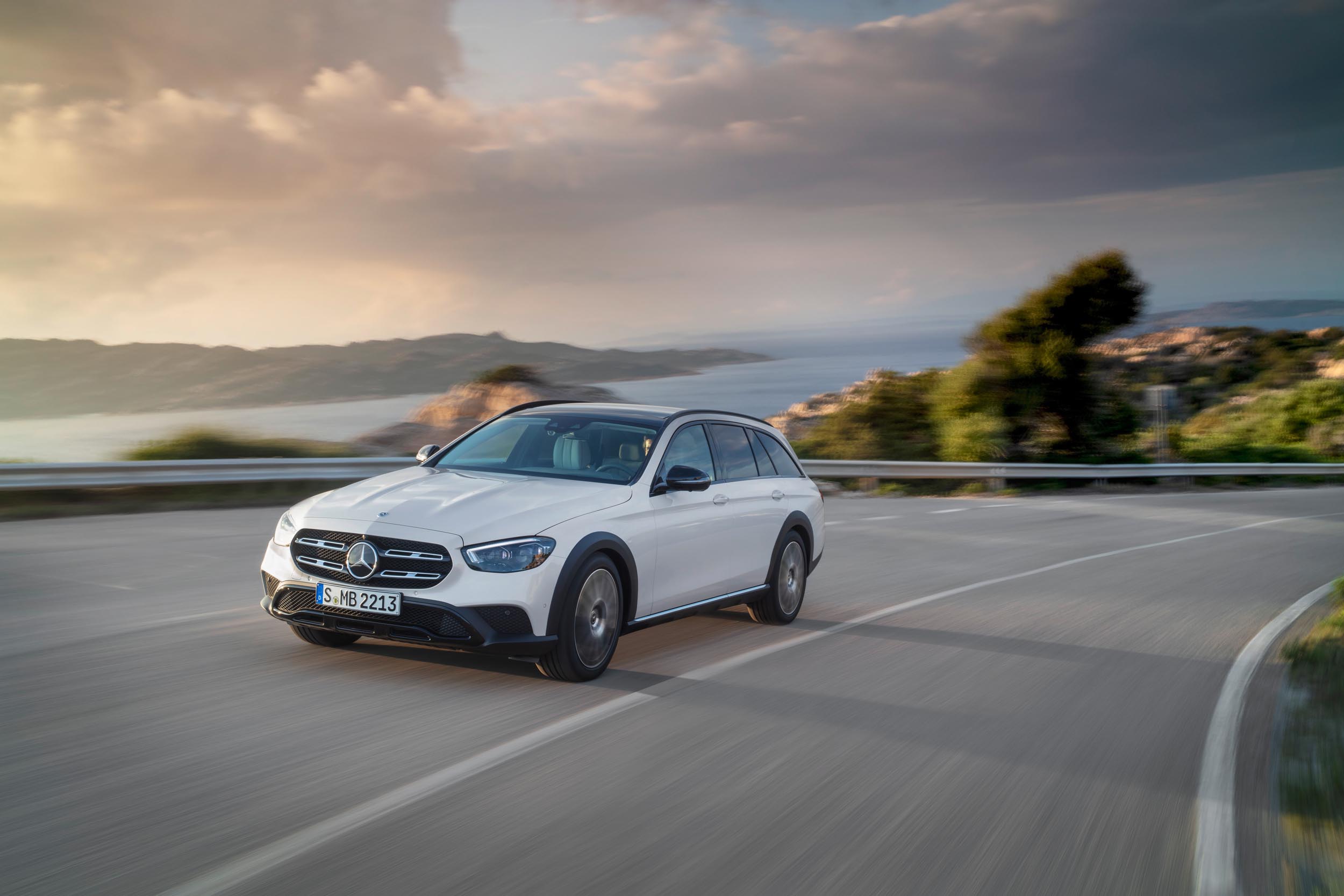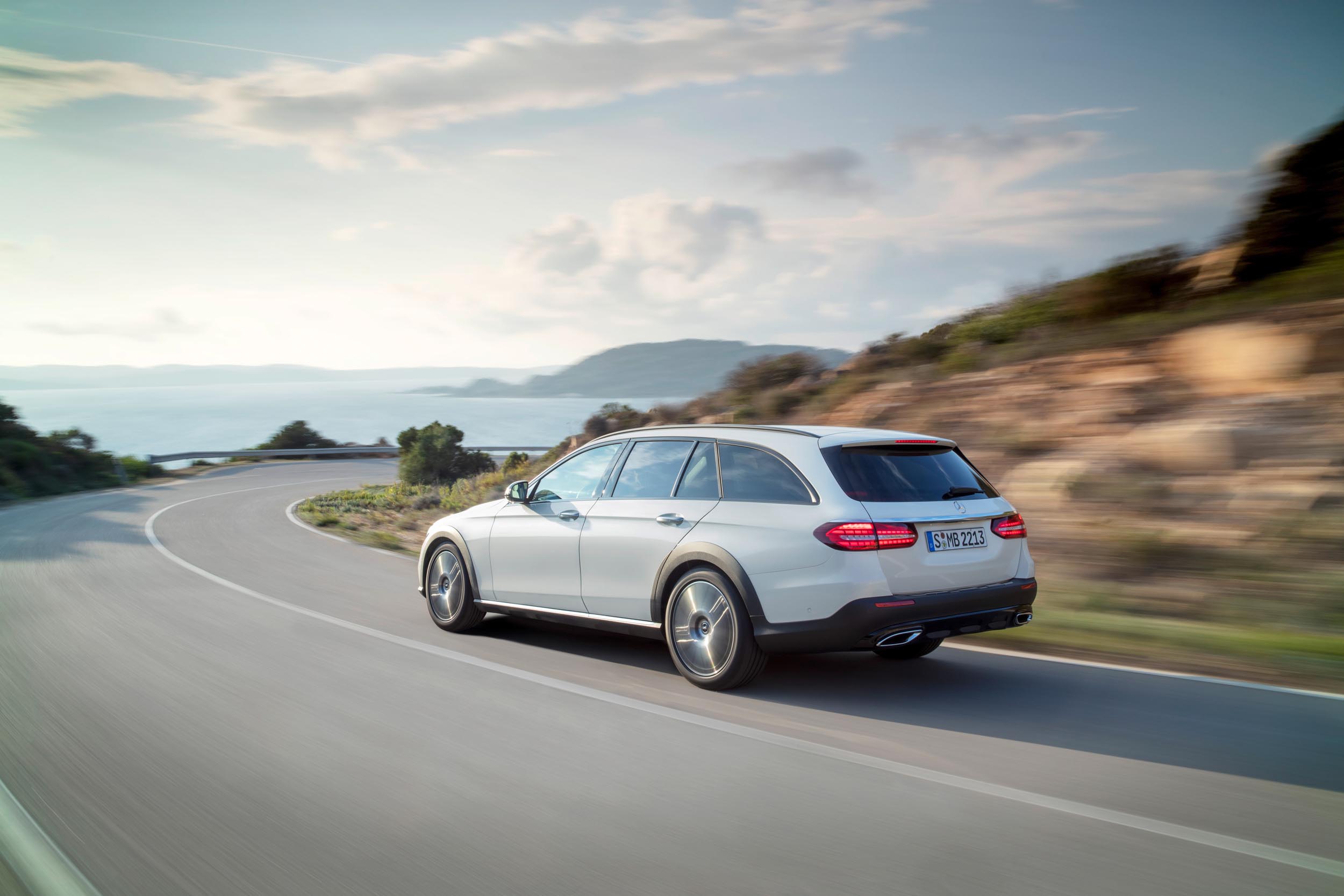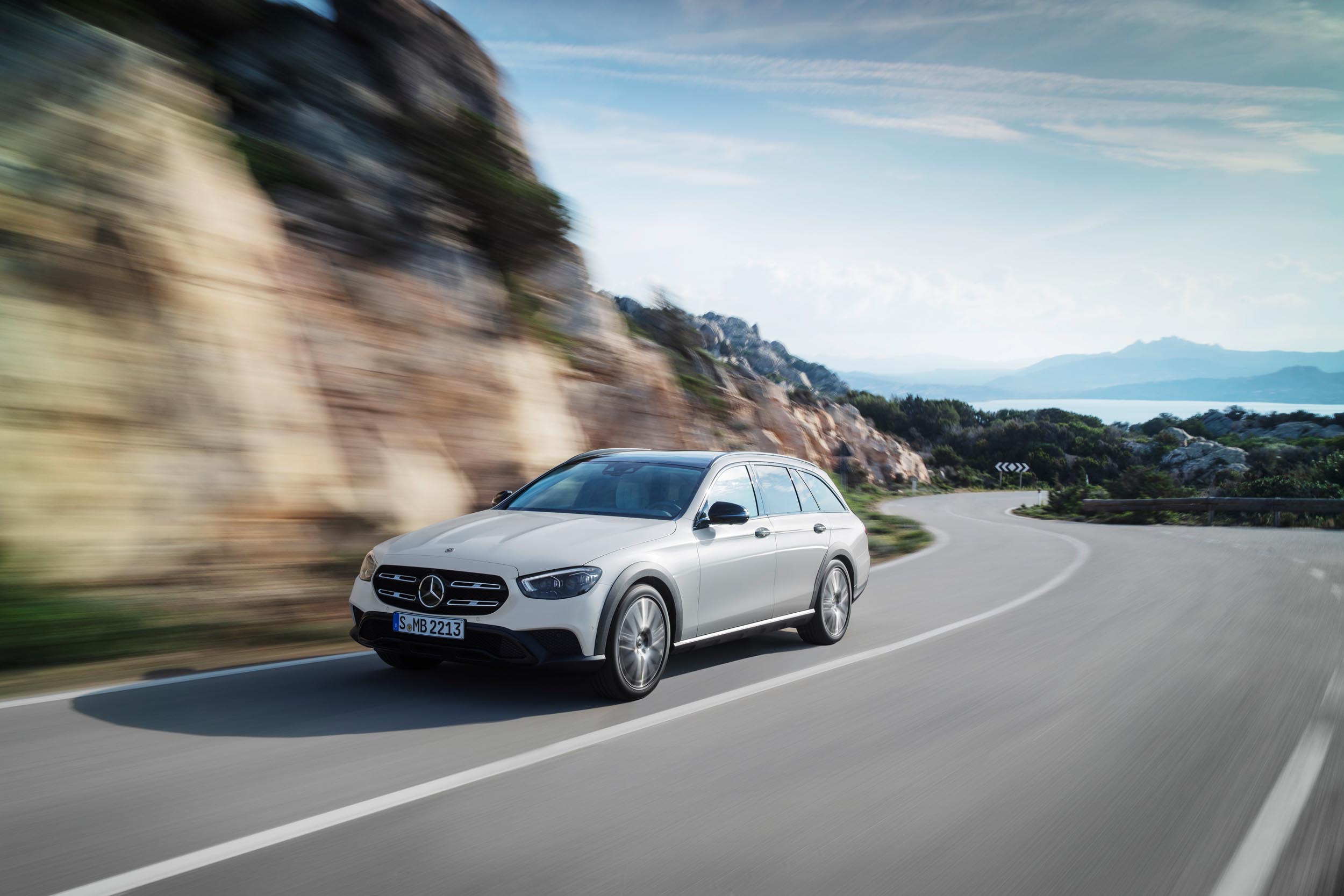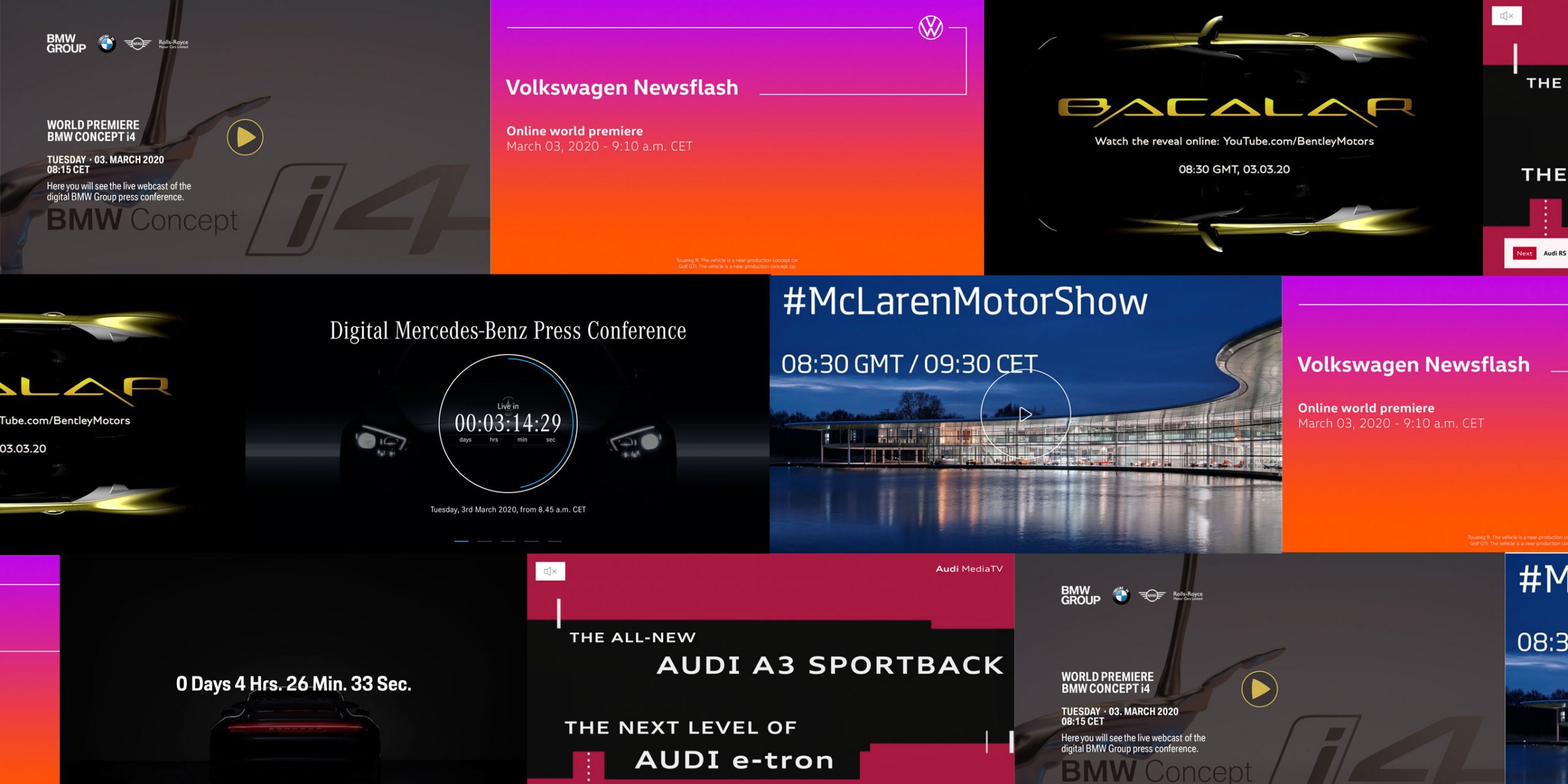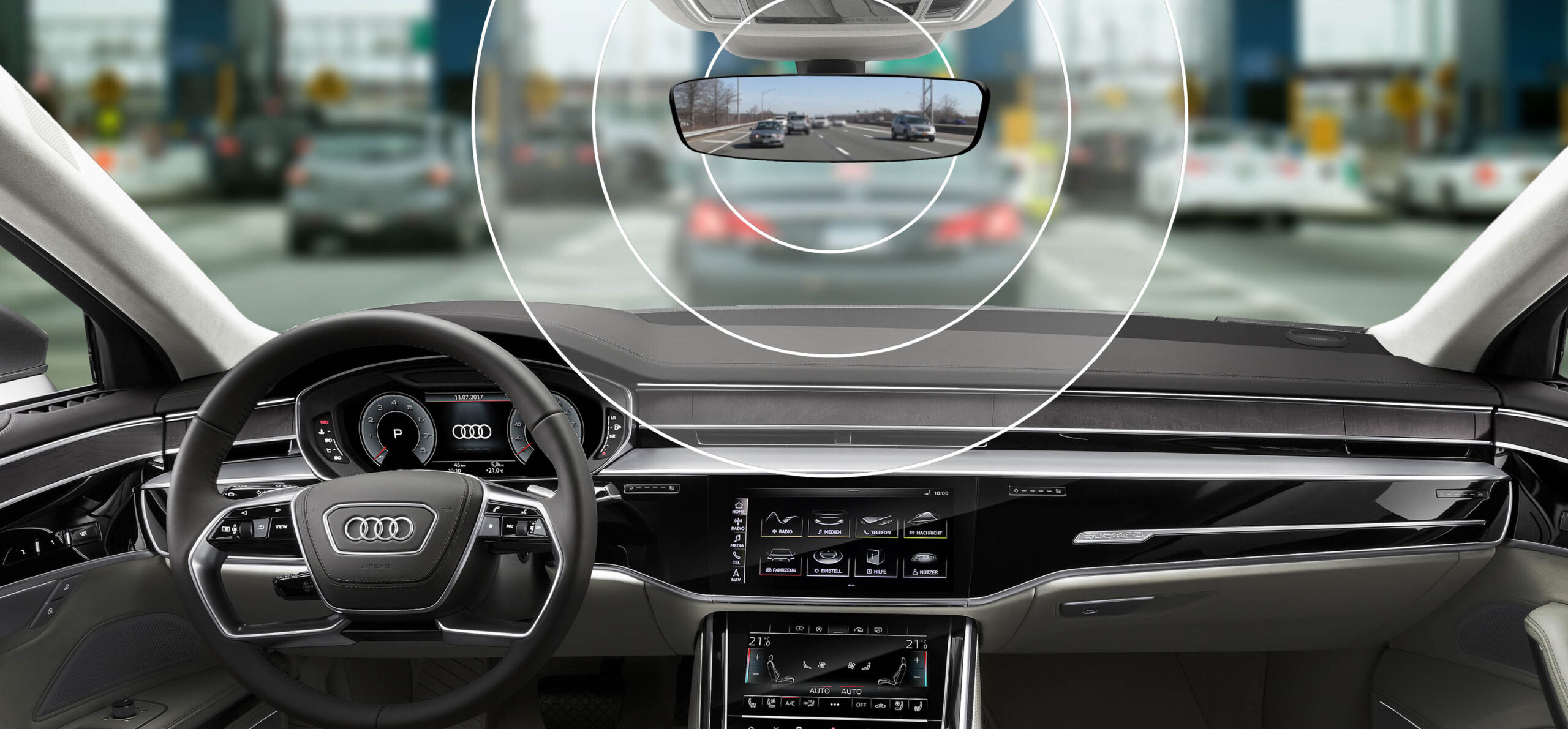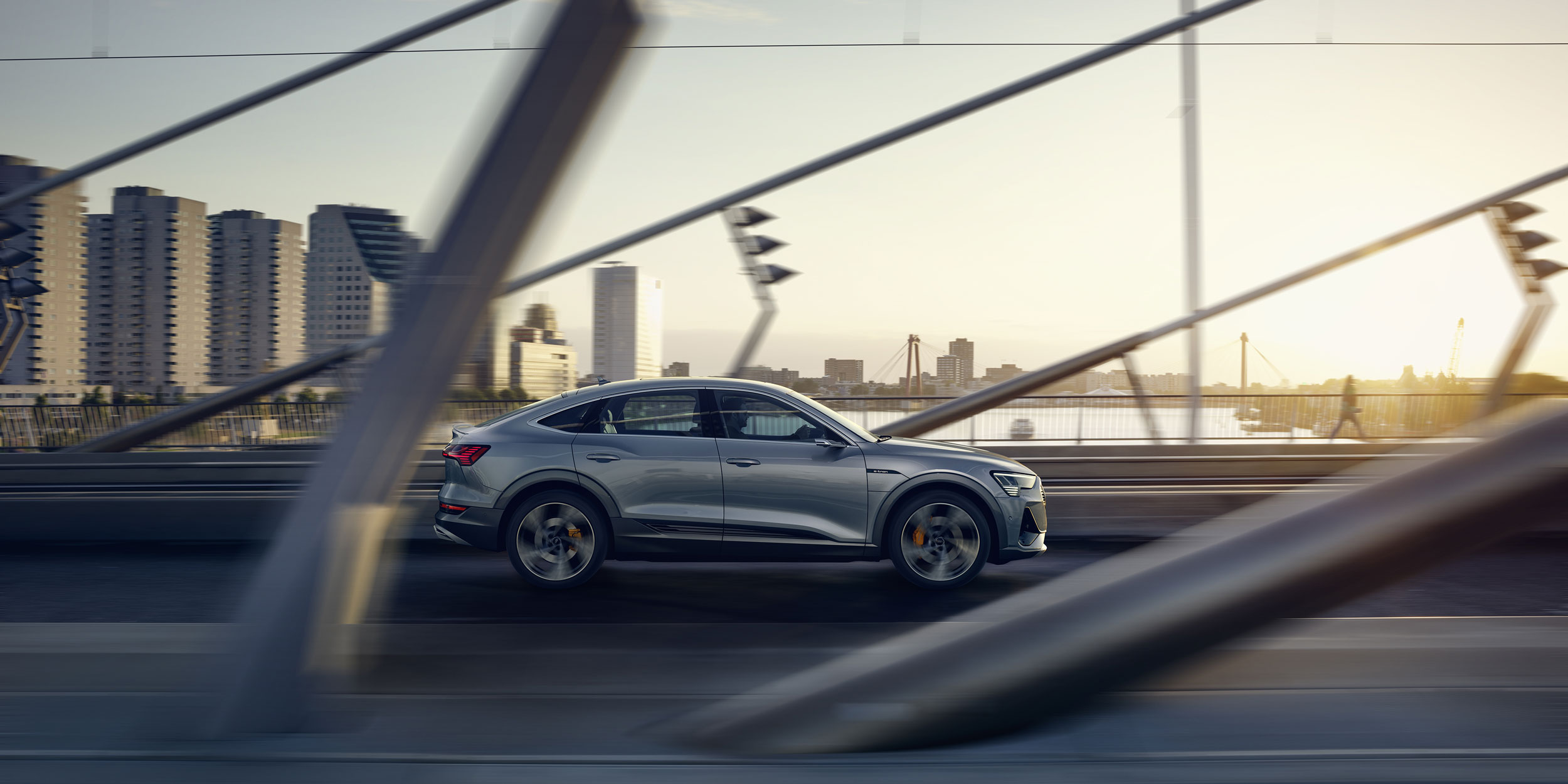The new E-Class: Intelligence is getting exciting
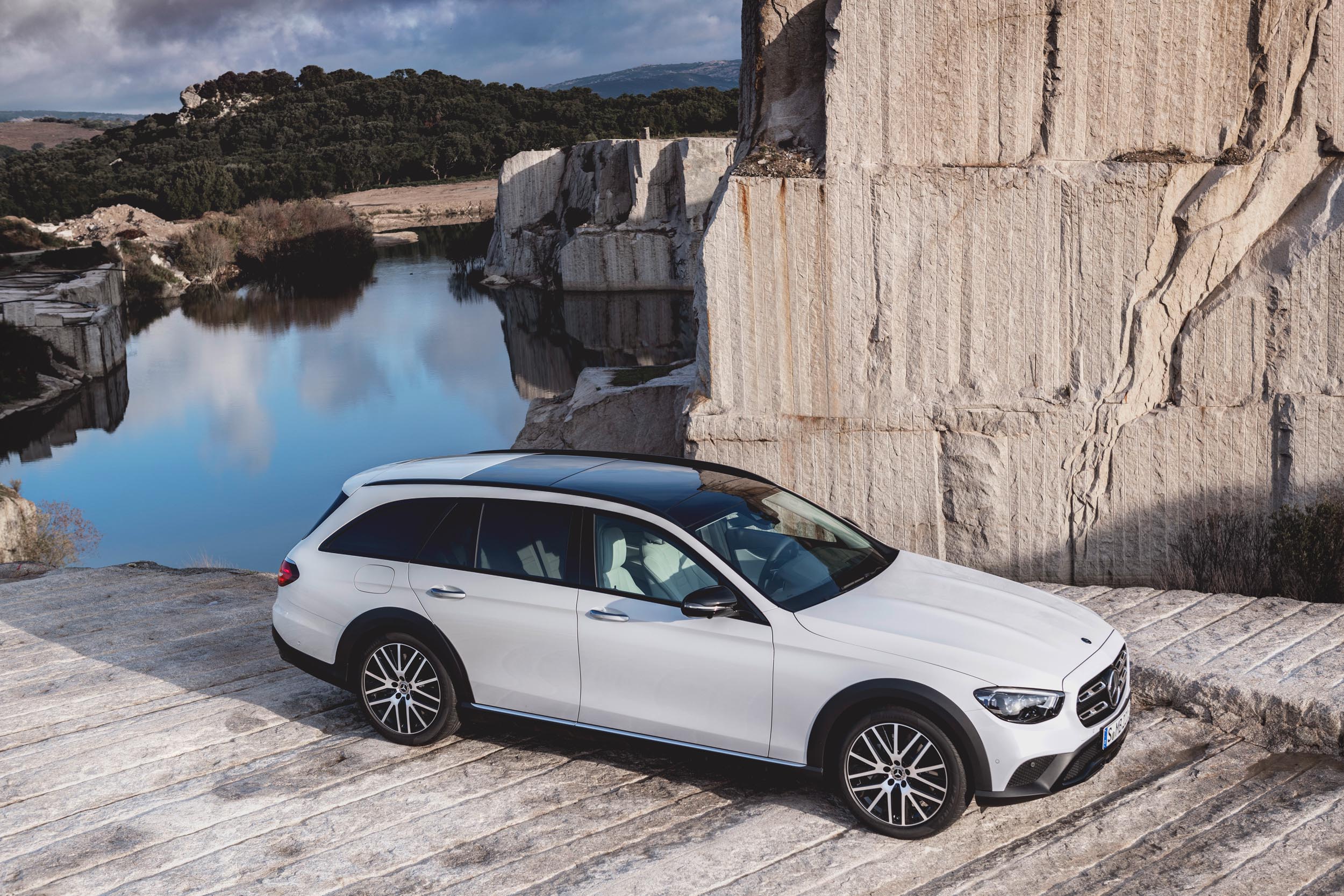
Words and photos courtesy of Mercedes-Benz
UK information
- Due to go on sale in May
- First deliveries expected late summer
- UK pricing and specification is still to be confirmed
STUTTGART, Germany — Automotive intelligence is now getting exciting and dynamic: E-Class Saloon and Estate are the first representatives of the thoroughly updated model series and will celebrate their premières at the Geneva Motor Show (5 to 15 March 2020). Both models will arrive in the showrooms of our European dealers in summer 2020. The long-wheelbase version of the Saloon (China), as well as the Coupé and Cabriolet, will follow soon thereafter.
With over 14 million Saloon and Estate models delivered since 1946, the E-Class is the best-selling model series in the history of Mercedes-Benz. It is perceived by many as the “heart of the brand”. The tenth generation of the E-Class set styling trends in 2016 with its clean yet emotionally appealing design and an exclusive, high-quality interior. The wealth of innovations such as in the area of the driving assistance systems also was characteristic. This emotionally appealing and at the same time intelligent combination is extremely successful: to date, more than 1.2 million customers around the world have bought a current-generation E-Class Saloon or E-Class Estate.
Here the key facts about the refresh:
- More dynamic design
- Avantgarde Line as the new basic specification for the exterior
- Redesigned front headlamps (full-LED headlamps as standard, optionally available MULTIBEAM LED headlamps)
- Redesigned tail lamps
- Redesigned radiator grille and front bumper
- Next-generation driving assistance systems, including:
- New steering wheel generation with capacitive hands-off detection
- Active Distance Assist DISTRONIC with route-based speed adjustment
- Active Stop-and-Go Assist
- Active Steering Assist
- Active Brake Assist; in the Driving Assistance Package now also with turning manoeuvre function
- Active Blind Spot Assist – now also with exit warning
- Parking Package in conjunction with 360° camera: newly expanded side view and for the first time automatic parking not only in parallel and end-on parking spaces, but also on marked areas.
- Even more comfort in the interior
- Two digital screens as standard (2 x 10.25-inch, bonded), optional Widescreen cockpit with two 12.3-inch displays)
- MBUX with LINGUATRONIC voice control (standard) and augmented reality
- Interior Assistant
- ENERGIZING comfort control with ENERGIZING COACH and PowerNap (in plug-in hybrids)
- ENERGIZING seat kinetics
- E as in efficiency: electrification of the powertrain
- Seven plug-in hybrids as Saloon and Estate models, petrol and diesel, with rear-wheel or all-wheel drive
- Electrified models for the first time also for the US market
- New M 254 engine: two-litre, four-cylinder petrol engine with ISG (Integrated Starter-Generator) and 48-volt on-board electrical system, rated output: 200 + 15 kW, innovative segment turbocharger with flow connection, electric additional compressor (eVZ), NANOSLIDE® coated cylinder barrels, CONICSHAPE® cylinder bore, CAMTRONIC for controlling the intake valves
- Additional engine variants and off-road drive modes for the All-Terrain
- URBAN GUARD:
- New comprehensive category of products and options
- Intelligent interlinking of hardware and digital solutions for protection against theft and damage
MORE DYNAMIC DESIGN
The enhanced dynamics and the upgrade of the E-Class are reflected in the model range: Now the entry-level model already comes with the sporty Avantgarde Line exterior. As a result, the base model of the EClass features a central star at the front for the first time. The new front end with increased chrome content plays a role in the fresh appearance: The grille of the Avantgarde Line was redesigned with two chrome louvres and vertical high-gloss black struts. Chrome and high-gloss black trim elements in the front bumper underscore the sporty and elegant appearance. The likewise available Exclusive Line lives up to its name: The special grille, the upright star on the bonnet and the large chrome elements in the front bumper emphasise this positioning.
The AMG Line with a new bumper in the style of the AMG Performance models looks even sportier. In addition, Avantgarde, AMG Line and All-Terrain feature a bonnet with power domes. The E-Class features all-LED headlamps as standard. MULTIBEAM LED headlamps including ULTRA RANGE high beam are available as an option.
The designers also updated the Saloon’s rear end with a new bumper, split tail lamps and a new boot lid. The inner design of the tail lamps was revised for all models.
The All-Terrain is visually more similar to the SUV models. In addition, signature All-Terrain components such as the radiator grille or the stylised skid plate now sport a mirror chrome finish rather than the previous silver shadow hue.
The three new paint colours available for the E-Class as part of the model refresh go by the names high-tech silver, graphite grey metallic and mojave silver. The wheel line-up has also been expanded and now includes aero wheels, which also contribute to saving fuel and thus to sustainability.
New appointment colours and materials upgrade the interior. These include the new colour combinations magma grey/neva grey (Avantgarde), black/nut brown (Exclusive) and magma grey/macchiato beige (Exclusive), and trim in open-pore silver ash wood, burr walnut fondant, brushed aluminium and aluminium with a carbon grain.
The seats combine the hallmark Mercedes-Benz long-distance suitability with avant-garde design. The adaptive driver’s seat adjustment is particularly convenient: When the height of the body is entered on the media display or via Mercedes me, the seat automatically moves into a usually fitting position, which only needs to be fine-tuned by the driver.
The design of the front seats accentuates the sporty aura of the interior. They offer strong lateral support without compromising on comfort. The seat contour follows the pronounced side bolsters and, depending on the specification, the centre section has sporty transverse or modern longitudinal seams. The colours of the centre sections of the seat backrest and cushion are matched to the overall sculpture of the seats. Numerous material combinations ranging from fabric to ARTICO man-made leather to embossed leather to Nappa leather with diamond quilting are possible.
NEXT-GENERATION DRIVING ASSISTANCE SYSTEMS: BETTER ASSISTANCE IN TAILBACKS AND WHEN PARKING
The new E-Class has the latest generation of Mercedes-Benz driving assistance systems providing cooperative support to drivers. This results in an especially high level of active safety: Saloon and Estate are able to react if the driver doesn’t. The hands-off recognition now works on a capacitive basis. This enhances user-friendliness when driving in semi-automated mode. Because to inform the assistance systems that the driver still has control of the E-Class, it is sufficient for the driver to hold the steering wheel. A steering moment – that is to say a slight steering movement – was previously required as feedback. The new steering wheel (see next chapter for details) features a pad with the appropriate sensors in the rim. These register whether the driver is holding the wheel. If the system detects that the driver does not have their hands on the steering wheel for a certain time, a warning cascade is started, which finally activates Emergency Brake Assist if the driver continues to be inactive.
As standard, the E-Class comes with Active Brake Assist, which in many situations is able to use autonomous braking to prevent a collision or mitigate its severity. The system is also able to brake for stationary vehicles and crossing pedestrians at typical city speeds and even to prevent collisions, depending on the situation. As part of the Driving Assistance Package, this is now also possible when turning off across the oncoming lane.
Some Intelligent Drive functions can optionally be added to the Driving Assistance Package. They include Active Speed Limit Assist, which uses map data and information from Traffic Sign Assist to respond to changes in the speed limit. Route-based speed adjustment ahead of bends, roundabouts, toll stations, T-junctions as well prior to turning off/exiting motorways/expressways is also included in the scope of delivery. When the driver switches on Active Distance Assist DISTRONIC with route-based speed adjustment, the E-Class is now even able to respond to data from LiveTraffic Information. Ideally, this happens even before the driver or the radar and camera sensors are able to detect a traffic obstruction. When a tailback is detected, the speed is reduced to approx. 100 km/h as a precaution unless the driver deliberately decides otherwise.
When driving in a tailback on the motorway, Active Stop-and-Go Assist is largely able to perform the tasks of keeping in lane and maintaining the safety distance with a high level of availability at speeds up to around 60 km/h. The vehicle can restart automatically up to one minute after coming to a stop. On multi-lane roads, Active Steering Assist is able to support the driver with the emergency corridor function, which causes the vehicle to stay off-centre in the lane. On motorways, at speeds under 60 km/h, the vehicle refers to detected lane markings and applies swarm intelligence to take its bearings from vehicles in the surrounding area. If none are detected, the E-Class takes its bearings from the vehicle ahead as before.
Active Blind Spot Assist with exit warning offers enhanced protection when getting out of the car. It is able to respond to vehicles in the blind spot as well as in the critical area with an active brake intervention. When the vehicle is stopped, the system can now also warn the passengers visually in the exterior mirror before they get out if a vehicle, even a bicycle, is driving past in the critical area. If the driver tries to use the door handle at this moment, an additional audible warning will sound and the ambient door lighting will start to flash red. It detects passing road users moving at a speed of more than 7 km/h. The function is also available when the vehicle is stationary and up to three minutes after the ignition has been switched off.
Active Parking Assist with PARKTRONIC and 360° camera makes it possible to enter and leave parking spaces automatically. The system facilitates the search for and selection of a parking space as well as entering and leaving (if the vehicle was parked automatically) parallel and end-on parking spaces or garages. For the first time, the new E-Class is able to recognise and use parking spaces which are only marked as areas on larger sites, for example. The 360° camera transmits an even more realistic image to the media display, which includes an expanded side view. When leaving a parking space, the system is able to warn of traffic crossing behind the vehicle and can apply the brakes in case of doubt.
EVEN MORE COMFORT IN THE INTERIOR: MBUX, ENERGIZING COMFORT CONTROL WITH “POWERNAP”
The E-Class is fitted with an entirely new steering wheel as part of the model update. It is available in three versions: as an all-leather steering wheel, in a wood-leather combination and in a supersport version. The control surfaces sport a high-gloss black finish, while the trim elements and surrounds have a silver shadow finish. The instrument cluster and the media display are controlled by swiping along the Touch Control buttons. The operating principle of the Touch Control buttons changes from optical to capacitive. A mechanical system was no longer needed, and the touch surfaces also are less susceptible to fingerprints. Whether the driver has control of the steering wheel is now determined by means of capacitive detection (see chapter on the driving assistance systems).
The new E-Class is equipped with the latest generation of the MBUX multimedia system (Mercedes-Benz User Experience). As standard, it includes two large 10.25 inch/26 cm screens, which for a widescreen look are arranged side by side. Two 12.3 inch/31.2 cm screens are optionally available. The information in the instrument cluster and on the media display is easily legible on the large, high-resolution screens. An emotive presentation with brilliant graphics underlines the comprehensibility of the intuitive control structure.
Depending on mood or to match the particular interior, the user has a choice of four different styles:
- Modern Classic is a further development of the classic display style in an elegant and light material mix.
- Sport has a high-tech turbine look with decidedly sporty black/yellow contrasts.
- Progressive stages the digital realm in reduced form.
- In the Discreet style, all displays are reduced to the absolutely necessary.
Other strengths include touchscreen control of the media display as standard and the use of augmented reality technology for the navigation display when the navigation function is active: A video image of the surroundings is enhanced with helpful navigation information: arrows or house numbers are automatically superimposed directly onto the image in the media display, for example. The system also assists the driver at traffic lights: If the E-Class is the first car at the lights, the current traffic light situation is superimposed. In this way, this new function is a particular help when there is an unfavourable line of sight to the traffic lights.
The optional MBUX Interior Assistant allows intuitive, natural operation of various comfort and MBUX functions also by movement recognition. When a hand approaches the touchscreen or the touchpad on the centre console, the media display changes, and individual elements are highlighted, for example.
ENERGIZING seat kinetics is another new feature in the E-Class. It supports beneficial changes in seated posture by means of minute movements of the seat cushion and backrest when on a journey.
ENERGIZING comfort control networks various comfort systems in the vehicle, and uses musical and lighting moods plus a number of massage modes for a wide range of feel-good programmes. The “PowerNap“ programme is available in the plug-in hybrids, which is useful when taking a break from driving at a rest area or when charging the battery en route, for example. The programme has three phases – falling asleep, sleeping, waking – and can enhance the performance of the driver and provide new energy.
The ENERGIZING COACH is based on an intelligent algorithm, and recommends one of the programmes suited to the individual and situation. If a Garmin® wearable is integrated, personal values such as stress level or quality of sleep optimise the accuracy of the recommendation. The aim is for passengers to feel well and relaxed even during demanding or monotonous journeys.
URBAN GUARD: Intelligent interlinking of hardware and digital solutions for protection against crime
Under the name URBAN GUARD, Mercedes-Benz is introducing a new comprehensive category of products and options for all model series. It bundles existing and future products for the protection of the vehicle against vandalism and crime. With URBAN GUARD – an intelligent interlinking of hardware and digital solutions – Mercedes-Benz satisfies the worldwide rise in customer demand for security and property protection.
Two option packages, URBAN GUARD Vehicle Protection and URBAN GUARD Vehicle Protection Plus, are planned from mid-2020. Some URBAN GUARD products will also be available from the Mercedes me online store for subsequent activation.
In conjunction with Mercedes me, the two packages URBAN GUARD Vehicle Protection and URBAN GUARD Vehicle Protection Plus enable all-round monitoring of the parked vehicle. URBAN GUARD comprises an anti-theft alarm system, tow-away protection with visual and audible warning in case of a detected change in position, an alarm siren, interior monitoring (triggers in case of movements in the interior) as well as a pre-installation for theft and parking collision detection. In case of the latter, the vehicle sensors register when the parked and locked vehicle is bumped or towed – or when someone attempts to break into the vehicle. If the service is active, the driver is informed via the Mercedes me app. By means of push notification, he finds out, for example, how severe and in which area of the vehicle the parking damage is. As soon as the vehicle is restarted, this information also is shown once on the media display.
In addition, URBAN GUARD Vehicle Protection Plus is able to pinpoint the location of stolen vehicles. In case of theft, this also makes it possible to recover the vehicle even if the thief has deactivated the vehicle tracking function, for example. This takes place in cooperation with police.
E AS IN EFFICIENCY: ELECTRIFICATION OF THE POWERTRAIN
The electrification of the powertrain takes another major step forward with the model update of the E-Class. Seven models are available as plug-in hybrids (diesel and petrol, Saloon and Estate, rear-wheel drive and all-wheel drive). The line-up of high-efficiency, low-emission and powerful petrol engines will cover a range from 115 to 270 kW, while the spectrum of diesel vehicles spans from 118 to 243 kW.
For the first time, a four-cylinder petrol engine (M 254) with second-generation integrated starter-generator (ISG) producing up to 15 kW of additional output and 180 Nm more torque will complement the engine range. Models equipped with this engine will have a 48-volt on-board electrical system. Thanks to energy recovery and the ability to “glide” with the engine switched off, the petrol engine is highly efficient.
In the M 254, Mercedes-Benz has for the first time combined all the innovations of the modular engine family of 4- and 6-cylinder petrol and diesel units in a single engine. They include the NANOSLIDE® cylinder coating, the CONICSHAPE® cylinder honing (trumpet honing) and the emission control system positioned directly at the engine. A completely new feature is the segment charger with flow connection, an advancement of the twin-scroll technology for even more instantaneous response of the forced induction system. When needed, an electric additional compressor quickly builds up the charge pressure – especially at low combustion engine speeds – and thereby contributes to a highly dynamic throttle response.
The in-line six-cylinder petrol engine (M 256), available for the first time in the E-Class, is also fitted with an ISG. The engine line-up is rounded off by the six-cylinder diesel (OM 656). This engine and the OM 654 four-cylinder version feature an expanded emission control system.
Its components include
- a close-coupled NOX storage catalytic converter for reducing the nitrogen oxides
- a DPF (diesel particulate filter with special coating for reducing also the amount of nitrogen oxides)
- an SCR catalyst (selective catalytic reduction; with metered injected quantity of AdBlue) as well as
- an additional SCR catalyst in the underbody of the vehicle with separately metered injected quantity of AdBlue
The 9G-TRONIC transmission has also been advanced for the adaptation of the second-generation ISG and in a first step is used with the four-cylinder engine. The electric motor, the power electronics and the transmission cooler have now moved into or to the transmission. Previously required cables are eliminated, which offers advantages with regard to installation space and weight. This makes it easy to combine the transmission with the different combustion engines. In addition, the efficiency of the transmission was increased. Amongst other things, the optimised interplay with the electric auxiliary oil pump reduces the delivery rate of the mechanical pump by 30 percent. Furthermore, it uses a new generation of the fully integrated transmission control with multi-core processor and new construction and joining technology. In addition to the increased computing power, the number of electric interfaces has been drastically reduced, and the weight of the transmission control has been cut by 30 percent.
THE HEART OF THE BRAND: THE SUCCESS STORY OF THE E-CLASS
Already in the early 20th century, vehicles positioned below the top-of-the-range and luxury classes, yet above the compact class, were an essential part of the model portfolio of Mercedes-Benz and the brands that came before. The first Mercedes models, which came to market in 1901 and established the concept of modern automotive construction, were already available in different versions and targeted different customers – including those who would choose a vehicle of the upper mid-range segment today.
With over 14 million units delivered since 1946, the E-Class is the best-selling model series in the history of Mercedes-Benz. It is perceived by many as the “heart of the brand”. Customers of the E-Class are among the most loyal fans of the Mercedes star: Eight out of ten customers of the E-Class Saloon remain loyal to Mercedes-Benz when buying the next vehicle.
When production started up again after the Second World War, the first car to go into production was the 170 V model, originally introduced in 1936, initially as a vehicle for rescue services, police, commerce and trades. It was soon followed by a saloon version as the first post-war Mercedes-Benz passenger car in 1947.
The 180 model (W 120) of 1953 with unibody and “Ponton” shape set new technical as well as formal trends. It was followed in 1961 by the four-cylinder versions of the “Fintail” model series (W 110) – the first model with safety body and crumple zones. The next major step came seven years later in the form of the “Stroke Eight” (model series W 115/114). At the same time, with the arrival of the first coupé model, this marked a widening of the scope of available body variants. Its success was surpassed yet again by the successor model series 123 starting in 1976. It was also produced in an estate version – with which Mercedes-Benz set standards for the estate car as a family-friendly lifestyle and recreational vehicle. The 124 series of the years 1984 to 1995, which was also available as a four-seater cabriolet, was first given the name E-Class in mid-1993.
The “four headlamps” face and its innovative technology were the characteristic features of the 210 model series launched in 1995. The E-Class of model series 211 was launched in early 2002. In 2009 it was followed by the 212 series (Saloon and Estate) and the 207 series (Cabriolet and Coupé), and from 2010 the E-Class Saloon also became available as the V 212 long version produced in and for China. In 2016, Mercedes-Benz launched the E-Class of model series 213. Starting in 2017, the Estate was also available as an All-Terrain version for the first time.
2019: E-CLASS SETS NEW SALES RECORD IN THE ASIA-PACIFIC REGION
More than 351,000 E-Class Saloon and Estate vehicles were delivered to customers in the third full year the new generation was on the market.The significance of China as the most important market for the saloons from
Mercedes-Benz is clearly evident in the E-Class: The long-wheelbase version of the E-Class Saloon set a new record and saw double-digit growth in sales there. One out of every two E-Class Saloons sold worldwide in 2019 was delivered as a long-wheelbase version in China. In South Korea, the E-Class Saloon recorded the highest one-year sales to date.
MODERN DIGITAL PRODUCTION OF THE NEW E-CLASS
The E-Class Saloon and Estate are produced in the Mercedes-Benz Sindelfingen Plant and come off the same line as the Mercedes-Benz CLS and the Mercedes-AMG GT 4-door Coupé in a flexible production system. The production uses modern digital technologies – from smartphones for locating vehicles on the line and additive manufacturing methods for producing equipment to digital shop floor management, which involves various key indicators being managed in one system. The production also uses the Ubisense system. This system locates the fastening tools an employee requires in the assembly process and provides the employee with the necessary information about a specific vehicle. In this way, only the tools actually required for working on the vehicle are activated. The employee receives optimal support in the assembly process.
The Sindelfingen plant is the centre of competence for passenger cars of the upper and luxury segment as well as the lead plant for the S- and E-Class. The location employs more than 35,000 people. In addition to the aforementioned models, Mercedes-Benz produces the S-Class Saloon, Coupé and Cabriolet, Mercedes-Maybach S-Class as well as the Mercedes-AMG GT family there. Going forward, this will also be the location for the production of electric vehicles of the new EQ product and technology brand. Starting in 2022, the Mercedes-Benz Sindelfingen Plant will be fully CO2-neutral. Furthermore, “Factory 56”, one of the world’s most cutting-edge automobile production facilities, is currently under construction at the location.
